Mars Rover
description: space exploration vehicle designed to move across the surface of Mars
94 results
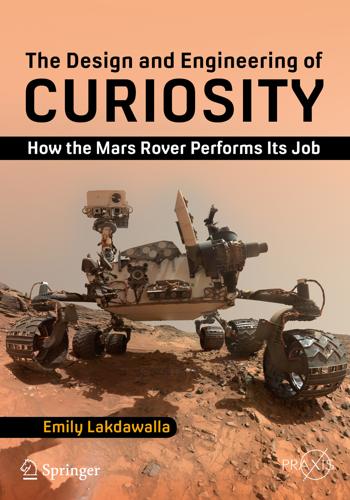
The Design and Engineering of Curiosity: How the Mars Rover Performs Its Job
by
Emily Lakdawalla
Published 5 Mar 2018
Springer Praxis Books Space Exploration Emily Lakdawalla The Design and Engineering of Curiosity How the Mars Rover Performs Its Job Emily LakdawallaThe Planetary Society, Pasadena, CA, USA Springer Praxis Books ISBN 978-3-319-68144-3e-ISBN 978-3-319-68146-7 https://doi.org/10.1007/978-3-319-68146-7 Library of Congress Control Number: 2017963344 © Springer International Publishing AG, part of Springer Nature 2018 This work is subject to copyright. All rights are reserved by the Publisher, whether the whole or part of the material is concerned, specifically the rights of translation, reprinting, reuse of illustrations, recitation, broadcasting, reproduction on microfilms or in any other physical way, and transmission or information storage and retrieval, electronic adaptation, computer software, or by similar or dissimilar methodology now known or hereafter developed.
…
It is certain to be complete as of sol 1514, and as complete as possible through sol 1800. Now that I’ve written the reference book I needed, I can proceed with the second book, which will cover the mission’s science, from landing site selection, through pre-landing mapping, the operational adventure, and the science results. Look for Curiosity and Its Science Mission: A Mars Rover Goes to Work in 2019. Acknowledgments This book would not exist without the generous assistance of numerous members of the Mars Science Laboratory team and the wider space science community. In particular, Ashwin Vasavada kept me updated in frequent telephone conversations, replied quickly to countless emails, and read every word of the first draft.
…
It would be able to explore a much wider range of latitudes, and it would be able to operate year-round, rather than resting through the winter. However, the nuclear power design available in 2002 – the General Purpose Heat Source RTG used for Galileo, Ulysses, Cassini, and New Horizons – was not suitable for a Mars rover. It was too massive (more than a meter long and weighing 57 kilograms). It produced more power than needed (285 watts). Most importantly, its electricity-generating thermocouples would fail if carbon dioxide from Mars’ atmosphere were to infiltrate its container. Anticipating these problems, the Department of Energy and NASA were already in discussions to develop a new type of radioisotope power supply that would be appropriately sized for the lower mass and power of modern spacecraft, one that could also function in an atmosphere.
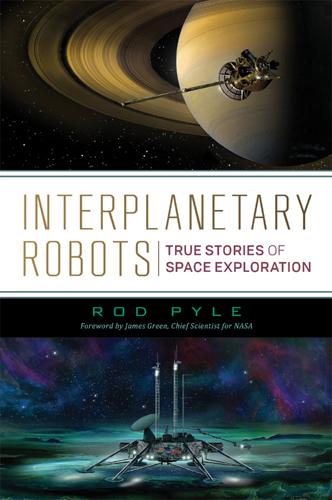
Interplanetary Robots
by
Rod Pyle
It is called, simply, “The Pulse,” and runs from the floor to the lobby ceiling, a twenty-foot pillar of LED light strips in a cylindrical shape, about five feet across. It doesn't look like much at first—arrive before it starts up, and you stand there, wondering what this set of gray strips running floor-to-ceiling next to the Mars rover are. Then it suddenly bursts into cold white light, a massive wave of it, moving from top to bottom or the reverse. The pulses of light continue, then reverse, then repeat. Eventually, tilting your head a bit, you make out words spelled in these fleeting bursts—“VOYAGER” or “ODYSSEY”—and realize that what you are looking at is a visual representation of communications between JPL and its many robotic explorers throughout the solar system and, thanks to Voyager, beyond.
…
Since the first Apollo landings were envisioned to be as early as 1967 or 1968 at the time, the robots had to get there early enough to inform the decision-makers working on the manned program. In a welcome shift from Ranger, the very first Surveyor successfully landed on the moon. It was launched on an Atlas rocket, the repurposed nuclear missile that had also launched John Glenn into orbit in 1962. Like the Mars rovers that would come decades later, the Surveyors did not go into lunar orbit before landing, but were sent in a trajectory that aimed right at their landing spot on the moon. Fig. 9.1. A Surveyor mockup being tested on Earth. It would have looked similar once it landed on the moon, sans the dead grass in the background.
…
The assembly of the multiple still photos is obvious—NASA ordered Scotch tape and glue in bulk in those days. Image from NASA/JPL-Caltech. All told, the Surveyors operated for an accumulated seventeen months on the moon and returned 87,000 images for examination. While modest compared to the results gleaned from modern Mars rovers or the Voyager program, some of which have operated for a decade or more, for the time the Surveyors were a notable achievement in command and control, as well as hardware capability. The stage was set for a manned lunar landing in 1969, but that was something for other departments of NASA to set their sights on.
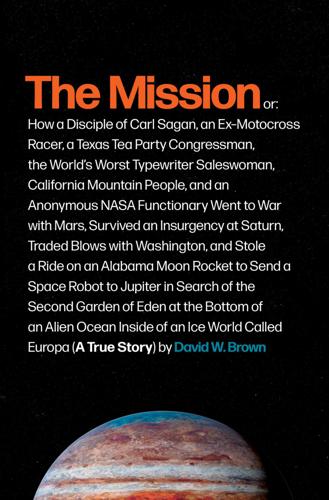
The Mission: A True Story
by
David W. Brown
Published 26 Jan 2021
Tobin, “Mixed Signals from NASA About Fate of Mars Rover,” CNN, last modified March 24, 2008, http://edition.cnn.com/2008/TECH/space/03/24/nasa.mars.rover. See also K. Cowing, “Give Us What We Want or We’ll Shoot the Cute Little Rover,” NASAWatch.com, last modified March 25, 2008, http://www.nasawatch.com/archives/2008/03/give-us-what-we-want-or-well-shoot-the-cute-little-rover.html. See also J. Foust, “Mars Rover Funding Cuts: Will There Be a Backlash?,” Space Politics, last modified March 24, 2008, http://www.spacepolitics.com/2008/03/24/mars-rover-funding-cuts-will-there-be-a-backlash. 259.Stern and Grinspoon, Chasing New Horizons, 142.
…
Louis, Susan studying physics, and Curt, planetary science. His graduate advisor was Ray Arvidson, the deputy lead on proposals for a pair of Mars rovers—the same robots that Curt would one day add to his portfolio as program scientist at NASA headquarters. Ray expected his students to get real-world experience in addition to doing research. (You were going to do research.) Thus spake Ray: Your day job is your research. Your night job is teaching assistant. Your sleep job is Mars rover operations. So to give him that experience, Arvidson and his colleagues would say, Hey, Curt, we need you to look over this part of the Mars proposal and tell us what you think.
…
—ILIAD Contents Cover Title Page Dedication Epigraph Dramatis Personæ Chapter 1: The Course of Icy Moons Chapter 2: Situations Vacant Chapter 3: The Dark Ages Chapter 4: The Center of the Universe Chapter 5: Station Chapter 6: Maestro Chapter 7: The Death Star Chapter 8: Auto-da-fé Chapter 9: Grand Theft Orbiter Chapter 10: This Earth of Majesty, This Seat of Mars Chapter 11: E Pur Si Muove Chapter 12: The Baltimore Gun Club Chapter 13: Clipper Chapter 14: Princess-Who-Can-Defend-Herself Chapter 15: Ocean Rising Chapter 16: Train Driver Chapter 17: Step Forward, Tin Man Chapter 18: One Inch from Earth Acknowledgments Notes Index Photo Section About the Author Copyright About the Publisher Dramatis Personæ Robert Pappalardo, a planetary scientist Louise Prockter, a geomorphologist Galileo, a spacecraft orbiting Jupiter from 1995 to 2003 Carl Sagan, an astrophysicist Viking 1 } Two Mars probes, 1976 to 1982 Viking 2 Edward Weiler, the head of NASA science missions Curt Niebur, a program scientist at NASA headquarters Karla Clark, an engineer at Jet Propulsion Laboratory Wernher von Braun, a rocket scientist Daniel Goldin, the NASA administrator from 1992 to 2001 Pathfinder, a Mars rover mission in 1997 James Green, the head of planetary science at NASA Fran Bagenal, a planetary scientist Ralph Lorenz, a planetary scientist Jonathan Lunine, a planetary scientist Huygens, a probe that landed on Titan in 2004 Cassini, a spacecraft orbiting Saturn from 2004 to 2017 Susan Niebur, an astrophysicist John Culberson, a U.S. congressman from Texas Todd May, a materials engineer Alan Stern, a planetary scientist and NASA science missions lead MESSENGER, a spacecraft orbiting Mercury from 2011 to 2015 Mike Griffin, the NASA administrator from 2005 to 2009 Don Blankenship, a geophysicist Ron Greeley, a geologist Cynthia Greeley, a historian Europa Orbiter, a spacecraft that never was, in 1999 JIMO, a Europa nuclear spacecraft that never was, in 2003 Europa Explorer, a spacecraft that never was, in 2007 Jupiter Europa Orbiter, a spacecraft that almost was, in 2010 Europa Clipper, a spacecraft that will orbit Jupiter Mars Science Laboratory, a rover mission in 2012 Tom Gavin, an engineer Dave Senske, a planetary scientist Spirit } Two Mars rovers, landed in 2004 Opportunity Lori Garver, the deputy administrator of NASA from 2009 to 2013 Joan Salute, a program executive at NASA headquarters Barry Goldstein, an engineer Brian Cooke, an engineer Chapter 1 The Course of Icy Moons IT WASN’T ENOUGH TO MAKE THE STYROFOAM SOLAR system over his bed.
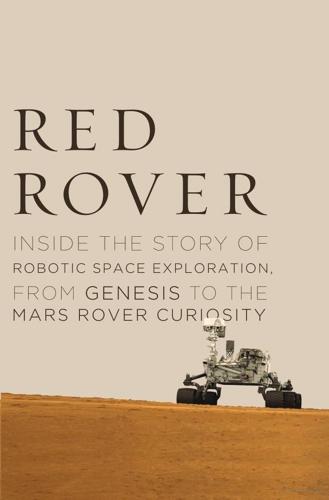
Red Rover: Inside the Story of Robotic Space Exploration, From Genesis to the Mars Rover Curiosity
by
Roger Wiens
Published 12 Mar 2013
This book was written by the JPL manager of the first Mars rover mission, which landed a toy-sized rover that lasted two months. A Traveler’s Guide to Mars, by William K. Hartmann, Workman Publishing Company, 2003, 450 pages. Hartmann gives the reader a tour of Mars, focusing on a number of diverse locations and why they are interesting. A number of sidebars provide additional human-interest details. Roving Mars: Spirit, Opportunity, and the Exploration of the Red Planet, by Steve Squyres, Hyperion, 2005, 422 pages. Steve was the project scientist for the second Mars rover mission. In this book he describes this JPL project and the first several months on Mars.
…
RED ROVER Inside the Story of Robotic Space Exploration, from Genesis to the Mars Rover Curiosity ROGER WIENS BASIC BOOKS A MEMBER OF THE PERSEUS BOOKS GROUP NEW YORK Copyright © 2013 by Roger Wiens Published by Basic Books, A Member of the Perseus Books Group All rights reserved. No part of this book may be reproduced in any manner whatsoever without written permission except in the case of brief quotations embodied in critical articles and reviews. For information, address Basic Books, 250 West 57th Street, 15th Floor, New York, NY 10107-1307. Books published by Basic Books are available at special discounts for bulk purchases in the United States by corporations, institutions, and other organizations.
…
Space—the final frontier—is being conquered by increasingly sophisticated robots. As you read this, some twenty such craft are trolling through interplanetary space or actively orbiting or driving on another planet or asteroid. Over the past fifteen years, robotic space exploration has enjoyed a huge renaissance, starting arguably with the first Mars rover, the puny 23-pound Sojourner. Mechanical creations from Earth are orbiting Mercury, Venus, the Moon, Mars, the asteroid Vesta, Jupiter, and Saturn; others are on their way to Pluto and to land on a comet; and three are on their way out of the solar system. One spacecraft landed on the tiny asteroid Eros, only about 10 miles across, and a European craft landed on Saturn’s largest moon, Titan.
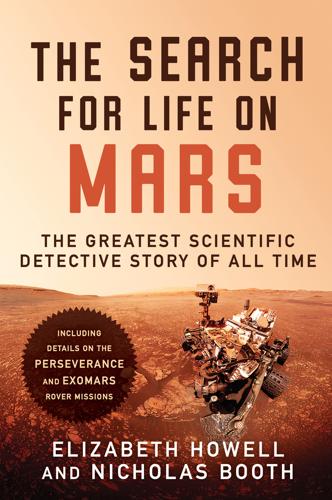
The Search for Life on Mars
by
Elizabeth Howell
Published 14 Apr 2020
A very fine review of the current understanding of water on Mars is by Ashwin Vasavada: “Our Changing View of Mars,” Physics Today, March 2017. For findings in Yellowknife Bay, see Kerr, R. A., “New Results Send Mars Rover on a Quest for Ancient Life,” Science, December 2013, and Ken Kremer, “Curiosity Celebrates 1st Martian Christmas at Yellowknife Bay,” Universe Today, 2014. The background on Spirit and Opportunity’s findings may be found in Koren, Marina, “NASA Mars Rovers Curiosity and Opportunity Are Having a Rough Year,” Atlantic, September 18, 2018, and Wall, Mike, “How NASA’s Opportunity and Spirit Rovers Changed Mars Exploration Forever,” Space.com, February 13, 2019.
…
See Wall, Mike, “Meet ‘Kazachok’: Landing Platform for ExoMars Rover Gets a Name,” Space.com, March 21, 2019; “ESA’s Mars Rover Has a Name, Rosalind Franklin,” ESA press release, February 7, 2019; “ExoMars Landing Platform Arrives in Europe with Name,” ESA release, March 21, 2019; Amos, J., “Mars: The Box Seeking to Answer the Biggest Questions,” BBC Online, May 17, 2019; Archer, Joseph, “Martian Robot Will Explore the Red Planet with Mind of Its Own,” Daily Telegraph, January 2, 2019; Hignett, Katherine, “Is There Life on Mars? This Rover Wants to Find Out,” Newsweek, May 19, 2018; Wilks, Jeremy, “Will ExoMars Be the Mission to Find Life on Mars?” Euronews, November 23, 2018; Wilks, J., “Mars Rovers: The Red Planet Welcomes Careful Drivers,” Engineering and Technology, May 25, 2017; and “Mars Doesn’t Need Our Microbes: How to Keep the Red Planet Pristine,” Discover, June 2019.
…
Euronews, November 23, 2018; Wilks, J., “Mars Rovers: The Red Planet Welcomes Careful Drivers,” Engineering and Technology, May 25, 2017; and “Mars Doesn’t Need Our Microbes: How to Keep the Red Planet Pristine,” Discover, June 2019. MOMA is described in detail in https://exploration.esa.int/web/mars; Todd, Iain, “Science Instruments Installed on UK-built Mars Rover Rosalind Franklin,” BBC Sky at Night magazine, August 22, 2019; “Moving on Mars,” ESA Feature, May 30, 2019; and Amos, J., “Rosalind Franklin Mars Rover Assembly Continued,” BBC News Online, August 27, 2019. The saga of the parachutes was covered in “ExoMars Parachute Testing Continues,” ESA website, “Our Activities,” August 12, 2019, and Rincon, Paul, “ExoMars: Parachute Test Failure Threat to Launch Date,” BBC News Online, August 13, 2019.

Think Like a Rocket Scientist: Simple Strategies You Can Use to Make Giant Leaps in Work and Life
by
Ozan Varol
Published 13 Apr 2020
Squyres, Roving Mars, 90. 21. NASA, Girl with Dreams Names Mars Rovers “Spirit” and “Opportunity,” (June 8, 2003) www.nasa.gov/missions/highlights/mars_rover_names.html. 22. Squyres, Roving Mars, 145. 23. Squyres, Roving Mars, 122. 24. The description of Spirit and Opportunity’s landing on Mars is based largely on Squyres, Roving Mars; University of California Television, “Roving Mars with Steve Squyres: Conversations with History,” video, YouTube, uploaded August 18, 2011, www.youtube.com/watch?v=NI6KEzsb26U&feature=youtu.be. 25. John Callas, “A Heartfelt Goodbye to a Spirited Mars Rover,” NASA, May 25, 2011, https://mars.nasa.gov/news/1129/a-heartfelt-goodbye-to-a-spirited-mars-rover. 26.
…
But the answers simply serve as a launch pad to discovery. They’re the beginning, not the end. Be careful if you spend your days finding right answers by following a straight path to the light switch. If the drugs you’re developing were certain to work, if your client were certain to be acquitted in court, or if your Mars rover were certain to land, your jobs wouldn’t exist. Our ability to make the most out of uncertainty is what creates the most potential value. We should be fueled not by a desire for a quick catharsis but by intrigue. Where certainty ends, progress begins. Our obsession with certainty has another side effect.
…
Every time you introduce complexity to a system, you’re giving it one more aspect that can fail. As the safety manager for Apollo 8 remarked, the spacecraft had 5.6 million parts, and “even if all functioned with 99.9 percent reliability, we could expect 5,600 defects.”41 Simplicity also reduces costs. The Atlas V rocket—which has taken many objects, including military satellites and Mars rovers, into space—uses up to three types of engines for different stages of flight.42 This complexity drives up the expenses: “To a first-order approximation,” Musk explains, “you’ve just tripled your factory costs and all your operational costs.” In contrast, SpaceX’s Falcon 9 has two stages with the same diameter and the same engines built from the same aluminum-lithium alloy.
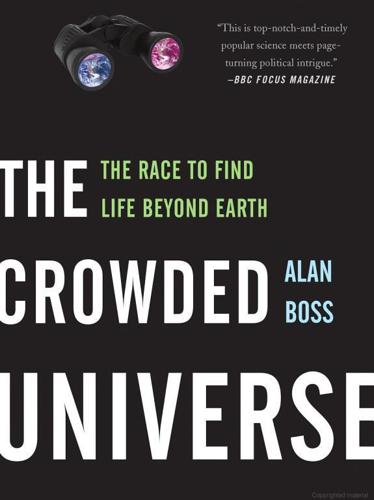
The Crowded Universe: The Search for Living Planets
by
Alan Boss
Published 3 Feb 2009
A letter was sent to the Mars Exploration Program office at JPL telling it to cut the budget for the Mars Exploration Rovers (MER), two robots that had been exploring the Martian landscape since January 2004. The Mars Rovers Mission was to be cut by $4 million in the current fiscal year, a 40% cut in the funds remaining in the fiscal year. The Mars Rovers team responded with the usual Washington Monument ploy. Cornell’s Steven Squyres, the MER principal investigator, stated that with a cut of that size, they would have to turn off one of the rovers, at least temporarily. Things might get even worse in the next fiscal year. SPACE.com reported the cuts with the eye-catching headline “Budget Cuts Could Shut Down Mars Rover,” something that would bring pain to nearly every sentient being who had been following the two wandering rovers for the last several years.
…
April 1, 2008 (April Fool’s Day)—The nasawatch.com web site posted a link to “Today’s Video,” showing Steve Squyres in a lively appearance on The Colbert Report as if it had just occurred the night before, even though the episode dated from June 7, 2006. Stephen Colbert had been relatively merciful with Squyres, actually letting him speak at times and highlighting a model of the Mars rovers sitting on the table between them. Griffin’s instincts had been right: if Comedy Central liked the Mars rovers, it was best not to touch the third rail on their track. On the same day, the WASP team announced the discovery of 10 new hot Jupiters, found by transits and confirmed by Doppler spectroscopy. The 10 new planets, named WASP-6 b though WASP-15 b, had all been found in just six months of work.
…
SPACE.com reported the cuts with the eye-catching headline “Budget Cuts Could Shut Down Mars Rover,” something that would bring pain to nearly every sentient being who had been following the two wandering rovers for the last several years. The rovers had been faithfully sniffing around Mars, looking for signs of water, and now at least one was being threatened with being put down. March 25, 2008—NASA headquarters rescinded Stern’s order to cut the funds for the Mars Rovers program. Michael Griffin personally intervened. Griffin noted that his office, which normally does not get involved at the level of individual ongoing missions, was not informed of SMD’s plan to cut the funds. He decided that both rovers were to be kept alive, which was bound to please the public.
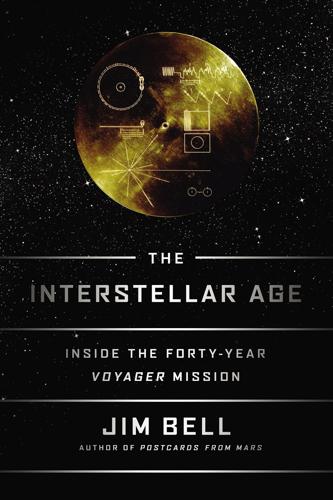
The Interstellar Age: Inside the Forty-Year Voyager Mission
by
Jim Bell
Published 24 Feb 2015
Flyby and orbiter spacecraft, and rovers on the ground, provide these essential remote-sensing capabilities for us, sending back the pictures and sensory data from remote places. It’s easy to think of spacecraft like the Voyagers as being alive, imparting to them feelings and other human attributes. They are so far away, and it is so cold and dark. They must be lonely. Some of them, like the Mars rovers Spirit and Opportunity, are so cute with their long necks and bulging eyes! They must be plucky, intrepid, courageous, and a dozen other grand adjectives of exploration, in order to survive and thrive for so long. They are out there, working tirelessly, making discoveries and braving dangerous environments with no rest, no vacation, and no pay.
…
For the engineers involved, seeing their creations treated like this can be a painful experience. The Voyagers were assembled from about 65,000 separate parts in JPL’s Building 179—the famous “High Bay” Spacecraft Assembly Facility where spacecraft like the Rangers, Mariners, Vikings, Galileo, Cassini, and the Mars rovers Pathfinder, Spirit, Opportunity, and Curiosity were also brought into the world. The High Bay is a Class 10,000 clean room (less than 10,000 particles of 0.5 micron or larger per cubic foot of air), making it a great place to work if you have allergies. Workers in the High Bay have to wear protective clothing (known affectionately as bunny suits) to keep bacteria and other particles (human beings generate millions of skin, hair, dirt, and dust particles every minute) from contaminating the spacecraft.
…
The kinds of job-related stresses that sequencers faced during the one-shot flyby missions of Voyager are somewhat different from the stresses faced by sequencers and their teammates operating orbital spacecraft, such as the Mars Reconnaissance Orbiter or the Saturn orbiter Cassini (both of which Candy is currently involved with), or landed missions like the Mars rovers that I have worked on. In those cases, if an exposure time is botched or some other sequence error occurs, it’s often (though not always) possible to take a “do-over” the next day, or the next orbit, to get it right. But still, in my experience and in the experience of almost everyone I know in the business, such mistakes are rare.
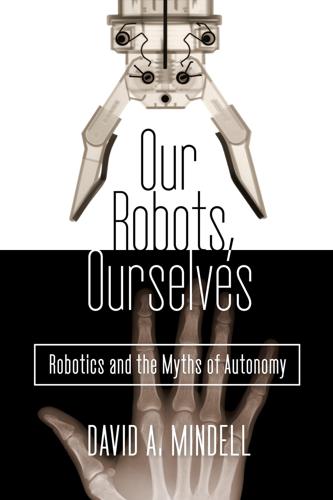
Our Robots, Ourselves: Robotics and the Myths of Autonomy
by
David A. Mindell
Published 12 Oct 2015
In planetary exploration, the phenomena under study are slow; the difference between a two-week human mission (cost: $100 billion) and a ten-year robotic mission (cost: $1 billion) has no relevance for rocks. Dan Lester, an astronomer at the University of Texas, argues that we need to rethink our traditional concepts of exploration. Even though the human scientists and their Mars rovers are clearly conducting exploration, he points out, NASA still uses the term “exploration” to refer to human spaceflight, while congressional legislation speaks more generally of “human presence” in space. “When Congress starts using the phrase ‘human presence’ to authorize a $17B agency,” Lester writes, “the phrase takes on some importance.”
…
The cognitive latency argument laudably moves beyond the old argument that remote presence is not real presence, but in doing so introduces another fallacy: that presence through a time delay is not real presence. Ask Predator pilots about the sense of presence when they operate through delays nearly ten times longer than Lester and Thronson’s cognitive horizon. Everything in Bill Clancey’s studies of the Mars rovers teams, everything in his richly empirical and systematic data, contradicts this assumption. What is it about latency that destroys presence? Why can we not feel present when our data is a few minutes or even hours old? When the thing you’re studying hasn’t changed in millions of years, why is twenty minutes too long to wait?
…
Anything programmed into the vehicle constituted assumptions, models about how the world worked that might not be valid in a new context. “I think it focused on the wrong aspects of autonomy, perhaps. . . . You’re requiring the vehicle to understand a lot of context that may not be available to it.” Kinsey had his own version of the surprise expressed by the Mars rover engineer as abstractions of autonomy met real applications. “One of the problems with having a vehicle that makes its own decisions,” Kinsey realized, “is there’s a certain amount of opaqueness to what it’s doing. Even if you’re monitoring it, [you say] ‘Gee, it just suddenly wandered off to the southwest.
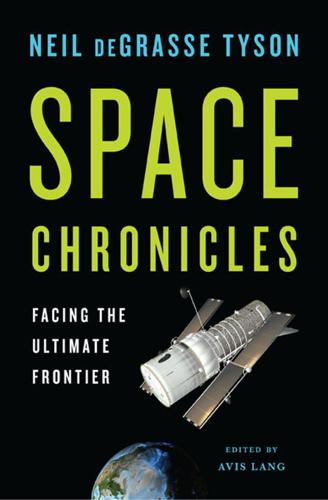
Space Chronicles: Facing the Ultimate Frontier
by
Neil Degrasse Tyson
and
Avis Lang
Published 27 Feb 2012
They could be talked to and would talk back (sounding, of course, robotic). The standard robot looked more or less like a person. The fussbudget character C3PO, from the Star Wars movies, is a perfect example. Even when a robot doesn’t look humanoid, its handlers might present it to the public as a quasi-living thing. Each of NASA’s twin Mars rovers, for instance, was described in JPL press packets as having “a body, brains, a ‘neck and head,’ eyes and other ‘senses,’ an arm, ‘legs,’ and antennas for ‘speaking’ and ‘listening.’ ” On February 5, 2004, according to the status reports, “Spirit woke up earlier than normal today . . . in order to prepare for its memory ‘surgery.’ ” On the 19th the rover remotely examined the rim and surrounding soil of a crater dubbed Bonneville, and “after all this work, Spirit took a break with a nap lasting slightly more than an hour.”
…
In spite of all this anthropomorphism, it’s pretty clear that a robot can have any shape at all: it’s simply an automated piece of machinery that accomplishes a task, either by repeating an action faster or more reliably than the average person can, or by performing an action that a person, relying solely on the five senses, would be unable to accomplish. Robots that paint cars on assembly lines don’t look much like people. The Mars rovers looked a bit like toy flatbed trucks, but they could grind a pit in the surface of a rock, mobilize a combination microscope-camera to examine the freshly exposed surface, and determine the rock’s chemical composition—just as a geologist might do in a laboratory on Earth. It’s worth noting, by the way, that even a human geologist doesn’t go it alone.
…
Field geologists on Mars would lug it around on their daily strolls across a Martian crater or outcrop, where they might take measurements of the soil, the rocks, the terrain, and the atmosphere. But if you can get a robot to haul and deploy all the same instruments, why send a field geologist to Mars at all? One good reason is the geologist’s common sense. Each Mars rover was designed to move for about ten seconds, then stop and assess its immediate surroundings for twenty seconds, then move for another ten seconds, and so on. If the rover moved any faster, or moved without stopping, it might stumble on a rock and tip over, becoming as helpless as a Galápagos tortoise on its back.

Visual Thinking: The Hidden Gifts of People Who Think in Pictures, Patterns, and Abstractions
by
Temple Grandin, Ph.d.
Published 11 Oct 2022
My motto now is: Little guys innovate. I geeked out over the camera on the Mars rover Perseverance. Michael Malin, who invented it, is a geology professor at my alma mater, Arizona State University. He also works at the Jet Propulsion Lab and at NASA, where he first pitched the idea for the camera. NASA initially rejected it, stating that it had all the photos it needed. Malin disregarded the rejection and started a small company with other geologists to study other planets. Eventually, NASA helped fund their efforts. The Mars rover looks like a cross between a desert jeep without the shell and a Transformer.
…
I was so excited about Apollo and the future of space exploration that I seriously thought about working for NASA, but my math skills were too weak to pass the engineering courses. Long after NASA stopped sending people to the moon and reduced funding of satellites to visit other planets in our solar system, leading most of the public to lose interest in the space program, I was still reading about the space shuttle and the Mars rover missions. You can understand why I jumped at the opportunity to visit Cape Canaveral when I was invited to give a lecture about neurodiversity there in 2017. As part of a small group of scientists, I got to watch a SpaceX launch. We also toured the vehicle-assembly building and walked around inside a new launchpad that contractors were finishing.
…
A look at 2021’s cutting-edge space missions by the United States and China clearly shows the need for skilled craftsmen. I looked up the cameras that are now taking gorgeous pictures on Mars. They are beautifully hand-wired. The intricate wiring must be perfectly installed, or the cameras may fail. The people who built the cameras and wired the Mars rover do not get sufficient credit. The successor to the Hubble Space Telescope has been launched, and it is one hundred times more powerful. This project was delayed for years. One reason for the delays was poor workmanship. Rockets shake their payloads when they take off. To ensure that the new telescope would survive the rigors of the launch, it was subjected to a shake test.
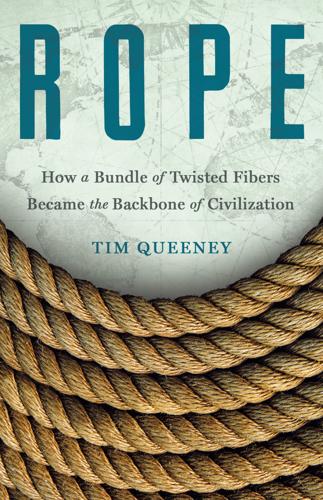
Rope: How a Bundle of Twisted Fibers Became the Backbone of Civilization
by
Tim Queeney
Published 11 Aug 2025
Thus, as soon as the craft started its entry into Mars’s atmosphere it was solely under the control of its onboard computer. Five minutes after entering the atmosphere, at an altitude of 6.2 miles (10 km), it was time for the parachute to justify all that careful construction and testing. As Rob Manning wrote in his and William L. Simon’s book Mars Rover Curiosity, “The rover now fired the pyrotechnic device that lighted off the mortar cannon containing the 100-pound chute. Within two seconds, a disk of orange and white nylon fabric, 70 feet (21.5 m) in diameter, was violently dancing behind.”4 Had it fouled, inverted, or failed to deploy, Curiosity would’ve been doomed.
…
Pete Schoening’s solitary belay supported all six, assisted by the strength of newly introduced nylon climbing rope. Used with permission from K2: The Savage Mountain by Houston, Charles S. and Bates, Robert H. The Lyons Press. 2000 by Houston, Charles S. and Bates, Robert H. All rights reserved. NASA diagram shows Mars rover Curiosity’s descent through the Red Planet’s atmosphere. Rope played a key role, both via the Technora lines connecting the spacecraft to its massive parachute and in the Vectran lines that lowered the rover to the surface from its hovering “skycrane.” Public domain. A possible future space elevator ascending its rope-like tether into space.
…
A Guide to Maine Lobstering. State of Maine, 2003. Malone, Joseph J. Pine Trees and Politics: The Naval Stores and Forest Policy in Colonial New England, 1691–1775. Seattle: University of Washington Press, 1964. Man, John. The Great Wall. Cambridge, MA: Da Capo Press, 2008. Manning, Rob, and William L. Simon. Mars Rover Curiosity: An Inside Account from Curiosity’s Chief Engineer. Washington, DC: Smithsonian Books, 2014. Marbach, Georges, and Bernard Tourte. Alpine Caving Techniques: A Complete Guide to Safe and Efficient Caving. Translated by Melanie Alspaugh. Allschwil, Switzerland: Speleo Projects, 2002. McCullough, David.
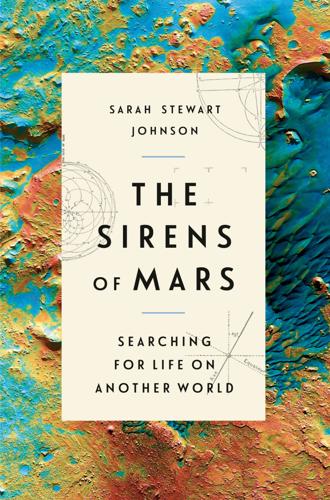
The Sirens of Mars: Searching for Life on Another World
by
Sarah Stewart Johnson
Published 6 Jul 2020
BEGAN CLAPPING The recounting of this moment, as well as many others in the early days of the Mars Exploration Rover mission, are encapsulated in Steve Squyres’s wonderful firsthand account: Squyres, Roving Mars: Spirit, Opportunity, and the Exploration of the Red Planet, p. 292. FELT COMPLETELY DISORIENTED Ibid., p. 292. “WELCOME TO MERIDIANI” Ibid., p. 293. ADVOCATED FOR MERIDIANI Ibid., p. 307. “HOLY SMOKES” Ibid., pp. 293–294; misunderstanding the expression, Korea’s major afternoon daily ran with the headline, THE SECOND MARS ROVER LANDS, SEEING MYSTERIOUS SMOKE. “HOLE IN ONE” Squyres, Roving Mars: Spirit, Opportunity, and the Exploration of the Red Planet, p. 294. BARELY ANKLE-HIGH Marcus Y. Woo, “Roving on Mars,” Engineering and Science, 72 (2), (2009) pp. 12–20. WERE DUBBED “BLUEBERRIES” “Martian ‘Blueberries,’ ” NASA Science Mars Exploration Program (Jan. 27, 2015).
…
SAGAN BARELY SET FOOT Steve went on to work closely with other Cornell professors, including Joseph Veverka (his scientific advisor), Arthur Bloom, Steven Ostro, and William Travers, as well as Gene Shoemaker at USGS and several members of the Voyager imaging team. Steven Squyres, “The Morphology and Evolution of Ganymede and Callisto,” Cornell PhD thesis (1981). STIPPLED WITH BLUEBERRIES David R. Williams, “Mars Rover ‘Opportunity’ Images,” NASA Goddard Space Flight Center (June 16, 2004). COLUMBIA HILLS The Columbia Hills were named after the space shuttle Columbia, which disintegrated as it reentered Earth’s atmosphere in 2003, killing the crew. The seven peaks are named for the seven individual astronauts.
…
“ABLE TO DRINK IT” “Quotation of the Day for Wednesday, Mar. 13, 2013,” The New York Times; Carl Franzen, “Curiosity Discovers Ancient Mars Could Have Supported Life,” The Verge (March 12, 2013). LONG THIN TUBE Mahaffy et. al., “The Sample Analysis at Mars Investigation and Instrument Suite,” Space Science Reviews; Emily Lakdawalla, The Design and Engineering of Curiosity: How the Mars Rover Performs Its Job (Cham, Switzerland: Springer, 2018). SIMPLE COMPOUNDS C. Freissinet, et al., “Organic Molecules in the Sheepbed Mudstone, Gale Crater, Mars,” Journal of Geophysical Research: Planets. MORE-COMPLEX MOLECULES, BOUND TOGETHER BY SULFUR J. L. Eigenbrode, R. E. Summons, A.
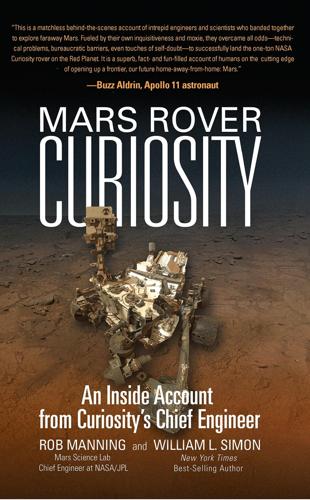
Mars Rover Curiosity: An Inside Account From Curiosity's Chief Engineer
by
Rob Manning
and
William L. Simon
Published 20 Oct 2014
I led the flight system engineering team while also managing the development of the challenging EDL system. For the next few years, I would be focusing primarily on the twin MER projects. At the same time, I would continue to be an active part of a loose-knit group juggling ideas for landing a much larger Mars rover, something we initially called a “MegaRover” but was soon being called the “Mars Smart Lander.” Without Pathfinder and Sojourner, we couldn’t have built Spirit and Opportunity, and without those two rovers we could never have built what would become the Mars Science Laboratory and its Curiosity rover.
…
That broad-scale announcement became personal for me just after I landed in Lihue, Kauai, where my wife, daughter, and I had flown to enjoy our first vacation in years. I received a cell phone call from former JPLer Jennifer Trosper. She had worked on our small team on Mars Pathfinder in the 1990s and had led the project-level system engineering on Mars Exploration Rover with me, on which she and her team pioneered Mars rover operations concepts. By then she had become the most experienced Mars surface operations engineer within NASA. Jennifer and her husband, who was in the Air Force, had recently moved to the D.C. area so that he could continue pursuing his chosen specialty, as a test pilot. She had landed a job at NASA headquarters as what they call a “detailee,” someone from one of the NASA field centers who is loaned to headquarters.
…
In part that was because the United States wanted to share its leadership in space by getting other countries to take part, in the spirit of “opening our knowledge to others.” In part, too, it was because countries like France were glad to untie their purse strings to help their own scientists and gain national prestige by establishing a foothold in the relatively new art of developing space hardware for a Mars rover. “Frankly,” Roger says, “I figured the chances of our instruments being selected were lousy. We had not yet proven we could build an instrument that would work on Mars. Our French partners hadn’t, either.” His hopes were dashed even further when he learned how many proposals had been submitted, and, worse, that only about six instruments would be selected.
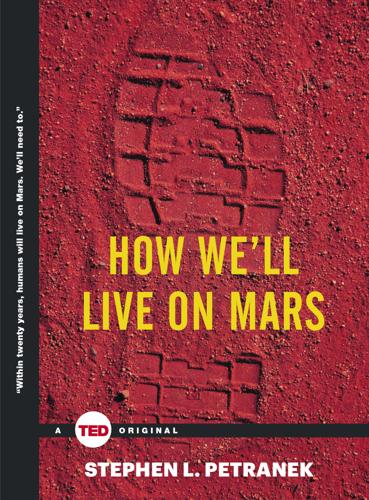
How We'll Live on Mars (TED Books)
by
Stephen Petranek
Published 6 Jul 2015
The orbiter will measure trace gases—those that comprise less than 1 percent of the atmosphere. In 2018, the two organizations plan to land a rover on the Martian surface. The Russians have also discussed building an enormous rocket to rival NASA’s Space Launch System, which could conceivably take a manned mission to Mars around 2030. Meanwhile, the Chinese have announced plans to send a Mars rover similar to their lunar rover to the Red Planet around 2020. 6 Living on Mars Humans need four things to survive on Earth—food, water, shelter, and clothing. Humans need five things to survive on Mars—food, water, shelter, clothing, and oxygen. The successful procurement of these five essential resources will secure humanity’s future as an interplanetary species.
…
NASA’s goal with MOXIE is less to prove that we can make breathable oxygen as to show that we can create an oxidizer for rocket fuel. Oxygen weighs far more than rocket propellants like hydrogen or methane, so NASA is obsessed with the concept of making it on Mars for return trips to Earth. It will be far more efficient not to have to carry fuel all the way to Mars for return voyages. The MOXIE module on the next Mars rover will produce only about fifteen liters of oxygen per hour at standard temperature and pressure. That doesn’t seem like a lot, but human lungs consume only five to six milliliters of oxygen per minute. “Bottom line, MOXIE can produce enough oxygen continuously for a human to breathe if he or she isn’t very active,” says Hecht.
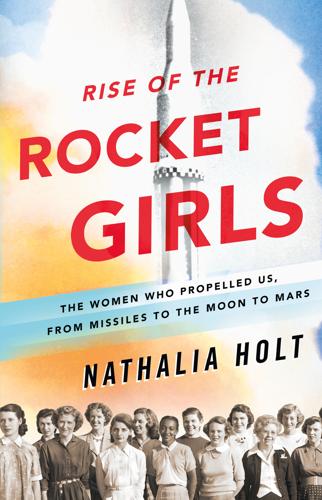
Rise of the Rocket Girls: The Women Who Propelled Us, From Missiles to the Moon to Mars
by
Nathalia Holt
Published 4 Apr 2016
The metric-system mix-up that doomed the Mars climate orbiter is explained in “Mars Climate Mishap Investigation Board Phase I Report,” November 10, 1999, and “Report on the Loss of the Mars Climate Orbiter Mission,” EDS–D18441, November 11, 1999. The Polar Lander’s demise is detailed in Bruce Moomaw and Cameron Park, “Was Polar Lander Doomed by Fatal Design Flaw?,” SpaceDaily, February 16, 2000. More information on the Mars rovers can be found in Stephen Squyres, Roving Mars: Spirit, Opportunity, and the Exploration of the Red Planet (New York: Hyperion, 2005), and Rod Pyle, Curiosity: An Inside Look at the Mars Rover Mission and the People Who Made It Happen (Amherst, NY: Prometheus Books, 2014). In addition to a personal interview, Donna Shirley is quoted as saying, “Everything was going so smoothly and all of a sudden we realized it was all women,” etc., in Kenneth Change, “Making Science Fact, Now Chronicling Science Fiction,” New York Times, June 15, 2004.
…
My continued obsession with Eleanor Francis Helin (“Glo” to her friends) led me to uncover the stories of a group of women intriguingly known as “the human computers” at the Jet Propulsion Lab in Pasadena, California. These women, recruited in the 1940s and 1950s, were responsible for all the critical calculations at JPL that powered early missiles, rocketed heavy bombers over the Pacific, launched America’s first satellite, guided lunar missions and planetary explorations, and even navigate Mars rovers today. My search unearthed a 1950s picture of the group, the women working at their desks. The image was crisp, yet the archivists at NASA knew only a few of the women’s names and weren’t sure what had become of them. It seemed their stories had been lost in the shuffle of history. While we tend to think of the role women played during the early years at NASA as secretarial, these women were the antithesis of that assumption.
…
In 1984, 37 percent of computer-science graduates were women; today that number is at 18 percent. You can write a lot of programs in five decades. The code that Sylvia, Helen, Margie, Sue, Barbara, and their colleagues wrote would continue to work its way into spacecraft, navigation systems, climate studies, and Mars rovers. It would get spliced up and repurposed, pasted into different missions, sent out into space, driven on far-off planets, and even brought back to Earth, taking on a life of its own long after the women departed. The code would even inform our missions today, from the Mars Curiosity rover that has been exploring Mars since 2012, to the Cassini orbiter that has been swinging around Saturn since 2004, to future Earth-orbiting instruments designed to study our own world.
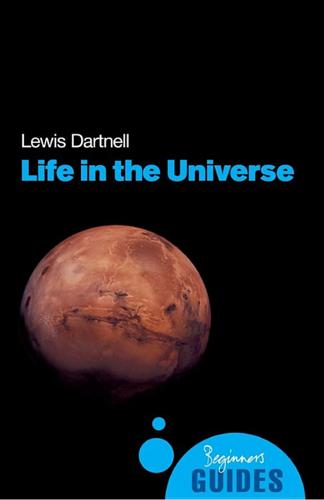
Life in the Universe: A Beginner's Guide
by
Lewis Dartnell
Published 1 Mar 2007
The valley networks, outflow channels and crater sediments could be, at least partly, explained by non-aqueous processes, such as other liquids, lava flows, wind or even a fluid-like flow of dry dust. The final resolution was not to come until 2004, when a pair of explorers landed on Mars and delivered conclusive proof of persistent liquid water on the surface. Within three weeks of each other, the twin Mars rovers Spirit and Opportunity bounced on to the Martian surface, cushioned within a cocoon of airbags. Both found evidence of liquid water but I shall focus on the more astounding discoveries of the second twin. Opportunity’s target was a flat plain in the northern hemisphere, the Meridiani Planum, chosen because it had been found to contain an exceptionally high level of an iron oxide mineral, haematite.
…
Index accretion disc acetylene acidity acidophiles aerobes aerobic respiration algae ALH84001 alien life alkaliphiles Alpha Centauri amino acids ammonia amono-peptides anaerobes anaerobic respiration Andromeda Galaxy Anomalocaris Antarctic Dry Valleys anthropic principle aquifers artificial life asteroids astrobiology definition astrometry atmosphere of Earth of Mars of Titan ATP ATP synthase autocatalysis autotrophs bacteria barophiles Betelgeuse Big Bang biofilms biosignature/biosign biosphere black smoker see hydrothermal vents blue shift bombardment Callisto (moon of Jupiter) Cambrian Explosion 55 Cancri A carbohydrate carbon isotopes carbonaceous chondrites carbonate-silicate cycle carbon dioxide carbon fixation carbonic acid cell membrane cells cryopreserved chemoautotrophs chemosynthesis chirality (handedness) chitin chlorophyll chloroplasts climate collagen comets complex life continental crust convergence co-rotation cycle cosmic radiation craters cryo-volcanism cryptoendoliths cyanide cyanobacteria cytoplasm Darwinian definition Darwin space telescope Darwin’s pond deep basalt aquifers Deimos (moon of Mars) denaturation Devon Island DNA Doppler effect Earth Earthshine EcoSphere ecosystem enantiomers Enceladus (moon of Saturn) endolithic environments endosymbiosis energy extraction inorganic environment enzymes Epsilon Eri Eridanus eukaryotes Europa (moon of Jupiter) evolution extinction extra-solar planets extremophiles eye fixation carbon methane nitrogen flight formaldehyde formamide fossil record free radicals Gaia galaxies Andromeda Galaxy metallicity Milky Way Galileo Galilei Galileo probe Ganymede (moon of Jupiter) glaciation, runaway glucose Goldilocks Principle Golgi body gravitational microlensing greenhouse effect grylloblattid insects habitable zone haemoglobin halophiles handedness see chirality Haughton Crater HD28185 HD209458b Herschel, William heterotrophs homeobox genes Hot Jupiters Hubble Space Telescope Huygens lander hydrogen hydrogen cyanide hydrosphere hydrothermal vents hyperthermophiles icebugs impact impact frustration inorganic energy interference patterns interferometry Io (moon of Jupiter) iron ferrous isotope jarosite Jupiter moons Kepler spacecraft Krebs cycle life artificial emergence of as energy disequilibrium as information transmission on Mars lithoheterotrophs lithosphere Lowell, Percival LUCA (last universal common ancestor) magnetic fields Mars atmosphere canals environmental collapse evolution of life on geography Hellas impact basin Meridiani Planum Olympus Mons survival of life Valles Marineris volcanoes water on M-class dwarves Mercury Meridiani Planum metabolism metallicity metamorphosis meteorites methane methane fixation methanogens Milky Way mitochondria Moon formation of mRNA multicellular organisms Murchison meteorite myxobacteria natural selection nebulae Neptune nitrogen nitrogen fixation nucleotides nucleus oceanic crust Opportunity Mars Rover organelles organics on Mars synthesis organisms multicellular organoheterotrophs Orion osmosis oxidation oxygen oxygenic processes ozone PAH see polycyclic aromatic hydrocarbons panspermia, permafrost Phobos (moon of Mars) photoautotrophs photosynthesis planetary orbits planet formation plate tectonics Pluto polarity polycyclic aromatic hydrocarbons polymers porphyrins potential difference prebiotic chemistry primordial soup progenote collective prokaryotes proteins protein synthesis protons Proxima Centauri psychrophiles pulsars radial velocity technique red dwarves see M-class dwarves redox redox couples redox potential red shift reduction respiration reverse transcriptase ribose ribosomes ribozymes Rio Tinto RNA RNA world rockcrawlers Rubisco enzyme salinity Saturn moons Schiaparelli, Giovanni sight silicon-based life Sirius SLiMEs Snowball Earth snow line Space Interferometry Mission spallation zone Spirit Mars rover stars birth of Sun-like stromatolites subduction zones subsurface lithotrophic microbial ecosystems see SLiMEs sugars Sun supernovae symbiosis tardigrades (water bears) Tau Bootis Tau Ceti temperature Terrestrial Planet Finder thermophiles threose/TNA tidal heating tidal locking Titan (moon of Saturn) transit method tree of life triple alpha process tRNA ultraviolet (UV) radiation uranium Uranus Urey-Miller reactions vegetation Venus Viking probes viruses volatiles volcanism Vostok, Lake water on Mars phase diagram
…
Index accretion disc acetylene acidity acidophiles aerobes aerobic respiration algae ALH84001 alien life alkaliphiles Alpha Centauri amino acids ammonia amono-peptides anaerobes anaerobic respiration Andromeda Galaxy Anomalocaris Antarctic Dry Valleys anthropic principle aquifers artificial life asteroids astrobiology definition astrometry atmosphere of Earth of Mars of Titan ATP ATP synthase autocatalysis autotrophs bacteria barophiles Betelgeuse Big Bang biofilms biosignature/biosign biosphere black smoker see hydrothermal vents blue shift bombardment Callisto (moon of Jupiter) Cambrian Explosion 55 Cancri A carbohydrate carbon isotopes carbonaceous chondrites carbonate-silicate cycle carbon dioxide carbon fixation carbonic acid cell membrane cells cryopreserved chemoautotrophs chemosynthesis chirality (handedness) chitin chlorophyll chloroplasts climate collagen comets complex life continental crust convergence co-rotation cycle cosmic radiation craters cryo-volcanism cryptoendoliths cyanide cyanobacteria cytoplasm Darwinian definition Darwin space telescope Darwin’s pond deep basalt aquifers Deimos (moon of Mars) denaturation Devon Island DNA Doppler effect Earth Earthshine EcoSphere ecosystem enantiomers Enceladus (moon of Saturn) endolithic environments endosymbiosis energy extraction inorganic environment enzymes Epsilon Eri Eridanus eukaryotes Europa (moon of Jupiter) evolution extinction extra-solar planets extremophiles eye fixation carbon methane nitrogen flight formaldehyde formamide fossil record free radicals Gaia galaxies Andromeda Galaxy metallicity Milky Way Galileo Galilei Galileo probe Ganymede (moon of Jupiter) glaciation, runaway glucose Goldilocks Principle Golgi body gravitational microlensing greenhouse effect grylloblattid insects habitable zone haemoglobin halophiles handedness see chirality Haughton Crater HD28185 HD209458b Herschel, William heterotrophs homeobox genes Hot Jupiters Hubble Space Telescope Huygens lander hydrogen hydrogen cyanide hydrosphere hydrothermal vents hyperthermophiles icebugs impact impact frustration inorganic energy interference patterns interferometry Io (moon of Jupiter) iron ferrous isotope jarosite Jupiter moons Kepler spacecraft Krebs cycle life artificial emergence of as energy disequilibrium as information transmission on Mars lithoheterotrophs lithosphere Lowell, Percival LUCA (last universal common ancestor) magnetic fields Mars atmosphere canals environmental collapse evolution of life on geography Hellas impact basin Meridiani Planum Olympus Mons survival of life Valles Marineris volcanoes water on M-class dwarves Mercury Meridiani Planum metabolism metallicity metamorphosis meteorites methane methane fixation methanogens Milky Way mitochondria Moon formation of mRNA multicellular organisms Murchison meteorite myxobacteria natural selection nebulae Neptune nitrogen nitrogen fixation nucleotides nucleus oceanic crust Opportunity Mars Rover organelles organics on Mars synthesis organisms multicellular organoheterotrophs Orion osmosis oxidation oxygen oxygenic processes ozone PAH see polycyclic aromatic hydrocarbons panspermia, permafrost Phobos (moon of Mars) photoautotrophs photosynthesis planetary orbits planet formation plate tectonics Pluto polarity polycyclic aromatic hydrocarbons polymers porphyrins potential difference prebiotic chemistry primordial soup progenote collective prokaryotes proteins protein synthesis protons Proxima Centauri psychrophiles pulsars radial velocity technique red dwarves see M-class dwarves redox redox couples redox potential red shift reduction respiration reverse transcriptase ribose ribosomes ribozymes Rio Tinto RNA RNA world rockcrawlers Rubisco enzyme salinity Saturn moons Schiaparelli, Giovanni sight silicon-based life Sirius SLiMEs Snowball Earth snow line Space Interferometry Mission spallation zone Spirit Mars rover stars birth of Sun-like stromatolites subduction zones subsurface lithotrophic microbial ecosystems see SLiMEs sugars Sun supernovae symbiosis tardigrades (water bears) Tau Bootis Tau Ceti temperature Terrestrial Planet Finder thermophiles threose/TNA tidal heating tidal locking Titan (moon of Saturn) transit method tree of life triple alpha process tRNA ultraviolet (UV) radiation uranium Uranus Urey-Miller reactions vegetation Venus Viking probes viruses volatiles volcanism Vostok, Lake water on Mars phase diagram
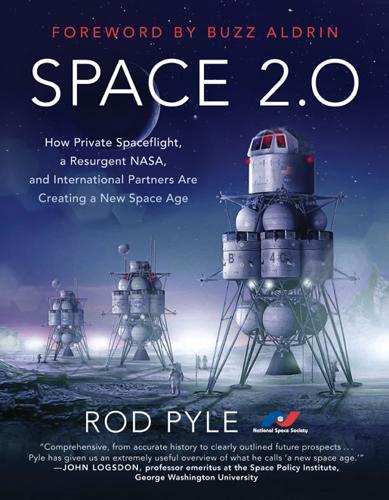
Space 2.0
by
Rod Pyle
Published 2 Jan 2019
One sievert raises the risk of cancer development by about 5 percent. While not necessarily fatal—especially when compared to the other risks faced by Mars voyagers—these levels of radiation exposure are noteworthy and an ongoing area of concern.39 The Radiation Assessment Detector (RAD) instrument aboard the Curiosity Mars rover measured radiation between the earth and Mars, and on the Martian surface. Image credit: NASA Bill Tarver explained the rationale for the radiation exposure rules in more detail: “This dosing limit is based on what radiation workers experienced in atomic submarines and nuclear reactors back in the day, which resulted in about a 3 percent increase in cancer-related deaths across their careers.
…
Prior to the interview, I was given a tour of the plant. It was nothing short of amazing. SpaceX headquarters, Hawthorne, California. Image credit: SpaceX I’ve been around a lot of rockets, visited various aerospace assembly facilities, toured most of NASA’s larger field centers, seen shuttles being built, looked on as Mars rovers and other robotic probes were assembled and tested, and examined lots of US and Soviet space hardware close up. It’s all been remarkable, but nothing quite prepared me for this. I was soon standing in a bona fide, privately owned rocket factory on a truly mammoth scale—the first of its kind anywhere.
…
INDEX Note: Page numbers in italic refer to photos or illustrations and accompanying captions A AAS (American Astronautical Society), 267 Abbey, George, 195 ACES. see Advanced Cryogenic Evolved Stage acid rain, 228 active radiation shielding, 90–91 Adams, Douglas, 261 Ad Astra magazine, 266 Aditya satellite, 177 Advanced Cryogenic Evolved Stage (ACES), 145, 145–148, 208–209 Advanced Development Programs, 138 Advanced Programs (ULA), 147 Aerospace Corporation, 125 AIAA (American Institute for Aeronautics and Astronautics), 267 Airbus A380 jumbo jet, 129 air circulation, 74, 74 airliners, commercial, 120, 245 Aldrin, Buzz, 45, 73, 168, 170, 211–212, 251 Aldrin Cyclers, 211–212, 213 Allen, Paul, 102, 151 Altair, 8 aluminum, spacecraft construction material, 87, 87 Alzheimer’s disease, 86 Amazon.com, 35, 136, 136, 236 American Astronautical Society (AAS), 267 American Institute for Aeronautics and Astronautics (AIAA), 267 Ames Research Center, 199 Anderson, Chad, 155, 155–158, 220 Angara rocket, 186 Antarctic Treaty (1959), 165, 218 Antares rocket, 153, 153 anti-satellite weapons (ASAT), 170 Apollo program (in general) capsules, 18, 19 cost of, 27 defined, 289 docking with Soyuz, 166 and Gemini flights, 44 inspiration from, 31, 32 lunar landing program, xiii–xiv, 13, 44, 55, 65, 141, 214 Lunar Module, 141 radiation exposure, 82–83 reentering of, into Earth’s atmosphere, 19 replacement of, 13 scientific samples from, 219 Apollo 8 mission, 32, 184 Apollo 11 mission, 45, 168, 184 Apollo 13 mission, 7 Apollo 14 mission, 32 Apollo 16 mission, 71 Apollo 17 mission, xiii, 23, 205 Apollo-Soyuz Test Project (ASTP), 165–166 Apophis (asteroid), 230 Apple, Inc., 157 ARM (Asteroid Redirect Mission), 9, 10 Armageddon (movie), 230 Arms Export Control Act, 169 Armstrong, Neil, xiii, 6, 7, 8, 45, 73–74 artificial gravity, 80, 80–82 ASAT (anti-satellite) weapons, 170 Asteroid Redirect Mission (ARM), 9, 10 asteroids, 64, 158 Chicxulub impactor, 223–224 Chinese intentions of exploring, 197 collecting resources from, 205, 206, 218 defending Earth from, 223–231, 248 destruction of, 228–229, 230, 231 detection of, 224 Hayabusa, 175 impact of, 227 mining resources from, 88, 89 as outposts, 64 radiation exposure on, 83 traveling to, 60 ASTP (Apollo-Soyuz Test Project), 165–166 astronauts, 69–91 and artificial gravity, 80–82 effects of cramped quarters on, 76–80 and global perspective, 32 medical experiments involving, 72–76 and radiation, 82–91 suits for, 69–71, 199 “taikonauts,” 192, 193 ATK, 152 Atlantis, 2–7, 12 Atlas rocket, 11, 118, 122, 142, 164, 175, 187 Atlas V, 289 design of, 142 preparing for launch, 143, 147 Russian parts on, 140, 149 sales of, 188 and Starliner, 50 US Air Force payload with, 119 as US rocket, 55 Vulcan as replacement for, 135, 143 Atomic Energy Commission, 214 AT&T, 211 ATV (Automated Transfer Vehicle), 172 aurora, 61 Ausbun, Kaylee, 115 Australia, 270 Australian Space Research Institute, 270 Automated Transfer Vehicle (ATV), 172 Axiom Space, 55 B B-52 bomber, 96, 96 Bangladesh, 180 BE-3 engine, 139 BE-4 engine, 139–140, 140 BEAM (Bigelow Expandable Activity Module), 54, 54 Bell Laboratories, 211 Bezos, Jeff and Blue Origin, 135–136, 136, 140–141, 236 future visions for Earth, 35–36 and international space agencies, 181 as space investor, 151, 154 and Virgin Galactic, 101–102 Bigelow, Robert, 54 Bigelow Aerospace, 246 Bigelow Expandable Activity Module (BEAM), 54, 54 Bigelow expandable modules, 247 Bigelow habitation module, 237 Bigelow test module, 55 Big Falcon Rocket, 86, 125, 129, 244, 245, 249 Big Falcon Spaceship, 129, 244, 245, 249 “billionaires’ club,” 151, 154 Block 1 shuttle, 53 Block 5 rocket, 126 Bloom, Howard, 34 Blue Moon lander, 141, 141, 211, 218, 244, 246, 247 Blue Origin, 135–141 Advanced Development Programs, 138 BE-3 engine, 139 BE-4 engine, 138, 139–140, 140 Jeff Bezos and, 35–36, 136, 236 Blue Moon lander, 211, 218, 247 cislunar infrastructure with, 246 defined, 289 Rob Meyerson and, 139 New Glenn rocket, 136, 244, 245 New Shepard, 51, 51, 137 and new space race, 135–141 pilot space settlements by, 248 public support of, 252 and reusability, 186, 197, 204 as rival to Virgin Galactic, 101–102 rockets of, 55 suborbital test flights from, 127 for tourist flights, 59, 245 and United Launch Alliance, 187–188 Boeing commercial space provider, 2, 158 late deadlines of, 7, 187 NASA partnerships with, 140, 141, 210 as private launch company, 9–11, 157, 185 Starliner program, 12, 50, 50 Bolden, Charles, 116 bone-density loss, 72, 73 Bowie, David, 260 Branson, Richard, 51, 94, 97, 97, 100 breakthrough technologies, 217 Brezhnev, Leonid, 165–166 British Interplanetary Society, 268 Brookhaven National Lab, 86 Bruno, Tory, 143, 143–145, 147, 148 Buran space shuttle, 184 Bureau of Political-Military Affairs, 169 Bush, George W., 6, 214 C California Central Coast, 112 caloric intake, 76 Caltech, 36 Canadarm robots, 179, 179 Canadian Space Agency, 48, 113, 167 accomplishments of, 179 Canadarm, 179 NASA partnership with, 179 Canadian Space Society, 269 Cantrell, Jim, 104 carbon dioxide “bubbles,” 74, 74 Cardon, Thatcher, 108 Carina (constellation), 83 Cassini-Huygens mission, 169–170 Cassini mission, 169–170, 170 CASSIOPE satellite, 113, 133 Centre national d’études spatiales (CNES), 172 centrifugal force, 22, 80–81 centrifuges, 81, 81–82 Cernan, Gene, 7, 8, 205 Challenger disaster, 5–6 Chandrayaan satellites, 177 Chang-Díaz, Franklin, 32–33, 33, 252 Chiao, Leroy, 195 Chicxulub impact, 223–224, 225 Chinese National Space Agency (CNSA), 191–200, 289 budget of, 196 crewed stations in LEO, 61, 62 first trip to space, 48 habitation modules created by, 247 launch costs lowered by, 148, 246 and Mars-500 study, 79 and militarization of space, 170–171, 220–221 moon landing planned by, 65 as new space power, xiv, 12, 188 radiation guidelines of, 86 and space entrepreneurs, 181 stated intentions of, 196, 197 Tiangong stations launched by, 54 unsuccessful Mars voyages of, 177 Chryse Planitia, 250 Chrysler corporation, 125 CisLunar-1000 Economy, 207, 208, 214–215 cislunar space, 60, 60, 246–248 clean-sheet design, 289 Clinton, Bill, 167 CNES (Centre national d’études spatiales), 172 CNSA. see Chinese National Space Agency COLBERT space treadmills, 82 Cold War, 12–13, 28, 42, 72, 141, 171, 192, 198 Collins, Mike, xiii, 73 Colorado School of Mines, 147, 208 Columbia, 5 Columbus module, 172–173 comets, 224 commercial airliners, 120, 245 Commercial Crew Program, 135 commercialization of space, 212–217, 234 Commercial Orbital Transportation Services (COTS), 130, 194, 215, 289 Commercial Resupply Services (CRS), 215–216, 289 Commercial Space Launch Competitiveness Act (2015), 219 Conrad, Pete, 72 Constellation program, 6–9, 8, 141 Convair, 142 cooperation, international. see international cooperation COTS. see Commercial Orbital Transportation Services cramped quarters, psychological effects of, 76–80 craters, 224, 227 Cretaceous Period, 223 crewed landings, 247 crewed stations, 61–62, 64, 184 CRS (Commercial Resupply Services), 215–216, 289 cryogenic state (fuel), 148 cubesats, 103, 104–106, 106, 160 Cultural Revolution (1966), 192 Cupola, 77 Curiosity Mars rover, 84, 85 Cygnus, 12, 152, 153 D DART mission (Double Asteroid Redirection Test), 228, 228–229 deep-space economy, 206, 208–211 Deep Space Gateway, 241–242 Deep Space Industries, 180, 217, 218 defense systems, 248 Defense Trade Controls, 169 deflector shields, 90 Deimos, 60, 175 Delta IV Heavy, 142, 146 Delta IV rocket, 52, 55, 135, 142, 146, 289 Delta rockets, 118, 122 delta-v, 19–20 Denmark, 156 depression, in astronauts, 79 Deutsches Zentrum für Luft- und Raumfahrt e.
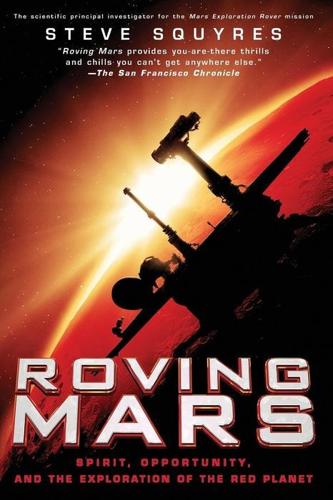
Roving Mars: Spirit, Opportunity, and the Exploration of the Red Planet
by
Steven Squyres
Published 2 Aug 2005
A few days after the landing, the following short piece ran in the Korea Herald, an English-language newspaper in Seoul: “The day after the Mars rover, Opportunity, landed on the red planet and sent the first batch of photographs last week, the country’s major afternoon daily, the Munhwa Ilbo, translated articles from the New York Times and other American press reports and published them. In the reports, a NASA expert, Dr. Steven W. Squyres, looking at an amazing picture just transmitted from Mars, was quoted as exclaiming: ‘Holy smoke . . . I’m just blown away by this.’ “Thereupon, the Munhwa Ilbo ran the headline: ‘The second Mars rover lands, sees mysterious smoke’ . . . It was fortunate for the Munhwa Ilbo that Dr.
…
We’d take the best pieces of our ’98 proposal, but switch to an all-rock focus: drop the meteorology package, drop the soil analyzer, and add the Raman. And to sweeten the deal, we could pick up some samples as we explored, so that another spacecraft could go there and grab them and bring them back, in 2005 or whenever NASA got around to it. In one shot we could do a killer Mars rover mission and get NASA positioned so they could pull off the sample return mission they really wanted. This was too cool an idea, and there was no way I was going to get back to sleep now that I had it in my head. I needed both JPL and Lockheed Martin onboard if I wanted to do this mission, and I had to lock them up before anybody else thought of it.
…
Their specialty was custom mechanical gadgets, and they had done stuff ranging from a giant mechanized Coca-Cola sign in Times Square to a remotely operated robotic welding machine that could creep through the network of steam pipes that lies beneath the streets of Manhattan. Lately they had begun to branch out into mechanisms for spacecraft. Steve’s note was terse. “I’ve heard you’re working on a Mars rover mission,” it said, “and I was wondering if there was anything we could do for you.” Well, yeah, just maybe you could. “Send me whatever you’ve got,” I replied, wondering if he’d tip his hand or not. Things can get pretty weird when there’s something as big as a whole Mars mission on the line, and you never know how much somebody will be willing to show you in such a competitive environment.
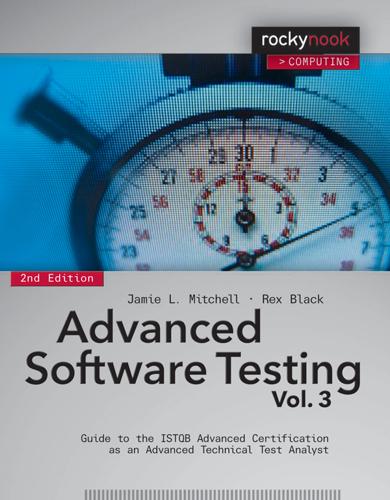
Advanced Software Testing—Vol. 3, 2nd Edition
by
Jamie L. Mitchell
and
Rex Black
Published 15 Feb 2015
NIST Special Publication 500-235, Structured Testing: A Testing Methodology Using the Cyclomatic Complexity Metric. Arthur H. Watson and Thomas J. McCabe. http://www.itl.nist.gov/lab/specpubs/sp500.htm. Goodies for Peer Reviews. Karl Wiegers. http://www.processimpact.com/pr_goodies.shtml. “Out-of-memory problem caused Mars rover’s glitch.” Todd R. Weiss, Computerworld, Feb. 3, 2004. http://www.computerworld.com/article/2574759/data-storage-solutions/out-of-memory-problem-caused-mars-rover-sglitch.html. “Splint (programming tool).” Wikipedia. http://en.wikipedia.org/wiki/ Splint_(programming_tool). Referenced Standards BS 7925/2, Software Component Testing Standard. DO-178C, Software Considerations in Airborne Systems and Equipment Certification.
…
Wilson, working for Bell Labs in the early ’60s, accidentally discovered the first observational proof of the “Big Bang” when nothing they could do would eliminate the static they kept picking up with their microwave receiver. However, they spent months not believing what their tests were telling them. See http://www.amnh.org/education/resources/rfl/web/essaybooks/cosmic/cs_radiation.html. 26. A memory shortage caused the Spirit Mars rover to become unresponsive on January 2, 2004. A brief summary can be found at: http://www.computerworld.com/s/article/89829/Out_of_memory_problem_caused_Mars_rover_s_glitch. 27. These come from a book by Ian Molyneaux, The Art of Application Performance Testing. 28. This appears to be an awkward translation. It would not make much sense to require a system to average N number of error messages over a certain period.
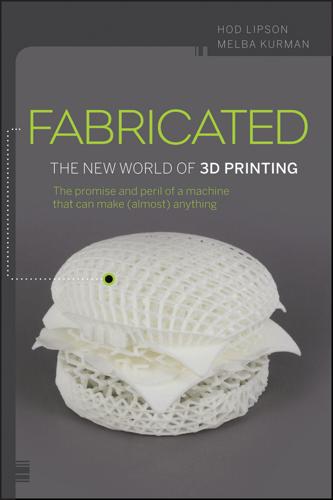
Fabricated: The New World of 3D Printing
by
Hod Lipson
and
Melba Kurman
Published 20 Nov 2012
In England a technician scans the feet and ankles of Olympic sprinters and puts the data into a computer. The computer does a few quick calculations. The technician 3D prints new track shoes that are customized for each athlete’s unique body shape and weight, gait and tastes. On the other side of the world, NASA test-drives a version of its Mars Rover in the Arizona desert. On board the Rover are several custom-made 3D printed metal parts. Many of these parts have complicated shapes made of curves and inner hollows that could not have been manufactured by anything other than a 3D printer. In Japan, an expectant mother wants to create the ultimate commemoration of her first ultrasound.
…
Some people 3D print knobs, gears or other antique or discontinued parts that would be extremely expensive to make by hand. Since custom parts don’t benefit price-wise from economies of scale, small, skilled 3D printing service providers are finding new business opportunities. Car and motorcycle companies—even the company that created the Mars Rover—use 3D printed custom parts to build working versions of a concept vehicle or machine. After all, it’s critical that million-dollar vehicles be taken for a real test-drive. The medical industry and dental industries are heavy consumers of 3D printed end parts since their products must interface closely and precisely with the body.
…
In contrast, on Endless Forms, users “bred” designs by impulsively clicking on a shape they liked and doing that again and again. The process of rapidly choosing and then sitting back to wait, combined with the fact that the computer did most of the work for them, seemed to bring out a new expression of people’s subconscious. Endless Forms may not be the best design tool to create machine parts for the next Mars Rover. When users create a design by impulsively pointing at appealing shapes, the result will likely not be an object that’s honed and mathematically optimized for maximal performance. Instead, as an early prototype of a new type of human/computer interaction, perhaps the value of the Endless Forms project was that we proved that it is possible for a computer and a human to design “collaboratively.”
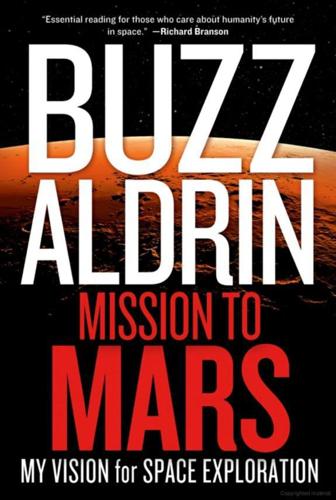
Mission to Mars: My Vision for Space Exploration
by
Buzz Aldrin
and
Leonard David
Published 1 Apr 2013
Let me point out the advances in telerobotics here on Earth. Human cognition and dexterity are already reaching the deepest oceans, pulling out resources from dangerous mines, performing high-precision surgery from a distance—all this as aerial drones, piloted by humans in far-off command centers, fly overhead. NASA’s Curiosity Mars rover takes a self-portrait. (Illustration Credit 6.3) My close friends Robert Ballard and James Cameron can attest to telepresence-enabled undersea exploration, operating vehicles outfitted with high-definition video cameras, sensors, and manipulator arms—run from a mission control. Teleoperation of underwater equipment is also a routine task performed by those maintaining deep-sea oil rigs.
…
Teleoperation of underwater equipment is also a routine task performed by those maintaining deep-sea oil rigs. The counterpart in space, albeit showcasing low-quality telepresence, was used decades ago by controllers in the Soviet Union. They wheeled about their automated Lunokhods on the moon. More recently, recall the plucky Spirit and Opportunity Mars rovers run by NASA, precursors to the now-on-Mars Curiosity mega-robot. Telepresence, low-latency telerobotics, and human spaceflight are leading to redefining what constitutes an “explorer.” A leading champion of exploration telepresence is Dan Lester of the Department of Astronomy at the University of Texas in Austin.

Beyond: Our Future in Space
by
Chris Impey
Published 12 Apr 2015
It works well for Earth-bound humans, so why would it be hard for an astronaut to watch cat videos on the Moon or Mars? First, it takes light or radio waves anywhere from four to twenty-one minutes to reach Mars from Earth, depending on where the two planets are in their orbits. NASA engineers don’t control the Mars rovers like a video game enthusiast would, flicking a joystick as the rover careens across sand dunes. The rovers are controlled painstakingly by commands that are separated by a half hour or more to allow for the round-trip signal time. Second, planets rotate and shadow the orbiters, so there are dead times when no communication is possible.
…
“Metastability of Liquid Water on Mars” by M. H. Hecht 2002. Icarus, vol. 156, pp. 373–86. Also: “Ancient Oceans, Ice Sheets, and the Hydrological Cycle on Mars” by V. R. Baker et al. 1991. Nature, vol. 352, pp. 589–94. More recent discoveries are covered in “Introduction to Special Issue: Analysis of Surface Materials by the Curiosity Mars Rover” by J. Grotzinger 2013. Science, vol. 341, p. 1475, and subsequent articles in the special issue of Science magazine. 13. Water on Mars by M. H. Carr 1996. Oxford: Oxford University Press. 14. The Case for Mars: The Plan to Settle the Red Planet and Why We Must by R. M. Zubrin and R. Wagner 1996.
…
Synergetic Agents: From Multi-Robot Systems to Molecular Robotics by H. Haken and P. Levi 2012. Weinheim, Germany: Wiley-VCH. The book that started off the entire field was Engines of Creation: The Coming Era of Nanotechnology by E. Drexler 1986. New York: Doubleday. 12. “The Next Generation of Mars Rovers Could Be Smaller Than Grains of Sand” by B. Ferreira 2012, in Popular Science, online at http://www.popsci.com/technology/article/2012-07/why-next-gen-rovers-could-be-smaller-grain-sand. 13. Research at Goddard Space Flight Center: http://www.nasa.gov/centers/goddard/news/ants.html. 14. Nanorobotics: Current Approaches and Techniques, ed. by C.
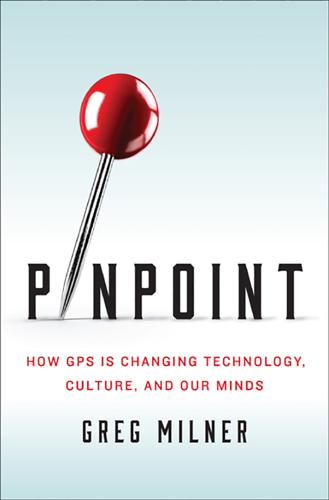
Pinpoint: How GPS Is Changing Our World
by
Greg Milner
Published 4 May 2016
When combined with traditional seismic monitoring equipment, GPS can give a region a crucial extra few seconds or minutes of warning just as an earthquake starts. It can also, in a way that seismic tools cannot, help scientists understand how an earthquake deforms the land, long after the quake has hit. JPL is the site of some of the most sophisticated GPS research, much of it applied to tracking spacecraft, including the Mars rovers, which the facility designs and builds. But a good portion of its work for the last forty years has been in harnessing GPS to improve earthquake monitoring. Young was among the first scientists to explore the possibilities of building GPS receivers sensitive enough to detect seismic activity, never thinking that GPS would become a lifelong pursuit.
…
consciousness, 117, 118 Constitution, U.S., Fourth Amendment to, 177–80, 188, 189, 191 Continental Airlines, 171–72 continental drift theory, 205–7, 216, 233 Cook, James, 7–12, 269 astronomical observations of, 24 journal of, 10 murder of, 106–7 Pacific voyages of, 7–10, 26, 27, 106–7, 263–64, 266 Tupaia and, 7–10, 21–24, 26, 263–64, 266 cooking oil, 183 Cook Islands, 4, 106 Coordinated Universal Time (UTC), 154 Cornell University, 129, 149, 150 Counselman, Charles “Chuck,” 210, 211, 212–14 criminal justice system, 177–79, 194–99 see also police Croatian language, 114 Curiosity Mars rover, 258–59, 262 Currie, Malcolm, 53–54 DAGR receiver, 72 Dangermond, Jack, 239 Darwin, Charles, evolutionary theory of, 116 data collecting companies, 242–44 Datum company, 88 DC-3 aircraft, 51 dead reckoning, 16, 17, 18, 25, 82n, 121, 122 Deep Space Network (DSN), 259, 261 DEFCON hacker convention of 2015, 153 Defense Department, U.S., xviii, 28, 44–47, 53–54, 56, 60–62, 69, 75, 82–83, 91, 93–95, 97–98, 100, 140, 149, 152, 157, 212–13 Defense Mapping Agency of, 253, 254, 255; see also National Geospatial-Intelligence Agency Delaware Office of Management and Budget, 184 Delaware River, 249 Delhi, 183 Delta-Differential One-Way Ranging (Delta-DOR), 260, 261, 287 democracies, 140 Denali National Park, 216–17, 218 Dennison, Lyle, 190 Denver, Colo., 75 Descartes, René, 9, 248 Detroit, Mich., 122 developmental topographical disorientation (DTD), 118 Dewey, John, 116 DGPS positioning technique, 99 Dirks, Stephen, xv Disney, Walt, 86 distance calculation, 16, 24–27 Dog of the South, The (Portis), 3 Doppler effect, 36–38, 40, 43, 44, 51, 259 Douglas Island, 138 Dover Strait, 166–67 Draper, Charles Stark “Doc,” 48 Driscoll, Ryan, 183, 184 drones, 67, 151–53, 168, 184–85 Dulles Airport, 155 Dunkirk, 246 Earth, 24, 53, 55, 262 apparent swelling (Palmdale Bulge) of, 210–11 atmosphere on, 227–30 center of, 253 compiling and sharing data on, 28 distribution of water on, 257 equatorial axis of, 246 equator of, 259 fastest circumnavigation of, 17, 126 gravitational field of, 131, 231–32, 245, 247, 250–51, 257 interior of, 206–7 latitude and longitude of, 24–27, 241, 245, 252, 253, 265 lithosphere (outer shell) of, 207 magnetism of, 27–28 measurement of, 253–54 measuring positioning, velocity, and acceleration of points on, 208–9 movement of, 202–8, 217–20 oblate spheroid shape of, 246 as only home for the human race, 209 orbiting of the sun by, 41, 228 polar regions of, 28 rotation of, 25, 43, 154, 202, 257, 261 75th meridian of, 30, 32 subduction zone of, 208 tectonic plate movement on, 3–4, 202–8, 209 topography of, 204–5 wobbling of, 257 earth-centered reference system, 253 Earth Day, 208 earthquakes, 202–4, 208–27, 232 casualties of, 215 land displacement in, 217–20, 224 magnitude of, 216–17, 219, 221–26 monitoring of, 203, 214–20, 223–24 prediction and warning of, 203, 210, 216, 224, 226 P-waves in, 223, 225 ShakeOut study of, 226–27 structural damage in, 215, 220, 221, 222, 225 S-waves in, 223 Easter Island, 4 Eastern Oblique Arc, 249 Easton, Roger, 31, 35, 39–40, 42–45, 47, 56–58, 153, 252 egalitarianism, 199 Egypt, 245 Einstein, Albert, xix, 267 Eisenhower, Dwight D., 29–30 electrical engineering, 48 electrical transmission, 158–61, 163–64 costs of, 241 disruption of, 158–59, 160 energy sources for, 160, 241 monitoring of, 159–61 electronic distance measurement (EDM), 251, 253 electronic monitoring systems, 175–77, 194–200 Electronic Route Guidance System (ERGS), 121 electronics, 85, 127 Elgin Air Force Base, 70 Elizabeth, N.J., 249 Elko County, Idaho, 136 ellipsoids, 247–49 Ellis, Roland, 63 eLoran, 166 El Segundo Air Force Base, 53 Endeavour, HMS, 7, 8–10 Enge, Per, 142, 171 England, xiv, 25–27, 104, 153 Hertfordshire County in, 197 Yorkshire County in, 113 English Channel, 166–67, 246 Enlightenment, 26 Eratosthenes, 245 Eschenbach, Ralph, 78–81, 83, 85, 87, 93 espionage, 55 Esri software company, 239 etak, 18–22, 118, 240, 262, 263, 265–66 definitions of, 18–19 Etak company, 122–23 Eurasia, 3 European Convention on Human Rights, 187 European Court of Human Rights, 187–88 European Datum 1952, 250 European Geostationary Navigation Overlay Service (EGNOS), 142 European Parliament, 104 European Space Agency, xvii European Union (EU), xvii, 144 Everest, Mount, 90 Eyjafjallajökull volcano, 230 F-4 aircraft, 59–60 Facebook, 194 Falcon Air Force Base, 62–63 Fallen Man photograph, 235–39, 235, 241–42, 248 GPS coordinates linked to, 238 location depicted in, 236, 245, 256 people and shops in, 236–38 time stamp on, 238 fascism, 177 Federal Aviation Administration (FAA), 140–41, 142, 151, 171 safety requirements of, 141 Federal Bureau of Investigation (FBI), 170, 178 Federal Communications Commission (FCC), 200, 201 Federal Express, 143 Federal Highway Administration, U.S., Electronic Route Guidance System (ERGS) of, 121 fertilizer, 102, 103 Fiji, 4, 10 financial services industry, 161–64 Finney, Ben, 264–65 fixed-wing gunships, 50–51 fleet management industry, 183–84, 201, 282 Florida, 30, 31, 70, 90, 195–96 Fontainebleau, 246 Forbes, 127 Forlander, Abraham, 12 Fort Carson, xiii Fort Collins, Colo., 74, 75, 101 Fort Davis, Tex., 214 Fort Walton Beach, Fla., 70–71 fossils, 205 France, 158, 252, 263 Frankenstein, Julia, 130, 132 Freiburg, University of, Center for Cognitive Science at, 130 Freundschuh, Scott, 125 Fukushima Daiichi nuclear power plant, 222, 225 Fulton, Steve, 139, 279 Gable, Ralph, see Schwitzgebel, Ralph Gable, Robert, see Schwitzgebel, Robert Galileo Galilei, 29 Galileo system, xvii–xviii, 144 Gambale, Nunzio, 164–66 Garmin C550 receivers, 126 Garmin GPS Systems, 100, 126–27, 242 consumer electronics segment of, 127 Gastineau Channel, 138 Gatty, Harry, 17 General Accounting Office, 60 General Electric, 44 General Motors, 120 geochronology technologies, 207 geodesy, 245–48, 250–55, 286 geographic information systems (GIS), 239–42 GPS linked to, 239–40, 245 perception of the world shaped by, 241–42 geography, 3–4, 19, 118, 125 geoids, 247, 256 Geological Survey, U.S.
…
United States, 178 Khomeini, Ayatollah, 84 Kind and Usual Punishment (Mitford), 177 Kitchin, Rob, 118 Kittredge Hall, 31 KLM Airlines, 229 Kon-Tiki, 12 Korean Air Lines Boeing 747, 81–82, 140 Korean War, 89 Korzybski, Alfred, 117–18 Kosovo, Serbian aggression in, 71 Kremlin, 75 Krull, Jay Dee, 126 Kuipers, Benjamin, 123–24 Kuwait, Iraqi invasion of, 62–63, 96 Kuwait City, 63 Kwajalein Atoll, xiv L1, 76, 91, 97–98 L2, 91, 92, 97–98 LaGuardia Airport, 170 Lake, Philip, 206 Lamarck, Chevalier de, 27 Lamarr, Hedy, 54 Landers, Calif., 215 land surveying, 245–51 modern history of, 248–51, 254–55 triangulation used in, 245–49, 251–54 Lang, John, 12 Laos, 51 Larson, Kristine, 217, 228–29 Last, David, 166–67 Las Vegas, Nev., 111, 135, 175 Laufenberg, 158 Leary, Timothy, 172–73, 174 Leclerc, George-Louis, 204 Levine, Judah, 154–55, 166 Lewis, David, 11–14, 18–22 Liang, Sam, 193–94, 200 Libya, 60–61 Lichten, Stephen, 261 Life, 210, 251 light, 156 speed of, xix, 40 Linz, 239–40 Livermore, Calif., 142–43 Locata company, 164, 165–66 London, xv, 25, 44, 55, 67 cab and bus drivers in, 133 Earl’s Court, 156 Hammersmith borough, 156 Long Island, N.Y., 243 LORAN (long-range radio navigation), 27, 37, 76, 81, 166 Loran-C, 76, 81, 85, 86, 157 Los Alamos National Laboratory, 146 Los Angeles, Calif., 141, 202, 203, 210 Northridge earthquake in, 215 Los Angeles Air Force Base, 53, 58 Louisiana, 69 Louisville, Ky., 143 Love, Jack, 194–95 Lowe, Fritz, 233 Machiavelli, Niccolò, 7 machine guns, 49 Macrometers, 213 Madrid, 192 Magellan, Ferdinand, 6, 7 Magellan GPS units, 111–12, 135, 136–37 Magellan Navigation, Inc., 89–90, 96, 98, 100, 126 Magnavox, 55–56, 58, 77, 78–79, 93 magnetic resonance imaging (MRI), 133 Maine, 249 Maloof, Matt, 42 Malys, Steve, 255–56 Mandalay, 251 Manpacks, 92–94, 95 maps, 127, 252–55 city, 130 cognitive, 115–20, 128, 130, 132, 133, 238 comprehensive, 116, 117–18, 128 computer, 241 digital, 122 downloading of, 126 hastily sketched, 124 moving, 122, 123 Pacific Ocean, 10, 13, 14, 263–64 reading and interpreting of, 126 reality, 117–18 strip, 116, 118, 128 territories vs., 117–18 see also Google Maps marine biology, 15 Marine Corps, U.S., 46 Mark, David, 124, 125 Marquesas, 4, 9, 265 Mars, 20 atmosphere on, 258, 262 exploration of, 258–62 Mars Climate orbiter, 259 Marseille, 263 Marshall Islands, 251, 265 Mars Odyssey mission, 259–60 Mars Polar Lander, 259 Mars rovers, 203, 258–59 Mars Science Laboratory, 258, 262 Marston, Glenn, 237 Martin Company, 34 Martinez, Bob, 196 Martínez de Zúñiga, Joaquín, 12 Martin-Mur, Tomas, 258 Maryland, 30, 44, 188 Maskelyne, Nigel, 26 Massachusetts, 184, 208 Massachusetts Institute of Technology (MIT), 48, 209–10, 212–14, 246 MIT Media Lab, 239 mathematics, 205, 246, 255 “Mau,” see Piailug, Pius McClure, Frank, 37–38, 39 McDonald, Larry, 82 McDonald’s, 123 McGranaghan, Matthew, 124, 125 McHugh, Tom, 142 McNamara, Timothy, 131–32 McNeff, Jules, 47, 97, 99 Meades Ranch, 249 Mediterranean Sea, 113–14 Melanesia, 11 Melville, Herman, ix memory, human, 125, 128–29, 130, 237, 238 memory, solid-state, 126 Memphis, Tenn., 143 Mercator, Gerardus, 240 meteorology, 15, 27–28, 204, 227–28 GPS-enabled, 228 methamphetamine, 179 Mexico, 31, 161, 249 microchips, 87 Micronesia, 265 microprocessors, 79, 84 microwaves, 36–37, 41, 78 Milky Way, 257 Minitrack, 30–32, 35, 39, 57 Minnesota, 155 missiles, 47, 209, 250 Atlas ballistic, 43 CALCM, 69 cruise, 62, 69 guided, 37, 62 Hellfire, 66 long-range, 69–70 nuclear, 62, 69 Russian, 81 Scud, 66 tracking of, 37 Missouri, 71, 89 Missouri, USS, 48 Mitchell, Donald, 88 Mitford, Jessica, 177 Mitre, 139 Moby-Dick (Melville), ix modems, 195 Mojave Desert, 215, 259 Molyneaux, Robert, 9 Monaco, 168 Mona Lisa (Leonardo), 99 moon, 24, 26, 252 craters on, 210 landing of Apollo 11 on, 208 landing of Apollo 15 on, 210 moon rover, 210 Moorman, Thomas, 68 Moscow, 251 Moser, Edvard, 129 Moser, May-Britt, 129 Mosul, 69 Mountain City, Nev., 112, 135, 136 MTSAT Satellite Augmentation System (MSAS), 142 Murray, Sara, 197–98 napalm, 51 National Academy of Science, 31, 256 National Aeronautics and Space Administration (NASA), 212, 257 Ames Research Center of, 96 Apollo missions of, 208, 210 Communications, Tracking, and Radar Division of, 261 Jet Propulsion Laboratory (JPL) of, 203, 210, 213, 214, 222, 231–32, 258, 261 Mars program of, 258–62 space shuttle program of, 61, 88 National Geospatial-Intelligence Agency (NGA), 255–56, 261 see also Defense Mapping Agency National Institute of Standards and Technology (NIST), 154–55, 166 National Oceanic and Atmospheric Administration, Earth System Research Laboratory of, 227 National Research Council, 99–100 National Space Policy, 101, 144 Naval Academy, 48 Naval Observatory, U.S., 44, 155 Master Clock at, xv, 154 Naverus, 139 navigation, 6–22, 48, 119–20 Carolinian, 18–21, 118 of carriages, 120 commercial shipping, 38 determining routes in, 17 Doppler-aided, 36–38, 40, 43, 44, 51, 259 estimating distance, speed and time in, 16–17, 19, 22–26, 31, 39, 40, 130 etak compared to, 18–19 experiments in, 127–29 home-centering vs. self-centering systems of, 17, 20, 21–22, 27 improving skills of, 133 inertial, 48, 82 local-reference system of, 17, 20, 21, 22 loss of environmental engagement in, 119, 129, 134 modern technologies of, 27 orientation in, 130–33 passive ranging in, 40–42, 44, 45, 53, 101–2 Polynesian, 6, 8–18 space, 30–45 by sun and stars, 4, 6, 7, 9, 13, 14, 15, 18, 19, 20, 86 tools of, 5, 6, 13, 25, 26–27, 38–39 see also GPS auto navigation units NAVSPASUR (Navy Space Surveillance System), 39–40 Navstar Global Positioning System, 54 Navy, U.S., 37, 40, 42, 46, 56, 251 Naval Research Laboratory (NRL) of, 29, 30, 31, 39, 42–43, 47, 57, 252 Ordnance Bureau of, 38 Navy Navigation Satellite System, 38 Navy Seals, 93 Nellis, Mike, 195, 197, 283 nervous system, 118 Netherlands, 166 neurological pathologies, 118 neutrinos, 155–56 Nevada, 111 Newark Liberty International Airport, 170, 171–72, 181–82 GPS jamming incident at, 200–201, 283–84 Newell, Homer, 29, 35 New England Datum, 249 New Guinea, 4, 86 New Haven, Conn., 184 New Jersey, 170–72, 249 New Jersey Turnpike, 170–71, 172, 181–82, 200, 281 New Mexico, 44, 146, 151 New Mexico penitentiary, 195 New Orleans, La., 192, 249 Newton, Isaac, 246 New York, N.Y., xv, 81, 164, 239–40, 245, 251 Coney Island, 249 distinguishing uptown from downtown in, 17 Greenwich Village, 17 Kips Bay, 236 Manhattan, 236 Queens, 243 Staten Island, 220 Times Square, 167 traffic patterns in, 192 transportation in, 17, 145, 192 World Trade Center in, 17, 170 New York City Marathon, 220–21 New York Herald Tribune, 34 New York Stock Exchange (NYSE), 34 New York Times, 173 New York Times Magazine, 86 New York World-Telegram and Sun, 35 New Zealand, 4, 12 NextGen, 142 NextNav company, 192 Nighthawk stealth aircraft, 66 NIMCOS company, 195 Nimer, Richard, 195 Nixon, Richard M., 51 North America, 25, 142, 215, 230, 242, 250, 254 electrical grid of, 158, 160 North American Aerospace Defense Command (NORAD), xiii North American Datum of 1927 (NAD27), 249–51 North Atlantic Treaty Organization (NATO), 71 North Korea, 166 North Stradbroke Island, Australia, 113 North Vietnam, bombing of, 51, 70 Norway, 251 NTS-2 satellite, 58–59 nuclear waste, 146 Oakland, Calif., 203 Obama, Barack, 255 oceanography, 15, 38 oceans: positional awareness on, 24–27 shipwrecks on, 26 see also specific oceans Odishaw, Hugh, 29 odometers, 120, 121, 243 Oetting, Valerie, 90 O’Hare Airport, 141 Ohio, 158, 164 Ohio State University, Mapping and Charting Research Laboratory of, 250–51 O’Keefe, John, 129, 252 Omega, 27 Omnitracs system, 182 Operation Allied Force, 71 Operation Desert Storm, see Gulf War Operation Eagle Claw, 77 Operation El Dorado Canyon, 61–62 Oregon, 111, 112, 202, 225 Origin of Continents and Oceans, The (Wegener), 205, 206 O-rings, 92–93 ornithology, 15 Oro worship, 7–8 Ortelius, Abraham, 204 Orwell, George, 177 oscillators, 41, 43, 77 oscilloscopes, 59, 79 Owens Valley, 214 Pace, Scott, 46, 68, 97–98 Pacific Ocean, xiv, 18–20, 26, 106–8, 122, 183, 218, 221–22, 229, 249 canoe travel on, 5, 9, 11, 14–15, 18–19, 264, 268 currents and winds of, 13, 14–15 exploration of, 4–10, 26, 27, 106–7 first detailed map of, 7 islands of, 4–13, 22, 27, 106–8, 251 maps of, 10, 13, 14, 263–64 ring of fire in, 221, 229 seismic disturbances in, 202 shipping charts of, 27 swell patterns of, 13, 14 Pacific Plate, 208 Pacific Rim, 4, 12 Palatucci, Joe, 242–43 Palo Alto, Calif., 77 Pangea, 3–4, 205 Pangea Ultima, 3 Papeete, 265 Paris, xv, 24, 154, 155, 167, 246 Eiffel Tower in, 167 Park Avenue Audio, 236–38 Parkinson, Brad, 45, 48, 50, 52–54, 56–58, 60–61, 65, 70, 81, 100, 140, 153, 165–66, 185, 230, 250, 272 particle accelerators, xix Pasadena, Calif., 203, 226 passive positioning systems, satellite-based, 40 passive ranging, 40–42, 44, 45, 53, 101–2 Pattabiraman, Ganesh, 192–93 Pave Low III helicopters, 65–66 PCM signals, 156 Pearl Harbor, bombing of, 34 Penn Station (New York City), 237 Penticton, 111 peregrine falcons, 237 Permanent GPS Geodetic Array, 214, 215 Permilab particle physics facility, 155 Persian Gulf, 63, 96 Peru, 12 Peterson Air Force Base, xiii Phasor measurement units (PMU), 159–61 Philippines, 12 photogrammetry, 251 photography, 235–39, 243 physics, 15, 28, 155, 204 Piailug, Pius “Mau,” 265–66 Picard, Jean, 245–46 pigeons, 174 PlaceMe, 193 planets, 24–27, 259 Plate Boundary Observatory, 215, 218 plates, tectonic, 215, 253, 258 continental, 207–8 movement of, 3–4, 202–8, 209, 214, 216, 232, 255 North American, 208, 221, 222 oceanic, 207, 208 Okhotsk, 221n Pacific, 208, 215, 221 Philippine Sea, 221 Point Arena, Calif., 249 Poland, 244 Polaris nuclear submarines, 37 police, 178–79, 181–82 British, 187–88, 197–98 German, 185–87 Irish, 187–88 Polynesia, 18, 21, 106, 264 Polynesians, 4–18 migration of, 11, 12–13, 21, 106, 264, 268 navigation of, 6, 8–18 origins of, 12 Polynesian Triangle, 264 Pong (video game), 121 Port Elizabeth, N.J., 170 Portis, Charles, 3 Precision Market Insights, 192 prime meridian, 25 prisons, 195, 197 privacy, xx, 177, 186–87, 190–91, 192–94, 200 Probation (magazine), 177 Project Moonbeam, 31 Project Moonwatch, 31 Project Vanguard, 29–35, 252 Pro Tech company, 196 proximity beacons, 121 psilocybin, 173 psychology, 116–18, 119, 131–32, 172–77 experiments in, 125, 127–29, 173–77, 277 psychotherapy, 173 Puea, 8 Pueblo, Colo., 75 Pullen, Sam, 181 Pyrenees Mountains, 246 Qihoo 360, 153 quadrants, 13 Qualcomm, 182 quasars, 209, 257, 261 radar, 27, 51, 66–67, 122, 142, 168, 229 GPS-assisted, 67 radiation, 43, 214, 258 radioactive materials, 146, 207 radio signals, xviii, 27, 30–31, 39, 54, 71, 91, 138, 171, 195 of celestial objects, 209 ham, 31 software vs. hardware components of, 149 transmission of, 210 Ra’iatea, 7, 9, 106 range measuring, 40 Rapa Nui, 4 rat experiments, 115–17, 118–19, 129, 133 Rea, Don, 90 Reagan, Ronald, 82, 140 Receiver Autonomous Integrity Monitoring (RAIM), 139–40 Red Army, 250 Red Army Faction, 185 Redoubt, Mount, 229–30 Regensburg, 49 Rehnquist, William, 180 relativity, xix, 267 Remote Oceania, 4 Resolution, HMS, 106–7 Rhodes, 168 Richmond Times, 34 Ring of Fire, 4 Rio Grande Valley, 40 Riyadh, 63–64 rockets, 28–29, 32–35 failure of, 33–35 Rockwell Collins, 58–60, 72, 78–79, 92, 93, 97 Rocky Mountains, 73 Rome, 55, 158–59, 164 Rosen, Milt, 252 Rotuma, 10 route discs, 120 Royal Institute of Navigation, 166 Royal Observatory, 25, 44 Royal Society, 7 Russia, xvii, 144, 166 Russian space agency, 88 Rutan 76 Voyager aircraft, 126 Saarbrücken, 127 Sahul, 4 Saigon, 64 St.

Hit Refresh: The Quest to Rediscover Microsoft's Soul and Imagine a Better Future for Everyone
by
Satya Nadella
,
Greg Shaw
and
Jill Tracie Nichols
Published 25 Sep 2017
My most startling moment arrived, surprisingly, on the surface of planet Mars—standing in the basement of Microsoft’s Building 92. It was there that I first slipped on a HoloLens device, a small head-mounted computer that is completely self-contained. Suddenly HoloLens transported me—virtually, of course—onto the surface of the Red Planet, 250 million miles away, thanks to a feed from NASA’s Mars rover, Curiosity. Through HoloLens, I could see my two street shoes walking, in the most convincing and baffling way, on the dusty Martian plain near a rocky waypoint called Kimberley along the rover’s journey to Murray Buttes. HoloLens made it possible for me both to walk around the actual room—to see a desk and to interact with people around me—and to inspect rocks on Mars’s surface.
…
See also United Kingdom British Raj, 16, 186–87 broadband infrastructure, 225 Buddha, Gautama, 9 Burgum, Doug, 47–48 cable TV, 30 Cairo, 214, 218 cameras, 150 Canada, 230 cancer, 142, 159, 214 Candidate, The (film), 75 capabilities, 122–23, 141 capitalism, 237–38 late-stage, 221 Capossela, Chris, 3, 71, 81–82 Carnegie Mellon, 3 Carney, Susan L., 177 Carroll, Pete, 4 Case, Anne, 236 Cavium Networks, 20 CD-ROM, 28 CEO as curator of culture, 100, 241 “disease,” 92 panoramic view of, 118 cerebral palsy, 8–10 Chang, Emily, 129 charter city, 229 Cheng, Lili, 197 chess, 198–99 Chik, Joy, 58 child exploitation, 190 Chile, 223, 230 China, 86, 195, 220, 222, 229, 232, 236 chip design, 25 CIA, 169 Cisco, 174 civil liberties, 172–73 civil rights, 24 civil society, 179 Civil War, 188 clarity, 119 Clayton, Steve, 155 client/server era, 45 climate change, 142, 214 Clinton, Hillary, 230 cloud, 13, 41–47, 49, 51–62, 68, 70, 73, 81, 88, 110, 125, 129, 131, 137, 140, 150, 164, 166, 172, 180–81, 186, 189–92, 216, 219, 223–25, 228 cloud-first mission and, 57–58, 70, 76, 79, 83 public, 42–43, 57 Cloud for Global Good, 240–41 Codapalooza, 104 cognition, 89, 150, 152–53 Cohen, Leonard, 10 collaboration, 88, 102–3, 106–8, 126, 135, 163–64, 166, 200 collaborative robots (co-bots), 204 collective IQ, 142, 143 Colombia, 78 Columbia University, 165 Comin, Diego, 216–17, 226 commitment, shared, 77, 119 Common (hip hop artist), 71 Common Objects in Context challenge, 151 communication, 76–77 Compaq, 29 comparative advantage, 222, 228 competition, internal, 52 competitive zeal, 38–39, 70–71, 102 competitors, 39 partnerships and, 78, 125–38 complexity, 25, 224 computers early, 21–22, 24–26 future platforms, 110–11 programs by, 153–54 computing power, massive, 150–51 Conard, Edward, 220 concepts, 122–23, 141 consistency, 77–78, 182 Constitution Today, The (Amar), 186–87 constraints, 119 construction companies, 153 consumers, 49–50, 222 context, shared, 56–57 Continental Congress, 185 Continuum, 73 Convent of Jesus and Mary (India), 19 Cook, Tim, 177 cook stoves, 43 coolness, 75–76 core business, 142 Cortana, 125, 152, 156–58, 195, 201 Couchbase company, 58 counterintuitive strategy, 56–57 Coupland, Douglas, 74 Courtois, Jean-Philippe, 82 courts, 184–85 Covington and Burling lawyers, 3 Cranium games, 7 creativity, 58, 101, 119, 201, 207, 242 credit rating, 43, 204–5 Creed (film), 44–45 cricket, 18–22, 31, 35–40, 115 Cross-country Historical Adoption of Technology (CHAT), 217 culture bias and, 205 “live site first,” 61 three Cs and, 122–23, 141 transforming, 2, 11, 16, 40, 76–78, 81–82, 84, 90–92, 98–103, 105, 108–10, 113–18, 120, 122–23, 241–42 Culture (Eagleton), 91 Curiosity (Mars rover), 144 customer needs, 42, 59, 73, 80, 83, 88, 99, 101–2, 108, 126, 138 customization, 151 cybersecurity, 171, 190 cyberworld, rules for, 184 data, 60, 151 data analytics, 50 databases, 26 Data General company, 68 data management, 54 data platform, 59 data security, 175–76, 188–89 Deaton, Angus, 236 Deep Blue, 198–99 deep neural networks, 153 Delbene, Kurt, 3, 81–82 Delhi, India, 19, 31, 37 Dell, 63, 87, 127, 129–30 Dell, Michael, 129 democracy, 180 democratization, 4, 13, 69, 127, 148, 151–52 Deng Xiaoping, 229 Depardieu, Gerard, 33 design, 50, 69, 141, 239 desktop software, 27 Detroit, 15, 225, 233 developed economies, 99–100 share of world income, 236 developing economies, 99–100, 217, 225 device management solutions, 58 digital assistants, 142, 156–58, 195–98, 201 digital cable, 28 digital evidence, 191–92 Digital Geneva Convention, 171–72 digital ink, 142 digital literacy, 226–27 digital publishing laws, 185 digital transformation, 70, 126–27, 132, 235 dignity, 205 disabilities, 103, 200 disaster relief, 44 Disney, 150 disruption, 13 distributed systems, 49 diversity, 101–2, 108, 111–17, 205–6, 238, 241 Donne, John, 57 drones, 209, 226 Drucker, Peter, 90 dual users, 79 Dubai, 214, 228 Duke University, 3 Dupzyk, Kevin, 147 D-Wave, 160 Dweck, Carol, 92 dynamic learning, 100 Dynamics, 121 Dynamics 365, 152 dyslexia, 44, 103–4 Eagleton, Terry, 91 earthquakes, 44 EA Sports, 127 economic growth, 211–34 economic inequality, 12, 207–8, 214, 219–21, 225, 227, 236–41 Edge browser, 104 education, 42–44, 78, 97, 104, 106–7, 142, 145, 206–7, 224, 226–28, 234, 236–38 Egypt, 218–19, 223, 225 E-health companies, 222–23 8080 microprocessor, 21 elasticity, 49 electrical engineering (EE), 21–22 elevator and escalator business, 60 Elop, Stephen, 64, 72 email, 27, 169–73, 176 EMC, 129 emotion, 89, 197, 201 emotional intelligence (EQ), 158, 198 empathy, 6–12, 16, 40, 42–43, 93, 101, 133–34, 149, 157, 182, 197, 201, 204, 206, 226, 239, 241 employee resource groups (ERGs), 116–17 employees, 66–68, 75, 138 diversity and, 101, 111–17 empowerment and, 79–80, 126 global summit of, 86–87 hackathon, 10–11 talent development and, 117–18 empowerment, 87–88, 98–99, 106, 108–10, 126 encryption, 161–62, 175, 192–93 energy, generating across company, 119 energy costs, 237 Engelbart, Doug, 142 Engelbart’s Law, 142–43 engineers, 108–9 Enlightiks, 222–23 Enterprise Business, 81 entertainment industry, 126 ethics, 195-210, 239 Europe, 193 Excel, 121 experimental physicists, 162–64 eye-gaze tracking, 10 Facebook, 15, 44, 51, 125, 144, 174, 200, 222 failures, overcoming, 92, 111 Fairfax Financial Holdings, 20 fairness, 236 Federal Bureau of Investigation (FBI), 170, 177–78, 189 Federal Communications Commission (FCC), 28 fear of unknown, 110–11 feedback loop, 53 fertilizer, 164 Feynman, Richard, 160 fiefdoms, 52 field-programmable gate arrays (FPGAs), 161 Fields Medal, 162 firefighters, 43, 56 First Amendment, 185, 190 Flash, 136 focus, 135–36, 138 Foley, Mary Jo, 52 Ford Motor Company, 64 foreign direct investment, 219, 225, 229 Foreign Intelligence Surveillance Act (FISA), 173 Fourth Amendment, 185–88, 190, 193 France, 223, 236 Franco, James, 169 Franklin, Benjamin, 186 Freedman, Michael, 162, 166 free speech, 170–72, 175, 179, 185, 190, 238 Fukushima nuclear plant, 44 G20 nations, 219 Galaxy Explorer, 148 game theory, 123–24 Gandhi, Mohandas Mahatma, 16 Gartner Inc., 145 Gates, Bill, 4, 12, 21, 28, 64, 46, 67–69, 73–75, 87, 91, 127, 146, 183, 203 Gavasker, Sunil, 36 GE, 3, 126–27, 237 Gelernter, David, 143, 183 Geneva Convention, Fourth (1949), 171 Georgia Pacific, 29 Germany, 220, 223, 227–36 Gervais, Michael, 4–5 Gini, Corrado, 219 Gini coefficient, 219–21 GLEAM, 117 Gleason, Steve, 10–11 global competitiveness, 78–79, 100–102, 215 global information, policy and, 191 globalization, 222, 227, 235–37 global maxima, 221–22 goals, 90, 136 Goethe, J.W. von, 155 Go (game), 199 Goldman Sachs, 3 Google, 26, 45, 70–72, 76, 127, 160, 173–74, 200 partnership with, 125, 130–32 Google DeepMind, 199 Google Glass, 145 Gordon, Robert, 234 Gosling, James, 26 government, 138, 160 cybersecurity and, 171–79 economic growth and, 12, 223–24, 226–28 policy and, 189–92, 223–28 surveillance and, 173–76, 181 Grace Hopper, 111–14 graph coloring, 25 graphical user interfaces (GUI), 26–27 graphics-processing unit (GPU), 161 Great Convergence, the (Baldwin), 236 Great Recession (2008), 46, 212 Greece, 43 Green Card (film), 33 Guardians of Peace, 169 Gutenberg Bible, 152 Guthrie, Scott, 3, 58, 60, 82, 171 H1B visa, 32–33 habeas corpus, 188 Haber, Fritz, 165 Haber process, 165 hackathon, 103–5 hackers, 169–70, 177, 189, 193 Hacknado, 104 Halo, 156 Hamaker, Jon, 157 haptics, 148 Harvard Business Review, 118 Harvard College, 3 Harvey Mudd College, 112 Hawking, Stephen, 13 Hazelwood, Charles, 180 head-mounted computers, 144–45 healthcare, 41–42, 44, 142, 155–56, 159, 164, 198, 218, 223, 225, 237 Healthcare.gov website, 3, 81, 238 Heckerman, David, 158 Hewlett Packard, 63, 87, 127, 129 hierarchy, 101 Himalayas, 19 Hindus, 19 HIV/AIDS, 159, 164 Hobijn, Bart, 217 Hoffman, Reid, 232, 233 Hogan, Kathleen, 3, 80–82, 84 Holder, Eric, 173–74 Hollywood, 159 HoloLens, 69, 89, 125, 144–49, 236 home improvement, 149 Hong Kong, 229 Hood, Amy (CFO), 3, 5, 82, 90 Horvitz, Eric, 154, 208 hospitals, 42, 78, 145, 153, 223 Hosseini, Professor, 23 Huang, Xuedong, 151 human capital, 223, 226 humanistic approach, 204 human language recognition, 150–51, 154–55 human performance, augmented by technology, 142–43, 201 human rights, 186 Hussain, Mumtaz, 36, 37 hybrid computing, 89 Hyderabad, 19, 36–37, 92 Hyderabad Public School (HPS), 19–20, 22, 37–38, 136 hyper-scale, cloud-first services, 50 hypertext, 142 IBM, 1, 160, 174, 198 IBM Watson, 199–200 ideas, 16, 42 Illustrator, 136 image processing, 24 images, moving, 109 Imagine Cup competition, 149 Immelt, Jeff, 237 Immigration and Naturalization Act (1965), 24, 32–33 import taxes, 216 inclusiveness, 101–2, 108, 111, 113–17, 202, 206, 238 independent software vendor (ISV), 26 India, 6, 12, 17–22, 35–37, 170, 186–87, 222–23, 236 immigration from, 22–26, 32–33, 114–15 independence and, 16–17, 24 Indian Administrative Service (IAS), 16–17, 31 Indian Constitution, 187 Indian Institutes of Technology (IIT), 21, 24 Indian Premier League, 36 IndiaStack, 222–23 indigenous peoples, 78 Indonesia, 223, 225 industrial policy, 222 Industrial Revolution, 215 Fourth or future, 12, 239 information platforms, 206 information technology, 191 Infosys, 222 infrastructure, 88–89, 152–53, 213 innovation, 1–2, 40, 56, 58, 68, 76, 102, 111, 120, 123, 142, 212, 214, 220, 224, 234 innovator’s dilemma, 141–42 insurance industry, 60 Intel, 21, 45, 160, 161 intellectual property, 230 intelligence, 13, 88–89, 126, 150, 154–55, 160, 169, 173, 239 intelligence communities, 173 intensity of use, 217, 219, 221, 224–26 International Congress of the International Mathematical Union, 162 Internet, 28, 30, 48, 79, 97–98, 222 access and, 225–26, 240 security and privacy and, 172–73 Internet Explorer, 127 Internet of Things (IoT), 79, 134, 142, 228 Internet Tidal Wave, 203 Intersé, 3 Interview, The (film), 169–71 intimidation, 38 investment strategy, 90, 142 iOS devices, 59, 72, 123, 132 iPad, 70, 141 iPad Pro, 123–25 iPhone, 70, 72, 85, 121–22, 125, 177–79 Irish data center, 176, 184 Islamic State (ISIS), 177 Istanbul, 214 Jaisimha, M.L., 18, 36–37 Japan, 44, 223, 230 Japanese-American internment, 188 JAVA, 26 Jeopardy (TV show), 199 Jha, Rajesh, 82 jobs, 214, 231, 239–40.

The Biology of Belief: Unleashing the Power of Consciousness, Matter & Miracles
by
Bruce H. Lipton
Published 1 Jan 2005
Humans are not yet able to go physically to Mars, but we really want to know what it would be like to land on Mars. So we send up the equivalent of a human explorer. Although the Mars rovers don’t physically resemble a human, they have functions of humans. These vehicles have cameras, which are the “eyes” that see the planet. They have vibration detectors, which are “ears” that hear the planet. They have chemical sensors, which “taste” the planet, etc. So the lander is designed with sensors that can experience Mars somewhat as a human would experience it. But let’s look a little more closely at how the Mars rovers work. The rovers have antennas (“receptors”) that are tuned to receive information broadcasts by a human being in the form of a NASA controller.

Voyage
by
Stephen Baxter
Published 23 May 2011
Some of this was taken up with fuel tanks, but the rest was given over to payload. Half of the doughnut was a surface shelter, a tightly curving chamber that would serve as crew quarters and laboratory for the crew while it was on the Martian surface. Then there were surface operations bays, with room for airlocks and equipment, and space for a small Mars Rover. Sitting on top of the descent stage was a smaller cone, the cabin of the ascent stage. This was a bubble of glass, to give all-round visibility. The crew would ride down to the surface and back to orbit again inside this cabin. It held room enough, just, for four guys, lying side by side in acceleration couches.
…
After maybe thirty feet, he stopped and put the SEP down. Bleeker laughed. “It’s only plywood, Phil.” “Goddamn it,” Stone shouted at him, “do you have to walk so far?” “You know I do.” Of course, Bleeker was right; on Mars they would have to carry the SEPs far enough from their MEM, or from the Mars Rover, that they could be sure to find a piece of surface undisturbed by the dust kicked up by their vehicles. He pulled off the gloves and threw them in the general direction of the MET; he didn’t bother to look where they’d gone. Bleeker whistled. “Are you supposed to do that, skipper?” “Sue me.”
…
At one site, in Nevada, half a square mile of desert had been faked up to simulate the Martian surface as observed by the Soviets, with fine sand raked in, large boulders set deliberately on the surface. There was even a fake MEM descent stage set up there, a mock-up of wood and paint. The MEM had a compartment for a full-scale Mars Rover, which you could pull down and unfold, just like the real thing. That was a sim exercise Stone could appreciate: bouncing across a fake, but recognizably Martian desert, in a four-wheel-drive Rover… But he really did not know what the hell was going on today. How was this piece of shit in Washington State, across which they were dragging this fucking Apollo-class golf cart, supposed to relate to whatever the hell was waiting for them on Mars?

Wonders of the Universe
by
Brian Cox
and
Andrew Cohen
Published 12 Jul 2011
The light from Mars takes between four and twenty minutes to reach Earth, depending on the relative positions of Earth and Mars in their orbits around the Sun. This has a significant impact on the way we design and operate vehicles intended for driving on the surface of Mars. When Mars is at its furthest point from Earth it would take at least forty minutes to be told that a Mars Rover was driving over a cliff and then be able to tell it to stop, so Mars Rovers need to be able to make up their own minds in such situations or must do things very slowly. Jupiter, at its closest point to Earth, is around thirty-two minutes away, and by the time we journey to the outer reaches of our solar system, the light from the most distant planet, Neptune, takes around four hours to make the journey.

The Nature of Technology
by
W. Brian Arthur
Published 6 Aug 2009
Either way, the collectives of technology and of known phenomena advance in tandem. None of this should be taken to mean that technologies always proceed directly from phenomena. Most technologies are created from building-block components that are several steps removed from any direct harnessing of an effect. The Mars Rover is put together from drive motors, digital circuits, communication systems, steering servos, cameras, and wheels without any direct awareness of the effects that lie behind these. The same is true for most technologies. Still, it is good to remember that all technologies, even planetary vehicles, derive ultimately from phenomena.
…
“Tony,” 98 hormones, 53 hositals, 192 housing, 175, 196, 197 Hughes, Thomas, 94–95, 148 hydration dating, 46 hydraulic systems, 72 hydroelectric power, 25, 33, 104 hysteresis, 140 image processing, 80–81, 117–18 see also magnetic resonance imaging; xerography imagination, 78, 80, 122–23 inductors, 50, 58, 59, 69 industrial revolution, 65 industrial technologies, 1, 19, 24–25, 53, 75, 98, 155, 164, 192 chain of needs created by, 196–98 cottage-based, 196, 197, 198 economy and, 24, 37, 101, 191–92, 196–98 growth of cities and, 196 see also factories; machinery; manufacturing; mills inertia, 117–18 infections, 119, 200 innovation, 5, 13, 15, 20, 73–74, 89–90, 105, 163–64 design, 99–101 essence and nature of, 3, 4, 85 national competitiveness and, 159–63 two themes of, 164 see also invention institutions, 6, 56, 124 business, 148, 149, 153 insulin, artificial, 149 Internet, 15, 150, 156, 170 invention, 2, 3, 5, 16, 80, 85, 91, 106–30, 163, 172 commercial use of, 90, 117 definition of, 20, 108 by an individual, 5, 110, 111, 112, 124 linking of need and effect in, 109–16, 120, 129, 139, 204 mathematical, 126–29 mental processes of, 23, 97, 121–23 novel building blocks of, 129–30 physical forms of, 116–19, 126 principles and essence of, 106–24 scientific, 126–29 sociology of, 6, 174–76 synthesis of elements in, 20, 21, 124–26 see also innovation iodine-gas cells, 48–49 ions, 25, 63, 80 iron, 58, 74–75, 152, 185 James, Henry, 77 jet engines, 17–20, 34, 35, 38–39, 40, 51–53, 65, 77, 93–96, 107, 113, 115, 133–37, 168, 173 Kelly, Kevin, 28 Keynes, John Maynard, 202 Klee, Paul, 79 klystron tube, 113 knowledge, 27, 59–60, 108, 124, 159–60 cumulative, 57, 65 intuitive, 78–79 Kuhn, Thomas, 89, 141–42 labor, 196–98 division of, 37 see also factories; trade union Landes, David, 198 language, 97, 114, 212 design as expression in, 76–79, 89, 97–98 domain, 69, 76–80, 147 grammar and vocabulary in, 4–5, 76–78, 79, 102 programming, 71, 79, 146, 163 utterances in, 76, 78, 79, 97–98 laser optics, 171 laser printers, 33, 108–9 lasers, 17, 33, 56, 69, 80, 117–18, 171, 174, 177 Lawrence, Ernest, 114–15, 121, 131 Layton, Edwin, 124 Le Corbusier, 99, 212 legal systems, 3, 12, 54, 55, 56, 105, 192, 193, 197, 201, 202 lemurs, 14, 187 levers, 74, 75, 171 Lewis and Clark expeditions, 6 life, 189 prolongation of, 11 technology as enhancement of, 216 light, 69, 83 dark vs., 185, 202 electric, 150 from stars, 48–49, 50 limbs, mechanical, 9 logic circuits, 168, 171, 182–85 Los Alamos Historical Museum, 75 lubrication systems, 52, 137 lunar space program, 93 machinery, 1, 16, 75, 139, 157–58, 168, 171, 192, 196, 197, 209 nature enhanced by, 9, 11–12 see also specific machines Macintosh: computer, 88–89 Toolbox, 88 magnetic fields, 58, 59, 61, 83, 113–15, 121 magnetic resonance imaging (MRI), 22, 56, 57, 174 Mahler, Gustav, 54, 56 Maillart, Robert, 99–100, 109 Malthus, Thomas Robert, 127–28 Manhattan Project, 75 manufacturing, 24, 37, 124, 152, 161, 168, 169, 175–76 maps, 75 Marcy, Geoffrey, 47–48, 49–50 maritime container transportation, 83–84 markets, 37, 111, 154, 157, 192, 201 collapse of, 149 financial, 10, 149, 193 see also products Marshall, Alfred, 160–61 Mars Rover, 66 Marx, Karl, 192, 202 masers, 80, 115–16, 118, 123 mass production, 10, 37, 152, 155, 176 mathematics, 5, 33, 38, 55, 63, 74, 81, 91, 155 invention in, 126–29 Maturana, Humberto, 2, 170 Mauchly, John, 87 measurement technology, 47–50, 52, 61–64, 88, 116 mechanical arts, 16, 27, 28 mechanical kingdom, 16 Mechanisms and Mechanical Devices, 101–2 medical technologies, 9, 12, 85, 192 memes, 102 memory systems, 146 Mersenne, Marin, 208 metal, 9, 10, 49, 66, 171 see also specific metals microprocessors, 12–13, 156 microscopes, 61, 62, 63, 64 microwave technology, 65, 80, 113–14, 123 Middle Ages, 10, 105–6 Mies van der Rohe, Ludwig, 99 Millikan, Robert, 62–63 oil-drop experiment, 62–63 mills: textile, 139, 196, 197 water, 10 mining, 176 mirrors, 118 acoustic, 73 mobile phones, 42, 98 modules, 35–37, 50, 78, 96, 102, 192 Mokyr, Joel, 65, 124 Moll, Gerrit, 58 momentum, 22, 46 monetary systems, 54, 55, 56, 105 monkeys, 9, 14, 187 mountain climbing, 112–13 Mullis, Kary, 123–24 Museum of Science and Industry (Chicago), 16 music, 98 composition and orchestra in, 54, 56, 72, 80, 116 pitch and rhythm in, 48, 54 recording of, 81 see also orchestras; symphonies nanotechnology, 162, 163, 172, 207, 208 Napoleon, 60 National University of Ireland, 2000 Cairnes Lectures at, 4 natural selection, 16, 17, 18, 107, 128 nature, 62, 64, 66, 213–15 clash of technology with, 11–12, 215 enhancement of, 9, 11–12, 215 laws of, 46 phenomena available in, 171 reliance on, 11 technological organization of, 203 Naval Reconnaissance Office satellites, 41 Navy, U.S., 104 Newcomb, James, 78 Newcomen, Thomas, 109 Newton, Isaac, 34, 61, 63, 112, 211–12 New York Stock Exchange, 193 nuclear technology, 22, 40, 57, 103–5 see also atomic power obsidian, 22 Ogburn, William Fielding, 20–21, 172–73 oil, 209 crude, 24, 46, 176 refining of, 24, 28, 30–31, 46, 176 optical systems, 52, 57, 66, 69, 83, 117–18, 171 orchestras, 72, 80, 81, 116 organizations, 56, 90, 192, 195, 205 business, 54, 148, 149, 153, 210–11 organs, 32, 187 Origin of Species (Darwin), 16 Ørsted, Hans Christian, 58 oscillation, 47–50, 72, 101–2, 118, 121, 130 oxcarts, 10 Oxford English Dictionary (OED), 27–28 Oxford University Dunn School of Pathology, 120 painting, 77, 79 PARC (Palo Alto Research Center), 233 pencils, 5–6, 47 pendulums, 47, 49 penicillin (Penicillium notatum), 119–20, 169, 174 penstock, 33 Perez, Carlota, 149 phenomena, 29, 45–67 as basis of technology, 3, 29, 43, 46–67, 110, 111, 119–21, 125, 130, 145, 146 behavioral, 55 capture and use of, 3, 22, 23, 24, 46, 47–59, 60, 65–66, 69, 170–72, 186, 203, 204, 215 clustering of, 50–53, 57–59, 60, 69, 146 definition of, 49 hidden, 57, 60 mechanical, 51–52 natural, 22, 29, 46 novel, 57–59, 60, 66, 188–89, 205 physical, 55, 56 principles vs., 49 programming of, 51–54, 56 replication of, 52 philosophy, 4, 14, 61, 97, 158, 170 photography, 66, 80–81 photonics, 69, 83 physics, 38, 202 atomic, 10, 24, 80, 114–15, 160 puzzles of, 47–50 quantum, 159 pilots, 72–73, 92 Pirsig, Robert, 216 Pittsburgh, University of, 9 Planck, Max, 57 planets, 47–49, 50, 65, 67 orbiting of, 47, 63 plastic injection molding, 25, 156 poetry, 32, 78, 79 Polak, Wolfgang, 182–83 politics, 61, 212 polymerase chain reaction, 123 Pont de Normandie, 31 potassium-argon dating, 46 pottery firing, 22, 171 power, 51, 52, 71, 73, 171, 200 see also energy; specific power sources Pratt & Whitney, 40, 93 JT9D jet engine, 93–94 pressure-measuring devices, 50, 52 printing press, 10, 75 products, 71, 210 barter and exchange of, 55 distribution and transport of, 81–84, 192, 193, 194 domination of markets by, 2, 152 prices and availability of, 152, 154, 177, 179, 192, 202 see also markets propulsion systems, 52, 108, 111–12, 120 proteins, 53, 147, 148, 208 psychology, 36, 97, 107, 212 purposed systems, 54–56, 105–6, 138, 142, 192–93 quantum phenomena, 57, 59, 66, 69 quantum theory, 123, 159, 161 quartz crystals, 49 “Question Concerning Technology, The” (Heidegger), 213–14 Quicksort computer algorithm, 17, 98 radar, 15, 17, 18, 22, 33, 39, 41, 49, 55, 56, 70, 72, 73–74, 113–14, 132, 135, 184 radiation: black-body, 57 electromagnetic, 59, 121 radio, 7, 15, 18, 74, 75, 184 components of, 30, 50, 167–68 signals processed by, 30, 33, 49, 50, 122, 167–68, 171 radiocarbon dating, 45 radiolabeling, 70 railroads, 14, 75, 107, 147, 149–50, 152, 153, 155, 192 locomotives for, 17, 145–47 Randall, John, 113–14, 122 random events, 2 raw materials, 19, 24–25 recursiveness, 37–39, 42, 46, 91, 113 resonant cavities, 113–14, 122 Ribet, Kenneth, 129 Ricardo, David, 202 Rickover, Hyman, 104 riveting machines, 29 rivets, 33 robotics, 9 rocket technology, 113, 175 roller bearings, 28 Röntgen, Wilhelm Conrad, 57 Rosati, Robert, 94 Rosenberg, Nathan, 14, 101 Santa Fe Institute, Stanislaw Ulam Memorial Lectures, 4 satellites, 41, 206 Savery, Thomas, 176 Scholes, Myron, 154 Schumpeter, Joseph, 6, 19–20, 90, 107, 180, 185, 199, 200, 202 Schwandbach bridge, 99–100 science, 7, 14 application of, 1, 27, 57–58, 60–61, 91, 162–63, 171 beauty of, 64 definitions of, 64 experiment and insight in, 57–64 Greek thought-based, 64 invention in, 126–29 investment in, 162, 170 modern, 57–58, 61–63 technology and, 29, 59–65 theoretical, 141–42 see also specific scientific disciplines science fiction, 74–75, 207, 215–16 seismic analysis, 75 semiconductors, 71 sensing systems, 52, 72–74, 150 sewer systems, 150 Shannon, Claude, 125 Shimura, Goro, 128 ships: evolution of, 16 navigation of, 25 sailing, 16, 177 see also specific ships silicon, 9, 71, 179 Silicon Valley, 28, 151, 162 Simon, Herbert, 36 “smart” systems, 12, 207, 215 Smith, Adam, 37, 202 society, 106 ideas and culture of, 10, 16, 88 influence of technology on, 4, 6, 10–12, 13 primitive, 21 sociology, 4, 6, 14, 16, 21, 106 software, 31, 50, 56, 79 Solvay process, 177 space, 47–50, 74–75, 175 see also planets; stars species, 17, 18, 31, 66, 89 evolution of, 13, 16, 107, 127–28, 188, 204 interrelatedness of, 13, 14, 32 origin of, 14, 127–28 spectroscopy, 50, 61, 80 Stanford University, 3, 162 staphylococci bacteria, 119 Starkweather, Gary, 117–18 stars, 47–50 light spectra of, 48–49, 50 oscillation of, 47–50 Star Wars, 215–16 steam engines, 10, 14, 16, 29, 73, 75, 87, 109, 147, 156, 174, 176 steam technology, 21, 74, 159 steel, 10 basic oxygen processing of, 42 open-hearth processing of, 24 see also Bessemer process stemcell regeneration, 11 Stockton and Darlington Express, 147 stoves, 10 street cars, 21 structural deepening, 3, 131–43, 163 superchargers, 140 surveying methods, 25, 30, 88 Sutter, Joseph, 92 symphonies, 54, 55, 56 systems theory, 170 tailrace, 33 Taniyama, Yutaka, 128 Tatara Bridge, 91 techniques, 5, 6, 27, 65, 169, 212 laboratory, 6, 37 modern, 57–58 refinement of, 48 sophisticated, 10 see also specific techniques technium, 28 technologies, 1–7 abstract vs. particular view of, 31–32, 39, 170 adoption, use, and diffusion of, 2, 4, 6, 9, 11–12, 13, 17, 59, 89, 152–53 assemblies and subassemblies of, 2, 3, 24, 28, 32–40, 43, 50, 53, 87, 90–94, 116, 134–35, 136–37, 139, 169, 172, 204 beauty of, 5, 78–79 changing or switching elements of, 15, 24, 29, 36, 42, 81, 87–88, 132–34, 138, 209 collapse and replacement of, 147, 177, 180, 181, 185, 192, 195 collective, 28–29, 69–85, 88, 167–89, 205 combinations of, 2–3, 15–26, 29, 32–43, 46, 51–52, 81, 89, 91, 107, 167–89 competition of, 2, 117, 138–39, 149, 159–63 complexity and sophistication of, 10, 21, 28, 34, 46, 132, 135, 159, 168 components of, 14, 18–19, 21, 23–25, 28, 29–43, 50, 54, 63, 66, 69, 70, 72–73, 79–80, 87, 96–98, 130, 133–34, 157, 169, 181, 204 conflicting definitions of, 5, 27 constraints within, 35 conventional vs. non-conventional, 55–56 core mechanism of, 51, 176–78 creation of, 2–3, 6, 12, 14, 15, 19, 21, 23, 26, 27, 43, 57, 66, 87, 90, 98–99, 106–30 current shift in character of, 24–26, 209–11 definitions of, 1, 5, 27–30, 38, 50–51, 53, 54, 60, 203 design of, 4, 12, 13, 17, 36, 39, 50, 91–95, 99–100 emergence of the world from, 4, 10, 11, 12, 171–72 evolution of, 1–6, 12–26, 29, 43, 64–70, 87–90, 105–43, 145–65, 167–89, 191–202, 203, 204–5 familiar, 6, 46 fear of, 215–16 feedback from, 2, 91, 103–4, 161 hidden, 98, 216 hierarchy of, 37–41, 92 higher vs. lower levels in, 42 history of, 4, 6, 13, 16, 75 hope in, 11, 28, 215 humanity and, 216 improvement and modification of, 2, 3, 4, 15, 16, 17, 24, 29, 36, 42, 73, 81, 87–88, 89–90, 93, 131–43, 146, 160–61, 185, 196 increasing returns and, 2 individual, 29, 70–71, 75, 78, 85, 87, 107–43, 145, 153, 163, 203 inside view of, 14–15, 18–19, 24, 87–88 interrelatedness of, 2–3, 14, 15–26, 29, 32–43 literature of, 3–4, 6, 13 lock-in and adaptive stretch of, 103, 138–41 magic and wonder of, 7, 9–10, 52 maintenance of, 175 manual, 73, 74 mature, 138, 149–50, 165, 177 mechanics and methods of, 3, 12, 18, 19, 21–24, 27–28, 30–31, 51, 55, 90, 172–89, 207–8 medieval, 10 as metabolism, 52–53, 189 miniature, 23, 24, 71 modern, 10, 12, 21, 22, 25, 65, 207, 213 nature and essence of, 4, 12, 13, 43, 50–54, 56, 87 nonphysical, 55–56 nontechnology-like, 54–56 novel, 2, 5, 6, 15, 17–19, 20, 21, 22, 23, 24, 29, 66, 105, 106–30, 143, 145, 163–64, 168, 193, 196, 203–4 opportunity niches for, 170, 174–76, 177–79, 180–81, 183, 187, 195, 199 organization and structure of, 1, 2, 14, 17, 22–23, 32–43 outside view of, 51, 87 overall theory lacking on, 4, 12–15, 21 partitioning of, 36–37, 54 phenomena, as products of, 3, 22, 24, 29, 43, 45–67, 69, 77, 85, 88, 122, 123, 124, 125, 133, 141, 145, 146, 157, 160, 162, 163, 170, 171–172, 177, 186, 188–189, 200, 201, 203, 204, 205, 215 primitive, 16, 21, 22, 171, 176, 180–81 principles and logic of, 4, 5–6, 12–15, 23–24, 25–26, 29, 32, 33, 46, 49, 55, 87 problems posed by, 11–12, 176, 197–201, 204 production and distribution of, 175 promises and threats of, 6, 9, 12 purposes and functions of, 17, 24–25, 28–31, 37–39, 40–41, 43, 54, 71, 88–89 questions about, 1–3, 9–12, 15, 43, 59–60, 107–8 radical novelty in, 17–18, 19, 107–11 real-world, 38, 41–42, 47, 50 recursive patterns of, 3, 37, 38–43, 46, 91, 110, 113, 129–30, 135, 204 revolutions in, 65, 149, 157 self-creation of, 2–3, 21, 24, 59, 167–170, 188 signature of, 55 simple, 30, 33, 36, 47, 185 skepticism and suspicion of, 7, 8, 11–12 specialized, 171–72 study of, 14–15, 18–19 supply and demand of, 172, 174–76, 196–98 support, 175–76 terminology of, 4–5 testing and analysis of, 36, 93, 112, 117, 118, 120, 131 theory of, 2, 4, 13, 14, 16, 21, 23, 25, 107, 109, 172, 203 versions of, 17, 18, 88, 89, 92–93, 95, 100, 105, 131–34, 145, 161 tectonic plates, 11 telecommunications, 150–51, 171, 206 telegraphy, 59, 60, 74, 162 telephones, 42, 59, 98 telescopes, 47, 48, 61, 64 textile technology, 65, 139, 159, 171, 192, 193, 196, 197 theater-of-war systems, 39–42 theorems, 128–129 thermodynamics, 171 thermoluminescence dating, 46 tire industry, 162 toilets, 10 tools, 20, 46, 171 Townes, Charles, 80, 115, 118, 123 trade, 160–61, 192 derivatives, 154–55, 209 foreign, 19 see also economy; markets; products trade unions, 105–6, 197 transformers, 33, 59 transistors, 69, 174, 179 transmission networks, 79 transportation, 21, 85, 200 container, 83–84 horse, 82, 147, 180 see also aircraft; automobiles; ships tree-ring dating, 45 tricycles, 73 triode vacuum tube, 168 trucks, 46, 75, 99 trust, 55 Truxal, John G., 60 turbines, 19, 33, 34, 52, 65, 93, 103–4, 115, 134–35, 168 turbojets, 22, 108–9, 137 Tyndall, John, 119 typesetting, 76 Usher, Abbott Payson, 20 vacuums, 83 vacuum tubes, 59, 146, 150, 167–68, 169, 179 Varela, Francisco, 2, 170 variation and selection, 17, 18, 127, 128, 132, 188 Vaughan, Diane, 139–40 Venturi, Robert, 212–13 Verne, Jules, 74–75 vertebrates, 32 Vincenti, Walter, 15 von Ohain, Hans, 20, 111–12 watchmaking, 36, 38 water, 67, 171 flow of, 33, 147, 176 heavy (D2O), 104 light (H2O), 104–5 storage of, 29, 33 Waterloo, Battle of, 125 waterwheels, 10, 73, 147, 177 Watson, James, 58, 61 Watt, James, 109, 156 wavelength division multiplexer, 28 waves, 22, 33, 40, 80, 122, 146, 168, 171 WD-40, 93 wealth, 10, 11, 71, 197, 210, 214 weapons, 171 Westinghouse, 104 wheels, 46, 66, 73 whisky, 43 Whittle, Frank, 20, 111, 113, 115–16, 136–37 Wideröe, Rolf, 114–15, 121 Wiles, Andrew, 128–29 Williams, Michael, 126 wood, 45, 57 World War I, 119, 202 World War II, 36–37, 73, 75, 113 Wright brothers, 120 Wright Brothers’ Flyer, 96, 132 Xenopus laevis frog, 148 xerography, 33, 108, 117–18 Xerox, 117 X-rays, 57, 61, 122, 171 ABOUT THE AUTHOR W.
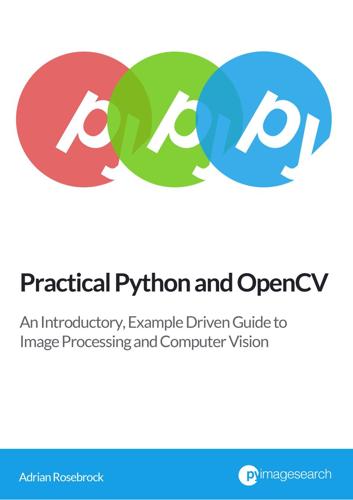
Practical Python and OpenCV
by
Adrian Rosebrock
Computer vision is now prevalent in many areas of your life, whether you realize it or not. We apply computer vision algorithms to analyze movies, football games, hand gesture recognition (for sign language), license plates (just in case you were driving too fast), medicine, surgery, military, and retail. 3 introduction We even use computer visions in space! NASA’s Mars Rover includes capabilities to model the terrain of the planet, detect obstacles in it’s path, and stitch together panorama images. This list will continue to grow in the coming years. Certainly, computer vision is an exciting field with endless possibilities. With this in mind, ask yourself, what does your imagination want to build?

Mars Crossing
by
Geoffrey A. Landis
Published 15 Jan 2000
The Jesus do Sul was their only chance, and if they could only save three, it would be best to just not mention that fact until they actually made it to the pole. If they got to the pole. Two, he wrote. Valles Marineris. The enormous Valles Marineris stretched like a huge barrier across their path. They would have to cross it to get to the northern hemisphere. But the key to the expedition would be the rockhopper, the six-wheeled, pressurized Mars rover, and how would they carry the rockhopper up and down a vertical cliff two miles high? They'd have to deal with it somehow. Three, he wrote. Can we carry enough consumables? Oxygen would come from the zirconia cells in their suits and the larger zirconia electrolyzer built into the rockhopper; as long as they had power, they would be able to break down carbon dioxide for oxygen to breathe.
…
He would look at the inertial guidance readout on the rockhopper's console, and think, That's wrong. We're going the wrong way. But then he would look at the sun, and realize, no we're going the right way. And then the entire planet would seem to spin around him for a moment until he was reoriented. Mars confused his sense of direction. Three of them in the cabin of a Mars rover designed for two was one too many. They were crammed together so tight that Trevor could barely move without hitting one of the others with his elbow. After a while watching Mars was almost hypnotic. It didn't really change. One ridge of yellowish stone would dwindle down to a wall no higher than his waist and then disappear, and be replaced by another just like it.
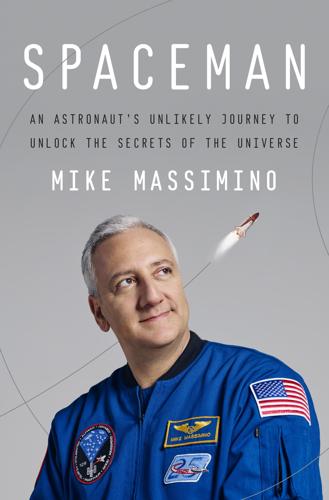
Spaceman: An Astronaut's Unlikely Journey to Unlock the Secrets of the Universe
by
Mike Massimino
Published 3 Oct 2016
If you design a robot to do A, B, and C, and then you get to space and it turns out the robot needs to do X or Y or Z, you’re out of luck. If you have a person with a human brain operating hands with opposable thumbs, you can shift gears on the fly, work the problem, devise a solution. As incredible as the shuttle and the station and the Mars rovers are, the most valuable piece of equipment you can have in space is a person. In the end, the robot mission did one vital and critical thing: It kept the Hubble servicing team together and moving forward. Gene Kranz told me once that after Apollo was over, to keep his people in one place, he put them at Ellington Field until the shuttle program started.
…
Only an astronaut could have done this. Flattered as I was, the point the article was trying to make wasn’t really about me. It was about the importance of astronauts. It was the same conclusion we came to after researching the robot mission to Hubble. Unmanned space travel is a great first step; lunar probes and Mars Rovers are excellent tools for scouting a path to explore—but you still need people do to the exploring. What was accomplished on those Hubble servicing missions—upgrading the instruments, repairing the STIS, yanking off that handrail—would have been impossible without astronauts, and we couldn’t have done it without the shuttle.
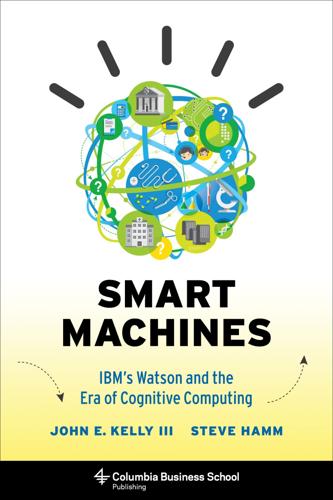
Smart Machines: IBM's Watson and the Era of Cognitive Computing (Columbia Business School Publishing)
by
John E. Kelly Iii
Published 23 Sep 2013
The technology represents an advance in the field of computation creativity. It’s the first time that chemistry has been combined with cultural artifacts (recipes) and psychological principles to create something that’s brand new. Today, robots with rudimentary sensing abilities generate a lot of excitement in the popular media. The Mars rover Curiosity operates on the surface of the Red Planet semiautonomously and “sniffs” the air for methane gas searching for signs of life. Experimental self-driving vehicles are capable of using vision and other senses to navigate through cities without colliding with buses, running over pedestrians, or getting speeding tickets.
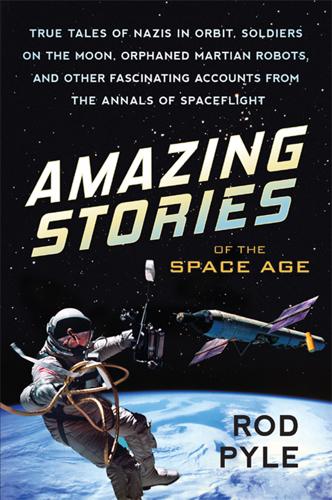
Amazing Stories of the Space Age
by
Rod Pyle
Published 21 Dec 2016
A better way to proceed, they thought, would be to send human crews past Mars and Venus on flyby missions, and they could dispatch robotic probes while they were in the neighborhood (as they looped the planets at close range). Humans controlling those machines while in close proximity and with little to no radio delay should be far more reliable. Of course, as we have seen, the robots do just fine. In today's world, where the Curiosity Mars rover can land itself and drive for a day or more unassisted, and Elon Musk's rockets can make autonomous, pinpoint landings on a lurching seagoing barge after reentering the atmosphere, the mission plans of EMPIRE seem quaint—a product of a bygone era, notions of romantic human exploration in deep space.
…
See also Manned Orbiting Laboratory project weapons in space in, 267–77 See also military projects in space; Space Race Colliers (magazine), 51, 85–86 Collins, Michael, 147, 150, 155 Columbia (space shuttle), loss of in 2003, 213, 249, 255–56, 258, 260 flown five times before loss of, 254 problem on an earlier launch of, 261 Columbiad (Verne's fictional moonship), 304n12 Conquest of Space, The (movie), 56, 86 Conrad, Pete, 238–39, 241–42, 244, 245–46, 247 Corona satellite program, 135, 313n8 crewed missions. See manned spaceflight Crippen, Robert, 143 Crocco, Gaetano, 92–93, 96, 97 Crossfield, Scott, 174, 175, 183 cryogenic technology. See rocket fuels Curiosity (Mars rover), 100 DARPA, 61, 167 Das Marsprojekt [The Mars Project] (von Braun), 35–36, 92, 235–36, 309n8 mission plan described in, 38, 43–51, 52–53, 305n14 after arrival on Mars, 48–49 Mars ferries, 45–48 use of large gliders while on Mars, 36, 38, 39, 41 Davy Crockett M-29 nuclear howitzer, 32, 275 Deep Space Industries, 295 Defense Research and Engineering, 136 Delta rockets, 252, 294 Department of Defense, 133, 140, 165 desegregation at NASA, 322n1 Destination Moon (movie), 56 Devon Island (aka “Mars on Earth”), 8, 52–53 Directed Gas Weapon for Close-In Fighting, 271, 273 “Directorate of R&D, Future Weapons Office,” 266–73 Discovery (space shuttle), 254, 256–57, 258 Disney, Walt, 50, 51, 86–87, 297, 309n13 Disneyland (TV show), 86 Doolittle raid on Tokyo, psychological impact of, 16, 301n9 “Dorian” (telescopic camera), 136, 139, 143–44 Dornberger, Walter, 158, 170 Dragon capsule, 212, 322n2 Dream Chase mini-shuttle, 78–79 D-ring on the Skylab, 245–46 “dry workshop,” 235 Duke, Charlie, 151–52 Dunne, Dick, 153 Dyna-Soar, Project (X-20 spaceplane), 64, 112, 157–68, 170, 177, 179, 182, 250, 285 compared to Spiral, 286 designed so that orbiter could be reused, 249 drawings of, 161, 163 end of, 130, 131, 166, 167, 251 mission changed from glider to orbital craft, 164–65, 315n5 possible use of weapons on, 265 renamed the X-20, 110, 164–65 as replacement for A-12/SR-71 spy plane, 166 rescue plans for, 214–15 specifications for, 158, 160, 162 X-15 design used for, 110, 166, 179 Dyson, Freeman, 59–60, 62, 64, 66 Early Manned Planetary-Interplanetary Roundtrip Expeditions (EMPIRE).

Robot Futures
by
Illah Reza Nourbakhsh
Published 1 Mar 2013
I have worked to improve robots’ basic capabilities—a new vision system for seeing the world three-dimensionally, a new strategy for navigating indoor spaces without getting lost (Nourbakhsh et al. 1997; Nourbakhsh, Powers, and Birchfield 1995). I have also participated in the creation of robots that we have deployed around the world: a seven-foot-tall tour guide that led visitors for four years through Dinosaur Hall at the Carnegie Museum of Natural History (Nourbakhsh et al. 1999); miniature programmable xiv Preface Mars rovers installed in the National Air and Space Museum; the Exploratorium and the Japan World Expo (Nourbakhsh et al. 2006). But most of all I have applied new robotic technologies to interactive devices, imbuing new products with robotic powers: a pogo stick that launches the rider meters into the air (Brown et al. 2003); a vision system used by artists to make their art respond to the viewer (Rowe, Rosenberg, and Nourbakhsh 2002); a panorama robot that turns a regular camera into a billion-pixel documentary tool (Nourbakhsh et al. 2010); a messaging system that helps kindergarteners stay in touch with their parents; a smart electric car that local mechanics can make using used car parts (Brown et al. 2012); a robot-building kit that helps middle-school students build and program any robot out of craft materials (Hamner et al. 2008).
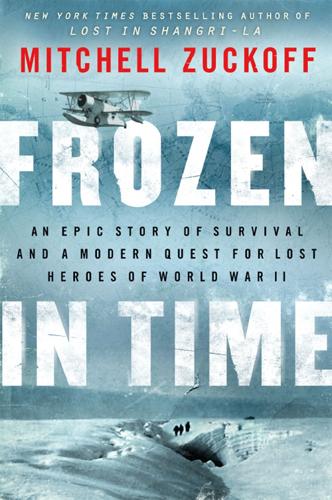
Frozen in Time
by
Mitchell Zuckoff
Published 4 Mar 2013
The final member of the North South Polar team will join us before takeoff: Alberto Behar, the expedition’s chief scientist, a man whose résumé can make almost anyone feel inadequate: PhD in electrical engineering; two-decade career at NASA’s Jet Propulsion Laboratory, including oversight of an experiment on the Mars rover Curiosity; robotics expert; rescue scuba diver; helicopter and fixed-wing pilot; emergency medical technician; faculty member at Arizona State University. Forty-five years old, married with three children, Alberto has been designated “highly qualified” to become a NASA astronaut and is awaiting word on an interview.
…
Army’s Greenland bases and took part in overseeing the rescue efforts. MODERN ALBERTO BEHAR—A member of the Duck Hunt expedition of 2012, Behar holds a PhD in electrical engineering and a degree in robotics. He designed the down-hole camera that played a pivotal role in the expedition. Behar also oversees one of the experiments aboard the NASA Mars rover Curiosity. AARON BENNET—An independent television producer, Bennet served as Lou Sapienza’s de facto business partner, handling financial, media, and other duties while he pitched a show based on the exploits of Lou and his exploration company. JAMES “JIM” BLOW—A U.S. Coast Guard commander, Blow serves in the Office of Aviation Forces and was the service’s liaison and mission leader for the Duck Hunt.

Leaving Orbit: Notes From the Last Days of American Spaceflight
by
Margaret Lazarus Dean
Published 18 May 2015
A sign posted on the wall in the News Center reminds us that we aren’t to go anywhere other than the Press Site or the Launch Control cafeteria without an escort. After passing this sign a few times, it occurs to me that the implication is that we are allowed to go to the Launch Control cafeteria without an escort. I ask a journalist wearing a Mars rover T-shirt whether we can really cross the street to go to the cafeteria, and he answers “of course,” with a look as though I am crazy for asking. “The food’s not great, though,” he warns me, as if I came here for the cuisine. Walking to the cafeteria, I stop at a crosswalk on VAB Road to let a tour bus go by.
…
—Konstantin Tsiolkovsky, 1911 There can be no thought of finishing [work on rockets], for “aiming at the stars,” both literally and figuratively, is a problem to occupy generations, so that no matter how much progress one makes, there is always the thrill of just beginning. —Robert Goddard, 1932 EPILOGUE On August 6, 2012, the Mars rover Curiosity approached the surface of Mars after a nine-month journey through interplanetary space. At NASA’s Jet Propulsion Laboratory in Pasadena, California, a room full of flight controllers and engineers bit their nails and paced the floor while Curiosity went through its complicated and daring entry sequence, nicknamed the “seven minutes of terror.”
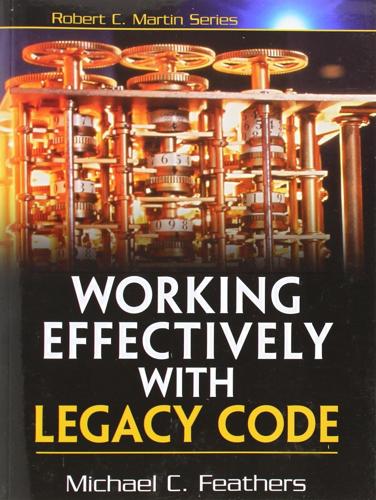
Working Effectively With Legacy Code
by
Michael Feathers
Published 14 Jul 2004
If understanding is a big issue on your project, take a look at Chapter 16, I Don’t Understand the Code Well Enough to Change It, and Chapter 17, My Application Has No Structure, to get some ideas about how to proceed. Lag Time Changes often take a long time for another very common reason: lag time. Lag time is the amount of time that passes between a change that you make and the moment that you get real feedback about the change. At the time of this writing, the Mars rover Spirit is crawling across the surface of Mars taking pictures. It takes about seven minutes for signals to get from Earth to Mars. Luckily, Spirit has some onboard guidance software that helps it move around on its own. Imagine what it would be like to drive it manually from Earth. You operate the controls and find out 14 minutes later how far the rover moved.
…
Unfortunately, we don’t have software that knows how to navigate around obstacles in the build, things such as test failures. What we try to do instead is bundle a bunch of changes and make them all at once so that we don’t have to build too often. If our changes are good, we move along, albeit as slow as the Mars rover. If we hit an obstacle, we go even slower. The sad thing about this way of working is that, in most languages, it is completely unnecessary. It’s a complete waste of time. In most mainstream languages, you can always break dependencies in a way that lets you recompile and run tests against whatever code you are working on in less than 10 seconds.

The Ultimate Engineer: The Remarkable Life of NASA's Visionary Leader George M. Low
by
Richard Jurek
Published 2 Dec 2019
Ronald Reagan, “Remarks at White House Ceremony Marking the Fifteenth Anniversary of the Apollo 11 Lunar Landing,” 20 July 1984, Ronald Reagan Presidential Library and Museum, https://www.reaganlibrary.gov/research/speeches/72084d. 77. 130 Cong. Rec. S20,496–97 (daily ed. 23 July 1984) (statement of Senator Moynihan). Epilogue 1. Leonard David, “Mars Rovers Are in Good Shape for Winter,” NBCNews.com, last updated April 25, 2006, http://www.nbcnews.com/id/12480225/ns/technology_and_science-space/t/mars-rovers-are-good-shape-winter/#.XLXSuOhKiHt. 2. Tracey Leibach, “Out of This World Connections,” Rensselaer, Fall 2006, online edition, https://www.rpi.edu/magazine/fall2006/onelastthing.html. 3. McCurdy, Inside NASA, 25. 4.

Autonomous Driving: How the Driverless Revolution Will Change the World
by
Andreas Herrmann
,
Walter Brenner
and
Rupert Stadler
Published 25 Mar 2018
For example, Lockheed Martin has developed off-road trucks that can drive in a convoy even in uninhabited and difficult terrain. Equipped with GPS and laser sensors, they are able to record the area’s topology and stay together in a convoy. Another very early application of autonomous driving comes from the aerospace industry. The Mars Rover Curiosity is a self-driving extraterrestrial vehicle developed by NASA. It is equipped with navigation cameras that supply images of the terrain a few metres ahead. From those images, the on-board computer creates a map identifying all potential obstacles and dangerous objects. An autonomous way-finding routine then evaluates all possible routes to reach a certain point.
…
See Le Super Electric Ecosystem (LeSee) Lexus, 173 Liability, 355 356 law, 237 mechanism, 237 Lieu, Ted, 145 Life magazine, 40 436 Light detection and ranging technology (lidar technology), 95, 96, 126 lane-level and intersection mapping based on, 105 sensors, 338 systems, 181, 331 Line-haul transportation, 160 168 Little, Patrick, 126 Live roads, 100, 102 Living Machine, The, 39 Localisation, 94 accurate lane, 103 vehicle’s own, 104 Localising, 94, 101 104 Logistics operations, 159 London Centre for Economic and Business Research in, 189 dynamic patterns of movement in city of, 390 lidar print cloud of Blackfriars Bridge in, 104 pedestrians in traffic in, 196 Long-distance autonomous vehicle, interior of, 15, 16 Long-haul trucks, 69 Long-term evolution (LTE), 65 LTE-V, 131 133 Luxe app, 319 Lyft, 174, 344 Ma, Jun, 373 Machine-learning, 99, 113, 332 333 algorithms, 93, 96, 98, 116 117, 336 technology, 332 Macroeconomic analyses, 243 ‘Made in China 2025’, 371 372 Magna, 9 Manufacturers, 17, 21, 45, 55, 84, 179 181, 263, 331 Mapping, 94, 101 104 Index Mars Rover Curiosity, 153 Mass motorisation, 39 McKinsey & Company, 320 Megacities, 58, 381 383 Megatrends in mobility, 25 connectivity, 25 26 electrification, 26 27 sustainability, 27 28 urbanisation, 26 Melody of speech, 292 Mercedes, 137, 179, 180, 316, 318, 322, 332 333, 398 F015, 282 Mercedes-Benz, 372 Mercedes-Benz robot, 290 S-Class cars, 184, 261 Self-Driving F015, 5 Mercedes’ Self-Driving F015, 5 Metaphors, 290 Metropolises, 382, 406 Meyer, Andreas, 175 Microsoft Windows, 9, 183, 247, 327 Military industry, 153 Mobileye, 9, 16 Mobility, 363 autonomous, 171 172 behaviours, 222 connected, 138 platforms, 174 177, 184, 317 Mobility as social interaction communication, 198 200 cultural differences, 195 197 pedestrians in traffic in London, 196 pedestrians in traffic in Teheran, 197 Mobility, disruptions in, 31, 34 arguments, 34 35 history, 32 33 OICA, 34 Mobility, megatrends in, 25 connectivity, 25 26 electrification, 26 27 Index sustainability, 27 28 urbanisation, 26 Mobility, problem with implications of congestion in United States, 188 safety, 192 193 time, costs and emissions, 187 192 Modes of transportation, 12, 81, 138, 343, 384 Modified 3-series BMW, 180 MOIA Company, 317 Monitoring, 106 108 Monotonous voices, 292 Montparnasse Station, Paris, accident at, 32, 33 Moore’s Law, 124 Moovel mobility platform, 19, 174, 317 Moral behavior, 253 254 Morgan Stanley Research, 65, 66 MP3 technology, 312 Multi-layered cyber security approach, 145 Multi-purpose vehicles, 14 Multimodal approach, 281 Multimodal transport app, Finland, 371 Multipliers, 225, 228 Musk, Elon, 181 National Highway Traffic Safety Administration, 55, 57, 61, 125, 144, 191 Nauto, 41, 42 Navia, 158 Navya, 41, 42 Nelson, Bill, 146 Netflix, 141, 311, 319 Network coverage, 403 Neural Networks, 99, 115 116 New Displays, 283, 284 New York City public transportation network, 363 437 Nida-Rümelin, Julian, 253 254 Nielsen’s ten usability heuristics, 283 NioEV’s new sports car Nio EP9, 5 Nissan, 6, 198 Nissan Leaf, 27 Nissan Teatro for Dayz, 273 274 Nokia, 130, 131 Norms, 241 242, 243 246 NuTonomy, 6, 9, 16, 112, 315 Nvidia, 6, 9, 16, 117, 125, 183, 315 Object recognition, 55, 93 Ohlsen, Jörg, 83 Online services, 129, 136 137 OnStar, 136 137 Open-source software, 119 Operating costs, 301 302 Organisation Internationale des Constructeurs d’Automobiles (OICA), 34 Original equipment manufacturers (OEMs), 146 Orix, 317, 344 Output layer, 119 Over-provisioning, 127 Paolo (Netflix Design Director), 228 PARK incentive program, 385 Park24, 317, 344 Parking space, 304 system, 78 Parsons, Philip, 388 Particulate matter (PM), 191, 204 Pearl River Delta, 386, 389 Pedestrians car’s interactions with, 200 traffic in London, 196 traffic in Teheran, 197 Index 438 Peer-to-peer car sharing, 342 343 service, 350 351 Perceptual errors, 249 Peters, Gary, 146 Peugeot Instinct concept car, 273 Physical roadside objects, 103 Pikes Peak drive, 179 Pivotal 2015, 320 Planning, 94, 106 108, 406 behavioural, 107 mission, 106 107 trajectory, 336 Platooning, 133, 163, 165 autonomous truck, 347 vehicle, 299 Platoons, 8, 49, 164, 166, 299, 369 Players manufacturers, 179 181 mobility platforms, 184 new players, 183 suppliers, 181 182 technology companies, 182 183 Playing fields, autonomous driving agricultural sector, 154 157 autonomous tractor in use, 156 last-mile delivery, 168 line-haul transportation, 160 168 logistics operations, 159 military and aerospace industry, 153 public transportation, 157 159 warehouse transportation, 159 Plug-in hybrid electric vehicles, 26 Pokrzywa, Jack (Director of SAE), 244 245 Politicians, 172, 249 Politics, 171 173 Polmans, Kristof, 123 124 Pooling, 342 345 Power, J.
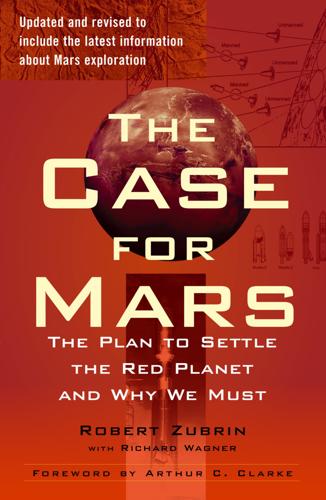
Case for Mars
by
Robert Zubrin
Published 27 Jun 2011
If they should discover a heated pool relatively close to the surface it will be time to get out the drilling rig. Water is, after all, the staff of life. NAVIGATION ON MARS In addition to maintaining communication with the home base, Mars explorers will also need to navigate. While good maps of Mars are available from orbital imaging, the essential problem for a Mars rover crew will be determining their own location. This is critical not only for documenting the location of various scientific finds, but, more importantly, to prevent getting lost. On the deserts of Mars, as in the North African desert during World War II, getting lost means dying. A radio beacon at the base could help a crew find its way home, but its range would reach at most only to the nearby horizon (just 40 kilometers away, remember).
…
A ball on top of a hill is in unstable equilibrium, because if pushed in either direction it will roll away, accelerating itself from its original position. A ball on a flat surface in the bottom of a bowl is in stable equilibrium, because if pushed, it will roll back to its starting point. STR: Solar thermal rocket. Telerobotic operation: Remote control of some device, such as a small Mars rover equipped with TV cameras, by human operators at a significant distance away. Thrust: The amount of force a rocket engine can exert to accelerate a spacecraft. Titan IV: An expendable launch vehicle manufactured by the Lockheed Martin Corporation capable of delivering 20,000 kg to LEO or 5,000 kg to a minimum energy trans-Mars trajectory.
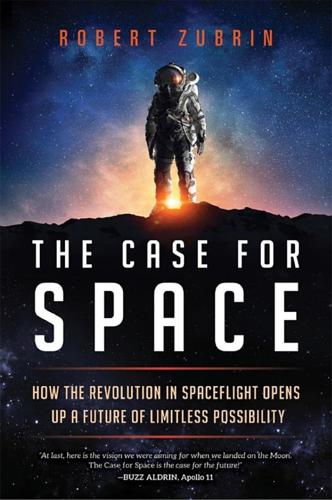
The Case for Space: How the Revolution in Spaceflight Opens Up a Future of Limitless Possibility
by
Robert Zubrin
Published 30 Apr 2019
The first, for which credit is due to the planetary exploration programs led by NASA and the European Space Agency, is the discovery of vast amounts of water on Mars. In 1996, NASA sent the Pathfinder lander and the Mars Global Surveyor (MGS) orbiter to Mars. Arriving in 1997, Pathfinder deployed Sojourner, the first Mars rover. This little craft proceeded to discover conglomerate rocks, proof of the past existence of liquid water on the Martian surface. Operating in Mars orbit for the following decade, MGS mapped thousands of water-created features on the Martian surface, including the very flat basin of what looks like a former northern ocean.
…
Specific impulse is generally viewed as the most important factor in judging a rocket engine's performance. Frequently abbreviated “Isp.” SSTO: Single-stage-to-orbit. Starship: A fully reusable two-stage-to-orbit launch vehicle with a payload capacity of 150 tons being developed by the SpaceX company. Formerly known as the BFR. telerobotic operation: Remote control of some device, such as a small Mars rover equipped with video cameras, by human operators at a significant distance away. ton: In this book, a ton is a metric ton, or one thousand kilograms. Equal to 2,200 pounds. thrust: The amount of force a rocket engine can exert to accelerate a spacecraft. TMI: Trans-Mars injection, a maneuver that places a spacecraft on a trajectory to Mars.
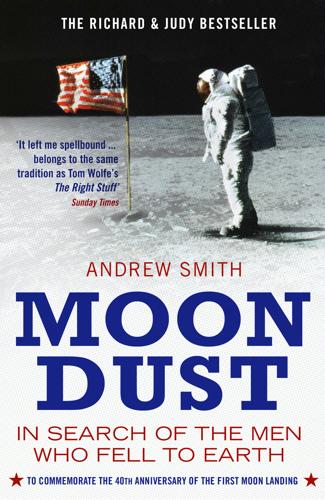
Moondust: In Search of the Men Who Fell to Earth
by
Andrew Smith
Published 3 Apr 2006
I’ll come to see him as one of Apollo’s greatest mysteries, somehow representative of the ambiguity at its core: of the tension between this towering act of creativity and the avarice, fear and intolerance that enabled it; of the way all that is best in humanity appears to have been driven by everything that is worst. On the way out of the hangar, I walk past a corral of remote-controlled mini Mars Rover robot vehicles, where a recorded voice is pleading “Ladies and gentlemen, please do not drive the Rovers into each other!” Poor NASA: they give us these wonderful machines and our first impulse is still to see what they look like when they crash. Ballard would shake with joy. I get back on the bus, anoint my experience with some “memorabilia” from the shop, where the childrens’ T-shirts read “I need my space,” and head for Cocoa Beach.
…
Cernan knows there has to be more. He retrenches. “But it seems to be a step we need to take in order to answer some of the questions human beings have always had. Who are we? What are we? What is the significance of time? It takes on a whole new perspective in space. It’s never going to be enough just to send a Mars Rover. Mankind has always followed.” As I gather up my stuff, I’m astonished to realize that he got me, that I’m feeling inspired all over again by what Cernan and the others did, and the prospect of others following one day – though it will never be the same as the first time, because we know the dragons aren’t there.
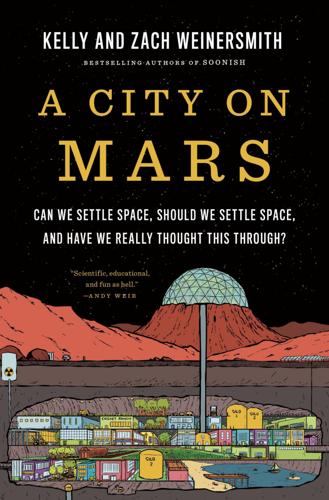
A City on Mars: Can We Settle Space, Should We Settle Space, and Have We Really Thought This Through?
by
Kelly Weinersmith
and
Zach Weinersmith
Published 6 Nov 2023
A shorter option is “space outposts,” but it doesn’t capture the idea that one day people will have families, children, and institutions. Meanwhile, “space cities” sounds substantially more grand than anything we expect to exist anytime soon, and “space villages” sounds like it involves peasants in burlap pressure suits with horse-drawn Mars rovers. The prolific if not always poetic Isaac Asimov once suggested our favorite option—“spome.”[*] Try saying it. Spome! Look, you’re already smiling. Spome is short for “space home,” and while it certainly lacks historical baggage, it also sounds like an off-brand bar soap or a buildup a surgeon has to extract from your kidneys.
…
Now, some of the system’s heat is used to produce electricity. The appeal here is you’ve got a more or less permanent and extremely reliable power source. In the past these have been used as Arctic heat sources and even pacemakers. Plutonium-238 versions powered scientific equipment left by Apollo astronauts on the Moon, and they’ve also been used on Mars rovers. They are absolutely crucial for very-deep-space probes, from whose vantage point solar power is a nonstarter. Thanks to their radioisotope thermoelectric generators, the Voyager 1 and Voyager 2 probes launched in 1977 have left the solar system and continue to transmit data home. The cool thing about devices like these is that they’re simple and just work.
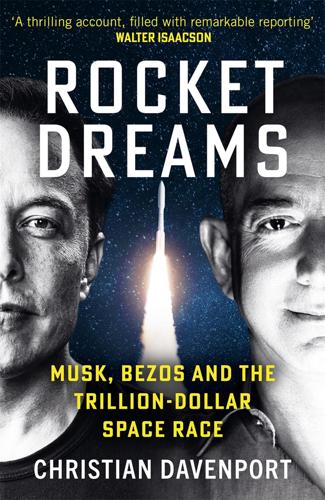
Rocket Dreams: Musk, Bezos and the Trillion-Dollar Space Race
by
Christian Davenport
Published 6 Sep 2025
In the middle of 2021, Blue Origin went on a hiring spree, posting a couple dozen openings that seemed straight out of Star Trek: a “space resources mining systems lead,” a “space resources chemist,” a “space resources materials scientist”—all of whom would be part of a team “focused on the development of ISRU technologies related to the manufacturing of useful products from regolith; such products could include, but are not limited to, alloys, photovoltaic cells, building materials or solar reflectors.” To give it an edge in this particular niche of space development, Blue made its first acquisition, buying Honeybee Robotics, which had built the drills, sensors, and scoopers on several of NASA’s Mars rovers. Most importantly, Bezos was engaged in a way he hadn’t been since the beginning of the COVID pandemic. Inspired by his spaceflight and galvanized by the lunar lander loss to SpaceX, he started giving Blue much more of his attention. Employees who had grown up at Blue when Bezos was distracted now were getting feedback on their work from the boss directly, and learning how intense and demanding the man could be.
…
“We tested, failed, retested, and then succeeded to build the real technology,” Stamenković said. “We proved it’s not sci-fi but feasible and working.” Before coming to Blue, Stamenković had worked at NASA’s famed Jet Propulsion Laboratory, the arm of the space agency that had pulled off some of its most daring feats, from Mars rovers to building space-craft that have visited every planet in the solar system, the sun, and even interstellar space. He had been lured to Blue, however, “because I wanted to be fast in being able to really take on big challenges, to ask what really has to be done, and then just try to solve it.” Blue Alchemist was, he said, “an enabler, and that’s what I love about it.”

Age of Context: Mobile, Sensors, Data and the Future of Privacy
by
Robert Scoble
and
Shel Israel
Published 4 Sep 2013
Half of the conversations on the internet involve sensor-enabled machines that, more often than not, talk with other machines. Sensors exist everywhere on Earth, as well as above and below it. Instead of killing canaries in mines, we now use sensors to detect problems and alert people. They enable the Mars rover Curiosity to search for water and life and report what they find to people on Earth. Jet engines on commercial planes talk in a social network with technicians to increase fuel economy. Sensors keep health officials informed if you are epileptic, have heart problems or suffer from vertigo.

Architects of Intelligence
by
Martin Ford
Published 16 Nov 2018
We built a few autonomous vehicles together and we also wrote a book together drawing on the research and intelligence systems we were developing. Through the research I was doing, I wound up collaborating with a team at the NASA Jet Propulsion Laboratory that was working on the Mars rover vehicle. NASA was interested in applying the machine perception systems and algorithms that they were developing to the Mars rover vehicle project. I figured that this was as close as I’m ever going to get to go into space! MARTIN FORD: So, there was actually some code that you wrote running on the rover, on Mars? JAMES MANYIKA: Yes, I was working with the Man Machine Systems group at JPL in Pasadena, California.
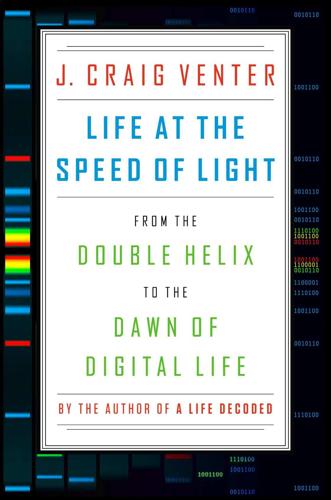
Life at the Speed of Light: From the Double Helix to the Dawn of Digital Life
by
J. Craig Venter
Published 16 Oct 2013
If one accepts that liquid water is synonymous with life, Mars should be inhabited by similar organisms. Evidence is increasing that Mars had oceans three billion years ago and again perhaps as recently as one billion years ago, when the polar ice caps melted following a meteor impact. Evidence from the many Mars rovers and probes suggests that, though habitable environments once existed on the planet, they probably dried up several billion years ago. Radiation levels are much higher on Mars than they are on Earth, because the atmosphere is one hundred times thinner than our planet’s, and Mars does not have a global magnetic field.

To Be a Machine: Adventures Among Cyborgs, Utopians, Hackers, and the Futurists Solving the Modest Problem of Death
by
Mark O'Connell
Published 28 Feb 2017
A little while ago, she said to me, ‘Dad, I don’t care if you become a robot, but you have to keep your face. I don’t want you to replace your face.’ Personally, I don’t have any sentimental attachment to my face, any more than I have a sentimental attachment to any other part of my body. I could look like the Mars Rover for all I give a shit. But she’s pretty attached to my face, I guess.” He took a long hit of the juice, and exhaled heavily; a billowing plume of pure whiteness obscured momentarily this face of his to which he had no sentimental attachment, the dark and faintly Asiatic eyes, the fanatically flared nostrils of a proud and strangely driven man.

Exoplanets: Hidden Worlds and the Quest for Extraterrestrial Life
by
Donald Goldsmith
Published 9 Sep 2018
The survey’s results, which often reflect the intense scientific and emotional involvement of its participants, have a serious impact on the congressional and other committees that consider providing funds for the decadal survey’s list of future projects. For example, when WFIRST appeared at the top of the list that emerged from the 2010 survey, its chances of becoming a reality bounded upward.7 Some would say that this result occurred because of the “Mars Rover effect”—the need to create a vehicle with something for everyone potentially involved in the project’s outcome—and that this effect risks diluting the scientific results. WFIRST’s backers regard this gamble as entirely worthwhile. How to Overcome Diffraction to Observe Exoplanets Although WFIRST will have its own coronagraphic mask, at a cost estimated at $500 million, the spacecraft could eventually employ a markedly different approach to blocking the light from a star so that its planets become visible.
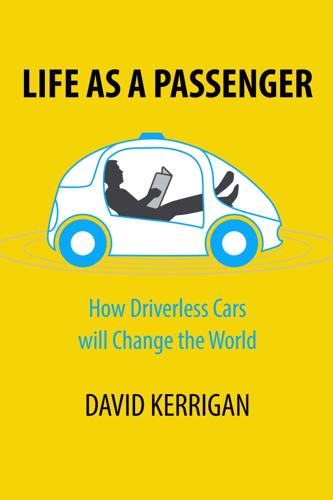
Life as a Passenger: How Driverless Cars Will Change the World
by
David Kerrigan
Published 18 Jun 2017
This is clearly an area of interest for driverless cars manufacturers. For example, Google has a patent[281] for augmented trajectories for autonomous vehicles, Toyota has a patent[282] for remote operation of autonomous vehicle in unexpected environment, and Nissan[283] has cooperated with NASA to use the remote guidance software adapted from the Mars Rover. Obstacles - Literal and Imagined While researching the topic of driverless cars, I've seen countless articles on why driverless cars “simply won't work”. The better-written articles provide scenarios and justifications for their conclusions, but many seem more intent on trying to appear smart and find reasons it might struggle to be deployed in current situations rather than trying to constructively consider what it would take to deploy it successfully.

Nomadland: Surviving America in the Twenty-First Century
by
Jessica Bruder
Published 18 Sep 2017
From there I’d set out on foot with a laptop and a smartphone, using GPS to hunt for the markers at each corner. If cell reception was strong enough, I would live-stream video of the hike directly to Linda’s phone. She could watch and give directions, pointing out any features of the land she wanted to explore, like a remote pilot at the controls of a low-tech, human-powered version of the Mars rover. After puzzling out the time difference—Arizona eschews daylight savings—we agreed to begin the next day at one o’clock my time, three o’clock her time. Linda already sounded excited about the vicarious journey. “Try to see the Gadsden Hotel while you’re in Douglas,” she urged. “It has marble pillars and Tiffany stained glass from when the area was booming with copper mines.”

Toast
by
Stross, Charles
Published 1 Jan 2002
But nothing bolted together in the past ten years will even break wind, so to speak. Excuse me, break stride. And real-time systems won’t even notice it; they mostly run on millisecond timers and leave the nonsense about dates to external conversion routines, if they understand the concept of dates at all, thank you very much, like a Mars Rover running on mission elapsed time in seconds. Good, much better, thank you.” The harried waiter made a break for the other diners and I began to dig myself out of the hole in my chair I’d unconsciously tried to retreat into. “It’s just an artifact of the datum,” she continued implacably, ignoring the coffee cut placed apologetically before her.

The Doomsday Calculation: How an Equation That Predicts the Future Is Transforming Everything We Know About Life and the Universe
by
William Poundstone
Published 3 Jun 2019
Were these planets black holes they’d be too small to eclipse their suns’ light. This confirms that planets do not commonly turn into black holes by any natural process. We can similarly rule out strange-matter planets as a common thing. Spectra of planetary atmospheres show familiar chemistry. The moon landers and the Mars rovers did not transmute into a blob of strangelets. Every working instrument we’ve put on another planet proves those bodies are made of atoms with nuclei of protons and neutrons—made of up and down quarks. Another concern is that supernovae might periodically sterilize all the star systems around them.

More Joel on Software
by
Joel Spolsky
Published 25 Jun 2008
For example, “After you turn the light on, you can see your shoes” plus “The light went on in the past” implies “You can see your shoes.” Dynamic logic is appealing to brilliant theoreticians like Professor Zuck because it holds up the hope that you might be able to formally prove things about computer programs, which could be very useful, if, for example, you could formally prove that the Mars Rover’s flash card Advice for Computer Science College Students 79 wouldn’t overflow and cause itself to be rebooted again and again all day long when it’s supposed to be driving around the red planet looking for Marvin the Martian. So in the first day of that class, Dr. Zuck filled up two entire whiteboards and quite a lot of the wall next to the whiteboards proving that if you have a light switch, and the light was off, and you flip the switch, the light will then be on.

The Second Machine Age: Work, Progress, and Prosperity in a Time of Brilliant Technologies
by
Erik Brynjolfsson
and
Andrew McAfee
Published 20 Jan 2014
Claudine Zap, “3D Printer Could Build a House in 20 Hours,” August 10, 2012, http://news.yahoo.com/blogs/sideshow/3d-printer-could-build-house-20-hours-224156687.html; see also Samantha Murphy, “Woman Gets Jawbone Made By 3D Printer,” February 6, 2012, http://mashable.com/2012/02/06/3d-printer-jawbone/; “Great Ideas Soar Even Higher with 3D Printing,” 2013, http://www.stratasys.com/resources/case-studies/aerospace/nasa-mars-rover. Chapter 3 MOORE’S LAW AND THE SECOND HALF OF THE CHESSBOARD 1. G. E. Moore, “Cramming More Components onto Integrated Circuits,” Electronics 38, no. 8 (April 19, 1965): 114–17, doi:10.1109/jproc.1998.658762. 2. Ibid. 3. Michael Kanellos, “Moore’s Law to Roll on for Another Decade,” CNET, http://news.cnet.com/2100-1001-984051.html (accessed June 26, 2013). 4.

Chasing New Horizons: Inside the Epic First Mission to Pluto
by
Alan Stern
and
David Grinspoon
Published 2 May 2018
Second, unlike New Horizons, many of the other missions being considered had not yet been selected, so they had the advantage of making unreasonable promises—basically “Christmas-treeing” their benefits to increase their appeal. Third, the advocates for those missions—like a Europa orbiter or future Mars rovers—were able to serve on the Decadal Survey’s panels because their missions hadn’t been selected and people hadn’t been named to the teams: they hadn’t been funded and so weren’t seen as conflicted in the way the New Horizons advocates were. It was maddening: “I felt like we were trying to drive a car without our hands on the wheel,” Alan said.

Pattern Recognition
by
William Gibson
Published 2 Jan 2003
"I'd rather not tell you. I might start to cry. But never mind. You're on. He wants to meet you in a bar in Roppongi. I think it's a bar. Says there's no name in English, just red lanterns." "A nomiya." "This guy's got me feeling like I live there, and I'm tired of it already. Darryl and I, we're like those Mars Rover jockeys: virtual jet lag. Tokyo time and we're trying to hold down paying jobs in two different time zones back here. So Taki's sent Keiko a map, right? And I've sent it to you, and he says six thirty." "Will I recognize him?" "What we've seen of him, he's not Ryuichi Sakamoto. Mind you, that's not what Keiko thinks.

Bold: How to Go Big, Create Wealth and Impact the World
by
Peter H. Diamandis
and
Steven Kotler
Published 3 Feb 2015
We needed to assemble a team that people would intuitively trust to execute this vision. Chris Lewicki—who had run three different billion-dollar Mars missions at NASA’s fabled Jet Propulsion Laboratory (JPL)—was our first stop. With him as our president and chief engineer, we went on to recruit many of the top engineers who built, designed, and operated Mars rover Curiosity (we knew we were on the right track when Eric received a call from the head of JPL asking us to kindly stop recruiting his best people). And had we stopped there, we might have launched in a credible fashion. We were certainly believable. Both Eric and myself are respected members of the space community.

Ghost Work: How to Stop Silicon Valley From Building a New Global Underclass
by
Mary L. Gray
and
Siddharth Suri
Published 6 May 2019
The human computers at NASA’s Jet Propulsion Lab (JPL), in Pasadena, like the women at Langley Field, were recruited in the 1940s and ’50s as contractors or temporary workers. They made all the calculations at JPL behind the country’s earliest missile launches and bomber flights over the Pacific, as well as the United States’ first satellite and guided lunar missions. They even gave the Mars rover, the planetary exploration vehicle sent to Mars, its first launch plan.34 The majority of women at JPL had a similarly limited career path as the contract workers at Langley. Most started out as paid temps through the Works Progress Administration during World War II. JPL posted ads for part-time help in the mathematics and physics departments of surrounding colleges, calling out, in all caps, “COMPUTERS URGENTLY NEEDED.”35 Below the headline, the job description implied, clearly enough, that young women were its target audience: “Computers do not need advanced experience or degrees but should have an aptitude and interest in mathematics and computing machines.”36 In those days, if an office job didn’t require an advanced degree, that meant it was open to women.
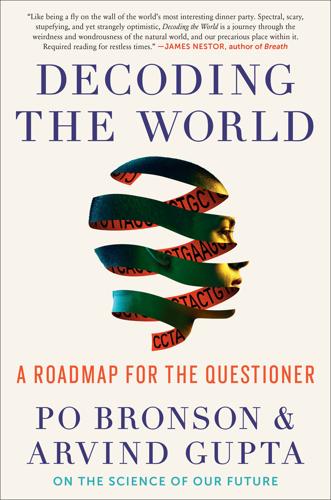
Decoding the World: A Roadmap for the Questioner
by
Po Bronson
Published 14 Jul 2020
Over time, by constantly making disorienting predictions about the future, we have trained society to handle these predictions the only way they know how: to wait and see. Futurism has become a dangerous game. In the ’90s, I was at Wired magazine. They predicted the future would have cryptocurrency, virtual reality, video chat, smart watches, e-commerce, artificial intelligence, robots, movie streaming, Mars rovers, solar power, carbon recycling, social networks, corporate space rockets, and a drastic reduction in infant mortality worldwide. All of that happened. Some of it took a while. A lot of other things did not come true, and a lot of people lost money betting on the specifics, but on the whole an insane amount of wealth was created—so much money that nobody was rich enough to ignore it.

The Alternative: How to Build a Just Economy
by
Nick Romeo
Published 15 Jan 2024
Optimax was founded in 1991 in Rochester, the hometown of Kodak and Xerox. The company makes precision optics for commercial, military, and research applications, with clients ranging from Fortune 500 companies to the Department of Defense and NASA (it produced some of the optical components for the Mars rovers). Plympton joined Optimax in 1995, when there were only ten employees. Almost thirty years later, they have nearly four hundred employees and average 20 percent revenue growth per year. Annual revenues are roughly $50 million. Since the mid-1990s, Optimax has distributed 25 percent of profits every month to employees.

QI: The Book of General Ignorance - The Noticeably Stouter Edition
by
Lloyd, John
and
Mitchinson, John
Published 7 Oct 2010
In a similar spirit, he regarded wine, the sea and sheep as all being the same colour – purply red. Aristotle identified seven shades of colour, all of which he thought derived from black and white, but these were really grades of brightness, not colour. It’s interesting that an ancient Greek from almost 2,500 years ago and NASA’s Mars rovers of 2006 both approach colour in the same way. In the wake of Darwin, the theory was advanced that the early Greeks’ retinas had not evolved the ability to perceive colours, but it is now thought they grouped objects in terms of qualities other than colour, so that a word which seems to indicate ‘yellow’ or ‘light green’ really meant fluid, fresh and living, and so was appropriately used to describe blood, the human sap.

All Your Base Are Belong to Us: How Fifty Years of Video Games Conquered Pop Culture
by
Harold Goldberg
Published 5 Apr 2011
MazeWar’s graphics looked like a black-and-white pen-and-ink drawing come to life. It was, though rudimentary, a 3-D-ish game where you played as a Chien Andalou–style eyeball. The goal was straightforward: shoot from your eyeball to hit other eyeballs. MazeWar’s inventiveness helped Colley land a job at NASA, where he worked for a while on the Mars rover. Then, in 1997, Richard Garriott made an admirable foray into the MMO genre with Ultima Online. Within months of its debut, Ultima Online had 100,000 subscribers who paid monthly fees to play in a world that, except for more primitive artwork, was not unlike EverQuest. The financial success of Ultima Online allowed Garriott, whose father was a NASA astronaut, to take a $30 million ride to the Russian space station and to create a remarkable collection of space-related memorabilia—including a Lunokhod 2 lunar rover from the USSR that still is parked on the moon.

The Martian
by
Andy Weir
Published 1 Jan 2011
“But we’re way off-script now. Just keep it from interfering with your duties, and I’m happy.” “Million-mile-high club,” Martinez said. “Nice!” Johanssen blushed deeper and buried her face in her hands. LOG ENTRY: SOL 444 I’m getting pretty good at this. Maybe when all this is over I could be a product tester for Mars rovers. Things went well. I spent five sols driving in circles; I averaged 93 kilometers per sol. That’s a little better than I’d expected. The terrain here is flat and smooth, so it’s pretty much a best-case scenario. Once I’m going up hills and around boulders, it won’t be nearly that good. The bedroom is awesome.

This Will Make You Smarter: 150 New Scientific Concepts to Improve Your Thinking
by
John Brockman
Published 14 Feb 2012
This is just like the child trying to figure out whether or not a message has been corrupted by talking only to her neighbors. In principle, the Internet can make it possible to connect people directly to information sources, to avoid the illusions of the game of Telephone. Indeed, this happens. Millions of people had, for example, a remarkable direct experience of the Mars rovers. The economy of the Internet as it has evolved incentivizes aggregators, however. Thus we all take seats in a new game of Telephone, in which you tell the blogger, who tells the aggregator of blogs, who tells the social network, who tells the advertiser, who tells the political action committee, and so on.
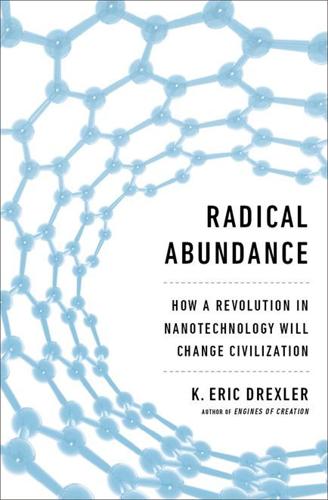
Radical Abundance: How a Revolution in Nanotechnology Will Change Civilization
by
K. Eric Drexler
Published 6 May 2013
Whether the leaders call themselves engineers doesn’t matter (and leadership may at first be diffuse); what matters is that the leadership community knows how to coordinate multiple groups to produce, first a comprehensive set of compatible technologies, and then working systems. This is true in high-energy physics, with its billion-dollar–scale accelerators, detectors, and data processing systems. This is true in space science, with its billion-dollar–scale spacecraft and Mars rovers. This is likewise true of the ten-million-dollar–scale research that yields advanced DNA sequencing systems. All these systems are products of science-intensive engineering in the service of science. Today, AP molecular systems engineering needs this kind of focused effort along with the precursor developments necessary to make it effective.
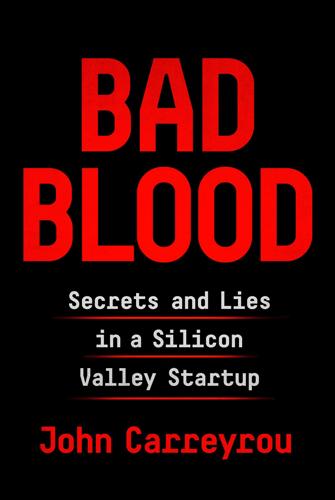
Bad Blood: Secrets and Lies in a Silicon Valley Startup
by
John Carreyrou
Published 20 May 2018
In November 2010, she hired a young engineer named Kent Frankovich and put him in charge of designing it. Kent had just obtained a master’s degree in mechanical engineering from Stanford. Before that, he’d spent two years working for NASA’s Jet Propulsion Laboratory in Pasadena where he’d helped build Curiosity, the Mars rover. Kent in turn recruited Greg Baney, a friend he’d met at NASA who’d gone on to work for SpaceX, Elon Musk’s Los Angeles–based rocket company. At six feet five and 260 pounds, Greg was built like an NFL lineman, but his physique belied a sharp intellect and a keen sense of observation. For a period of several months, Kent and Greg became Elizabeth’s favorite employees.

Nerds on Wall Street: Math, Machines and Wired Markets
by
David J. Leinweber
Published 31 Dec 2008
With this in mind, it’s informative to ask how people work with other algorithms, such as physical robots. Some of the real robots work largely on their own. They have stimulus/response rules and internal representations of their tasks. There are two million iRobot Roomba vacuums sucking up dirt solo. The Mars rovers—Spirit and Opportunity—have significant control over their actions. They have an autonomous mobility system.20 Humans set the goals; the rover takes care of the rest. Other robots are on an extremely short leash. The iRobot PackBot Explosive Ordinance Disposal robot21 comes with a substantial remote control.
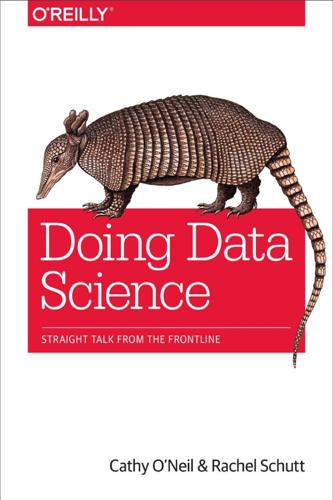
Doing Data Science: Straight Talk From the Frontline
by
Cathy O'Neil
and
Rachel Schutt
Published 8 Oct 2013
It might be useful to think of the sciences as a continuum, where physics is all the way on the right, and as you go left, you get more chaotic—you’re adding randomness (and salary). And where is economics on this spectrum? Marketing? Finance? If we could model this data science stuff like we already know how to model physics, we’d actually know when people will click on what ad, just as we know where the Mars Rover will land. That said, there’s general consensus that the real world isn’t as well-understood, nor do we expect it to be in the future. In what sense does data science deserve the word “science” in its name? Never underestimate the power of creativity—people often have a vision they can describe but no method as to how to get there.

The Nature of Software Development: Keep It Simple, Make It Valuable, Build It Piece by Piece
by
Ron Jeffries
Published 14 Aug 2015
What if the disk is full when the application tries to log the error message about the SQLException that happened because the network was bogged down with a worm? That’s just the beginning of everything that can go wrong. The exhaustive brute-force approach is clearly impractical for anything but life-critical systems or Mars rovers. What if you actually have to deliver in this decade? Our community is divided about how to handle faults. One camp says we need to make systems fault-tolerant. We should catch exceptions, check error codes, and generally keep faults from turning into errors. The other camp says it’s futile to aim for fault tolerance.

The Mysterious Mr. Nakamoto: A Fifteen-Year Quest to Unmask the Secret Genius Behind Crypto
by
Benjamin Wallace
Published 18 Mar 2025
While studying computer science at the University of Washington, a decade before Wei, he got an internship at the Jet Propulsion Laboratory in Pasadena, working on the Deep Space Network to help schedule communications for projects like Voyager, Galileo, and Magellan. The experience changed his life. Seeing the dynamism of smaller projects underway there and at nearby CalTech—ranging from the Mars Rover to neural nets—he became disillusioned with the American space program, with its focus not on long-term space colonization but on headline-grabbing space stations and space shuttles. He came to consider these “sacraments of the astronaut cult” a shortsighted affront—publicity stunts inflicted on taxpayers by a bloated NASA bureaucracy populated by “overhead-slide artists.”
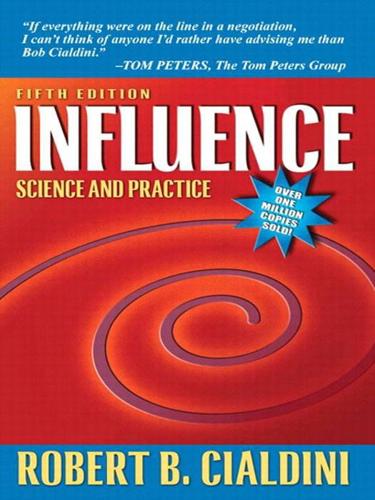
Influence: Science and Practice
by
Robert B. Cialdini
Published 1 Jan 1984
In Olympiad years, we are told precisely the official hair sprays and facial tissue of our Olympic teams.7 During the 1970s, when the magic cultural concept appeared to be “naturalness,” the “natural” bandwagon was crowded to capacity. Sometimes the connections to naturalness didn’t even make sense: “Change your hair color naturally” urged one popular TV commercial. Similarly, although it made great sense that sales of Mars Rover toys would jump after a U.S. Pathfinder rocket landed the real thing on the red planet in 1997, it made little sense that the same would happen for the sales of Mars Candy Bars, which have nothing to do with the space project but are named after the candy company’s founder, Franklin Mars (White, 1997).

The Unwritten Rules of Social Relationships: Decoding Social Mysteries Through the Unique Perspectives of Autism
by
Temple Grandin
and
Sean Barron
Published 30 Sep 2012
I wanted to stay there and watch them put the beam up; it would have been the highlight of my day. Think of all the guys in the space shuttle mission control room. Engineers and techie people bursting with enthusiasm over the impending launch. I’ll bet there’s an Asperger guy or two in that group. I remember the Mars rover project and listening to the TV interviews with the engineers. They were so happy about their project—just like a couple of ten-year-olds talking about their model airplane. Find that motivation while your child is young and use it. Individuals on the spectrum will often be really talented in one area and really bad in another.
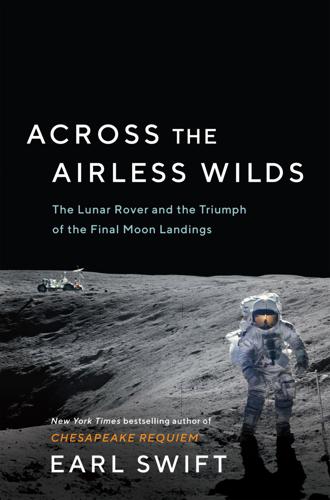
Across the Airless Wilds: The Lunar Rover and the Triumph of the Final Moon Landings
by
Earl Swift
Published 5 Jul 2021
After his death, his native Poland recognized his lifetime contributions to transportation engineering, something it had not done during the Cold War. “We never forgot Professor Bekker,” an admirer at the Warsaw University of Technology said, “but for years, we could only whisper his name in the hallways.” The rocker-bogie’s success on the Pathfinder mission recommended it for the next generation of Mars rovers, Spirit and Opportunity, which landed on opposite sides of the planet in January 2004. Much larger, heavier, and stabler, they were built to undertake ninety-day quests for evidence that water once flowed there. Like Sojourner, they far outstripped their design specs: Spirit lasted six years. Opportunity lasted more than fourteen, during which it covered more than twenty-eight miles, giving it the off-Earth land distance record.
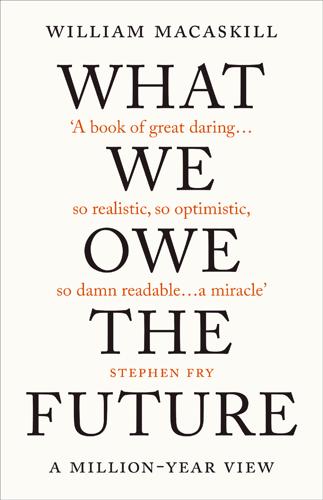
What We Owe the Future: A Million-Year View
by
William MacAskill
Published 31 Aug 2022
See value lock-in lock-in paradox, 101–102 Long Peace, 114 long reflection, 98–99 longtermism arguments for and against, 4–7, 257–261 concerns for future generations, 10–12 contingency of moral norms, 71–72 empowering future generations, 9 expedition into uncharted terrain, 6–7 longterm consequences of small actions, 173–175 perspective on civilisational stagnation, 159–163 population ethics, 168–171 the size of the future, 19 understanding the implications of, 229–230 values changes, 53–55 lottery winners, 203 Lustig, Richard, 203 lying, negative effects of, 241 Lyons, Oren, 11 Macaulay, Zachary, 69 MacFarquhar, Larissa, 168 machine learning artificial general intelligence development, 80–81 predicting AGI completion, 90–91 See also artificial general intelligence; artificial intelligence mammals evolution of, 4, 13(fig.) lifespan, 13, 13(fig.) megafauna, 29–30 Mao Zedong, 218–219 Marlowe, Frank, 206–207 Mars rovers, 189 mathematics Islamic Golden Age, 143 noncontingency, 32–33 Mauritania: abolition of slavery, 69–70 McKibben, Bill, 43 medicine: expected value theory in decisionmaking, 38 megafauna, 29–30 megatherium, 29 Mercy for Animals, 72–73 Metaculus forecasting platform, 113, 116 metaphors of humanity, history, and longtermism, 6–7 Middle Ages: history of civilisational stagnation, 157 migration.

The Long History of the Future: Why Tomorrow's Technology Still Isn't Here
by
Nicole Kobie
Published 3 Jul 2024
If it all sounds simple now, that’s because we’re used to technologies formed around ‘ShakeyTech’, be it natural language processing as seen in Siri or Alexa, computer vision for driverless cars or navigation systems for your non-driverless car. The ‘A*’ algorithm developed by Rosen’s team to help Shakey plan its route between stub-walled rooms is at the core of satnav, the path a video game character takes and even how Mars rovers get around. By considering time, distance and other inputs, the A* model looks to minimise the sum of such costs, and does so with much less effort than other techniques, helped by the fact it only works a few steps ahead. Search for a route from Mountain View to Times Square, Hart says, and Google Maps has an entire map of the US to consider, while A* just works a few turns ahead; as soon as a potential route becomes longer than other options, that work is halted rather than waste time.
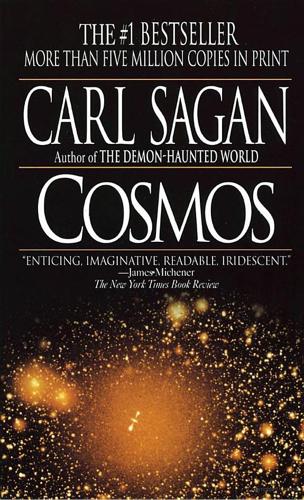
Cosmos
by
Carl Sagan
Published 1 Jan 1980
At parties, when I meet people who do not know I am a scientist, I am sometimes asked, “Are you a Gemini?” (chances of success, one in twelve), or “What sign are you?” Much more rarely am I asked, “Have you heard that gold is made in supernova explosions?” or “When do you think Congress will approve a Mars Rover?” Astrology contends that which constellation the planets are in at the moment of your birth profoundly influences your future. A few thousand years ago, the idea developed that the motions of the planets determined the fates of kings, dynasties, empires. Astrologers studied the motions of the planets and asked themselves what had happened the last time that, say, Venus was rising in the Constellation of the Goat; perhaps something similar would happen this time as well.
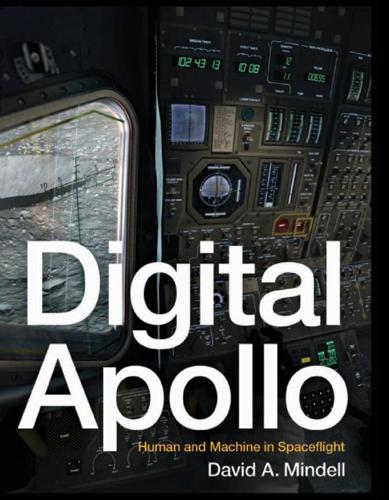
Digital Apollo: Human and Machine in Spaceflight
by
David A. Mindell
Published 3 Apr 2008
Such rhetoric has arguably produced more heat than light in recent decades, although the stakes are high as NASA determines new policy directions. Yet the advocates for either side usually neglect or misunderstand the mixings and combinations of manual and automated, especially experiences made possible by communications links and remote controls. The Mars rovers named Spirit and Opportunity that captured public imagination in recent years, for example, are less ‘‘robots’’ acting as autonomous agents than ‘‘telerobots’’ responding to commands from the earth and providing data for ground controllers, scientists, and the public to experience a foreign world from afar.
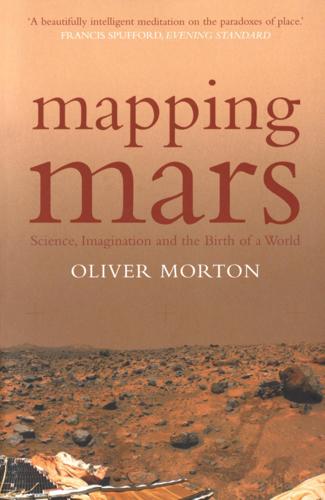
Mapping Mars: Science, Imagination and the Birth of a World
by
Oliver Morton
Published 15 Feb 2003
Cameron is, as his films suggest, a world-class gadget freak, endowed with a fertile engineering imagination and a prodigious capacity for absorbing and caring about technical details. If he was going to design a Mars mission, he was going to do it right. One of his more striking insights was that the traditional portrayal of Mars rovers as vacuum-proof Winnebagoes designed to move people around might be misleading. Given the problems and risks of spacesuit work and the time taken up by preparing for even a simple EVA, a lot of field-work might actually be done from within the rovers by means of remote manipulator arms. The rovers would be like wheeled versions of the deep-sea submersibles he had used to film Titanic, mobile bases for the control of remotely piloted vehicles, with samples passed in to the researchers through small airlocks.
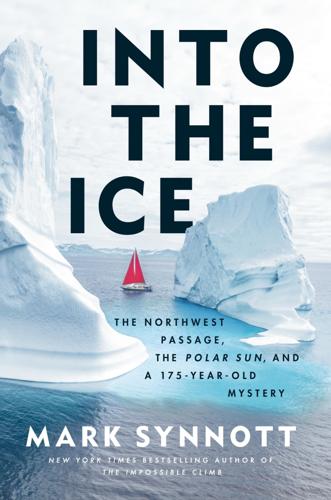
Into the Ice: The Northwest Passage, the Polar Sun, and a 175-Year-Old Mystery
by
Mark Synnott
Published 14 Apr 2025
Here and there, tongues of tired-looking glaciers spilled through gaps in these ramparts, and where they met the shoreline, milky plumes of fresh water drew ripples in the sea. Renan put his drone up and took aerial photos, which showed our little ship with its bright red sails running along the edge of a landscape so desolate that NASA had chosen it as a site to test Mars rovers. When we had motored into the bay that lies on the east side of Beechey Island around midnight on August 13, the setting sun radiated a soft light along the skyline of a distant plateau. The Franklin expedition had anchored in this same spot in September 1845. Their last contact with the outside world had been back on July 26, exactly two weeks after departing the Whale Fish Islands, when two British whaling ships, Prince of Wales and Enterprise, found Erebus and Terror moored to a large iceberg in Baffin Bay.

Physics of the Future: How Science Will Shape Human Destiny and Our Daily Lives by the Year 2100
by
Michio Kaku
Published 15 Mar 2011
Instead, he built nimble “insectoids” or “bugbots” that had almost no programming at all but would quickly learn to walk and navigate around obstacles by trial and error. He envisioned the day that his robots would explore the solar system, bumping into things along the way. It was an outlandish idea, proposed in his essay “Fast, Cheap, and Out of Control,” but his approach eventually led to an array of new avenues. One by-product of his idea is the Mars Rovers now scurrying over the surface of the Red Planet. Not surprisingly, he was also the chairman of iRobot, the company that markets buglike vacuum cleaners to households across the country. One problem, he feels, is that workers in artificial intelligence follow fads, adopting the paradigm of the moment, rather than thinking in fresh ways.

Beautiful Data: The Stories Behind Elegant Data Solutions
by
Toby Segaran
and
Jeff Hammerbacher
Published 1 Jul 2009
It was obvious from the outset that a minimum of two tasks would be needed for the surface image processing, one for each of the cameras. The SSI and RAC/OM were very different beasts, with different command sets and different operating characteristics. The SSI used all new controller hardware and incorporated CCD imagers identical to those used on the Mars Rovers. The RAC and OM imagers were originally built by the Max Planck Institute in Germany, and had been around for a while (one of the original designs was flown on the Huygens probe that landed on Titan). The RAC/OM controller hardware was actually a flight spare unit from the ill-fated Mars ‘98 mission, which apparently met a tragic end when its descent engines shut off prematurely a few hundred feet above the surface of Mars.

Terms of Service: Social Media and the Price of Constant Connection
by
Jacob Silverman
Published 17 Mar 2015
(To be fair, Klout did later update its algorithm, moving Obama past Bieber.) Klout also has rated some Twitter bots as quite influential, despite the fact that its algorithm is supposed to account for people’s fake followers. It also tends to mistake which topics users are influential on—if I made some jokes about NASA’s Mars rover (always a crowd pleaser) that got a lot of retweets, Klout might suddenly decide I’m influential about planets, but a few tweets on the subject don’t make me an astrophysicist. And of course, the very idea of being “influential” on certain subjects is a rather vague claim. What does that mean? That I’m knowledgable?
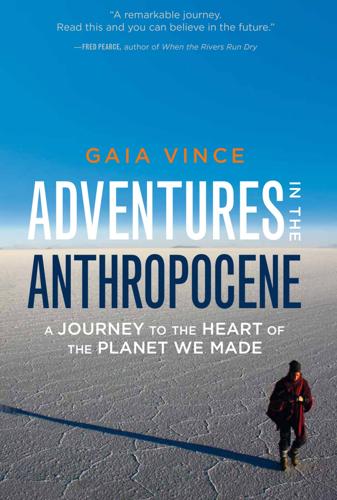
Adventures in the Anthropocene: A Journey to the Heart of the Planet We Made
by
Gaia Vince
Published 19 Oct 2014
Near the Chilean and Argentine borders, we pass salt flats of borax, being mined for export, the wind casting veils of white dust over their shimmering expanses. The lakes are glassy with ice and spiked with crystals of algae and salts on a terracotta backdrop of mountains and volcanoes, the biggest of which, Licancabur, is so alien that NASA tested its Mars Rover in its crater. In that same crater, 5,916 metres up, were found the mummified corpses of sacrificed young girls, sent there by the Incas to freeze to death. After two days and nights, we enter the surreal landscape of the world’s biggest salt flat, visible by Neil Armstrong from the moon. At 10,500 square kilometres, it’s the size of a small country, or a sea – which it was once.

Character Limit: How Elon Musk Destroyed Twitter
by
Kate Conger
and
Ryan Mac
Published 17 Sep 2024
“They’re trying to sway public opinion and sometimes it can be very difficult to figure out what’s real public opinion and what’s not, and what do people actually want, what are people actually upset about versus manipulation of the system by various interest groups.” He then leapt into discussion of the Mars Rover. Interplanetary tweets might flow within nine years, the billionaire supposed. Then Dorsey asked him for feedback. “What are we doing poorly, what could we be doing better, and what’s your hope for our potential as a service?” Dorsey asked. Then added, “If you were running Twitter—by the way, do you want to run Twitter?”
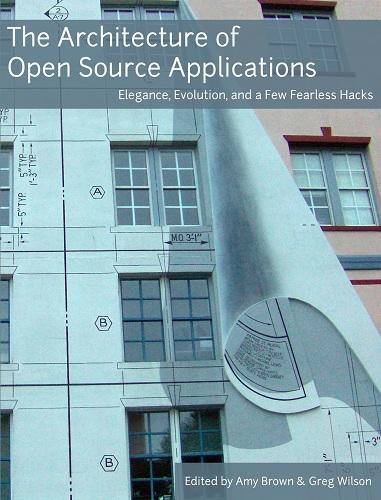
The Architecture of Open Source Applications
by
Amy Brown
and
Greg Wilson
Published 24 May 2011
Since Eclipse was initially constructed with an IDE-centric focus, there had to be some refactoring of the bundles to allow this use case to be more easily adopted by the user community. RCP applications didn't require all the functionality in the IDE, so several bundles were split into smaller ones that could be consumed by the community for building RCP applications. Examples of RCP applications in the wild include the use of RCP to monitor the Mars Rover robots developed by NASA at the Jet Propulsion Laboratory, Bioclipse for data visualization of bioinformatics and Dutch Railway for monitoring train performance. The common thread that ran through many of these applications was that these teams decided that they could take the utility provided by the RCP platform and concentrate on building their specialized tools on top of it.

Wired for War: The Robotics Revolution and Conflict in the 21st Century
by
P. W. Singer
Published 1 Jan 2010
There are difficult technologic problems to be overcome and each one of these is a paper or a thesis.” And what happened to Stanley? After its win, Stanley was declared the number one robot of all time by Wired magazine, beating out a list of fifty other real and fictional robots that ranged from Spirit, NASA’s Mars rover, to Optimus Prime from Transformers. Stanley is now at the Smithsonian Museum of American History, sharing the stage with such other important historical artifacts as the “Star-Spangled Banner” that flew over Fort McHenry and the jacket that Fonzie wore on Happy Days. THERE IS NO EUREKA In the world of science fiction, research usually takes place in super-secret government labs or mysterious places like “Area 51,” the Nevada desert setting of more than sixty movies, TV shows, and video games.
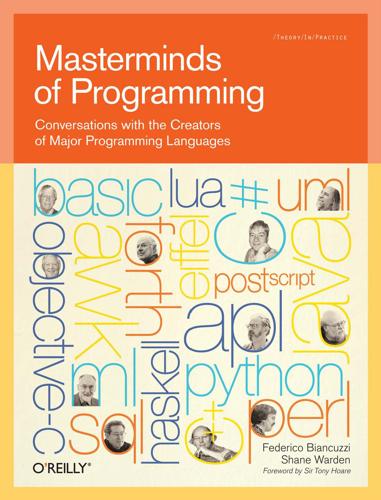
Masterminds of Programming: Conversations With the Creators of Major Programming Languages
by
Federico Biancuzzi
and
Shane Warden
Published 21 Mar 2009
You may not be particularly keen on military planes, but there is nothing particularly military about the way C++ is used and well over 100,000 copies of the JSF++ coding rules have been downloaded from my home pages in less than a year, mostly by nonmilitary embedded systems developers, as far as I can tell. C++ has been used for embedded systems since 1984, many useful gadgets have been programmed in C++, and its use appears to be rapidly increasing. Examples are mobile phones using Symbian or Motorola, the iPods, and GPS systems. I particularly like the use of C++ on the Mars rovers: the scene analysis and autonomous driving subsystems, much of the earth-based communication systems, and the image processing. People who are convinced that C is necessarily more efficient than C++ might like to have a look at my paper entitled “Learning Standard C++ as a New Language” [C/C++ Users Journal, May 1999], which describes a bit of design philosophy and shows the result of a few simple experiments.

Full Catastrophe Living (Revised Edition): Using the Wisdom of Your Body and Mind to Face Stress, Pain, and Illness
by
Jon Kabat-Zinn
Published 23 Sep 2013
Still, we are already in a world in which our access to information never sleeps, and goes with us everywhere through our various portable wireless devices, Twitter feeds, Facebook posts, and automatic downloads. Personal robots are on the horizon, their prototypes already at work in specialized venues such as the Mars rovers and available commercially in toys such as Furbys. Fully digitized houses are on the way. While these and other emergences may turn out to be liberating in some ways and give us more freedom and flexibility, we will also have to be on our guard against being sucked into a mode of living in which each of us is reduced to being a walking information processor and entertainment consumer.

Western USA
by
Lonely Planet
The teen-friendly New Mexico Museum of Natural History & Science (www.nmnaturalhistory.org; 1801 Mountain Rd NW; adult/under 13yr $7/4; 9am-5pm; ) features an Evolator (evolution elevator), which transports visitors through 38 million years of New Mexico’s geologic and evolutionary history. The new Space Frontiers exhibit highlights the state’s contribution to space exploration, from ancient Chaco observatories to an impressive, full-scale replica of the Mars Rover. The museum also contains a Planetarium (adult/child $7/4) and the newly 3-D IMAX-screened DynaTheater (adult/child $7/4). Tours From mid-March to mid-December, the Albuquerque Museum of Art & History offers informative, guided Old Town walking tours ( 11am Tue-Sun). They last 45 minutes to an hour and are free with museum admission.

Artificial Intelligence: A Modern Approach
by
Stuart Russell
and
Peter Norvig
Published 14 Jul 2019
Autonomous planning and scheduling: A hundred million miles from Earth, NASA’s Remote Agent program became the first on-board autonomous planning program to control the scheduling of operations for a spacecraft (Jonsson et al., 2000). Remote Agent generated plans from high-level goals specified from the ground and monitored the execution of those plans—detecting, diagnosing, and recovering from problems as they occurred. Today, the EUROPA planning toolkit (Barreiro et al., 2012) is used for daily operations of NASA’s Mars rovers and the SEXTANT system (Winternitz, 2017) allows autonomous navigation in deep space, beyond the global GPS system. During the Persian Gulf crisis of 1991, U.S. forces deployed a Dynamic Analysis and Replanning Tool, DART (Cross and Walker, 1994), to do automated logistics planning and scheduling for transportation.
…
For some specific tasks, such as operations scheduling, partial-order planning with domain-specific heuristics is the technology of choice. Many of these systems use libraries of high-level plans, as described in Section 11.4. Partial-order planning is also often used in domains where it is important for humans to understand the plans. For example, operational plans for spacecraft and Mars rovers are generated by partial-order planners and are then checked by human operators before being uploaded to the vehicles for execution. The plan refinement approach makes it easier for the humans to understand what the planning algorithms are doing and to verify that the plans are correct before they are executed. 11.3Heuristics for Planning Neither forward nor backward search is efficient without a good heuristic function.

1,000 Places to See in the United States and Canada Before You Die, Updated Ed.
by
Patricia Schultz
Published 13 May 2007
The Hall of Fame offers more hands-on displays than the Space Center itself, with actual Mission Control terminals at which you can sit to access interactive information, plus a series of simulators that show you what it’s like to be in space. Strap yourself into the G-force simulator and spin around until your cheeks start to flap. Across the room, a “Mission to Mars” rover sends you bumping over the surface of the red planet, and a “Walk on the Moon” simulator uses harnesses and counterweights to approximate weightlessness. Manned shuttles are scheduled to launch from Kennedy Space Center occasionally, but unmanned research rockets launch more frequently. WHERE: 45 miles east of Orlando.

USA Travel Guide
by
Lonely, Planet
The teen-friendly New Mexico Museum of Natural History & Science (www.nmnaturalhistory.org; 1801 Mountain Rd NW; adult/under 13yr $7/4; 9am-5pm; ) features an Evolator (evolution elevator), which transports visitors through 38 million years of New Mexico’s geologic and evolutionary history. The new Space Frontiers exhibit highlights the state’s contribution to space exploration, from ancient Chaco observatories to an impressive, full-scale replica of the Mars Rover. The museum also contains a Planetarium (adult/child $7/4) and the newly 3-D IMAX-screened DynaTheater (adult/child $7/4) . Tours From mid-March to mid-December, the Albuquerque Museum of Art & History offers informative, guided Old Town walking tours ( 11am Tue-Sun) . They last 45 minutes to an hour and are free with museum admission.